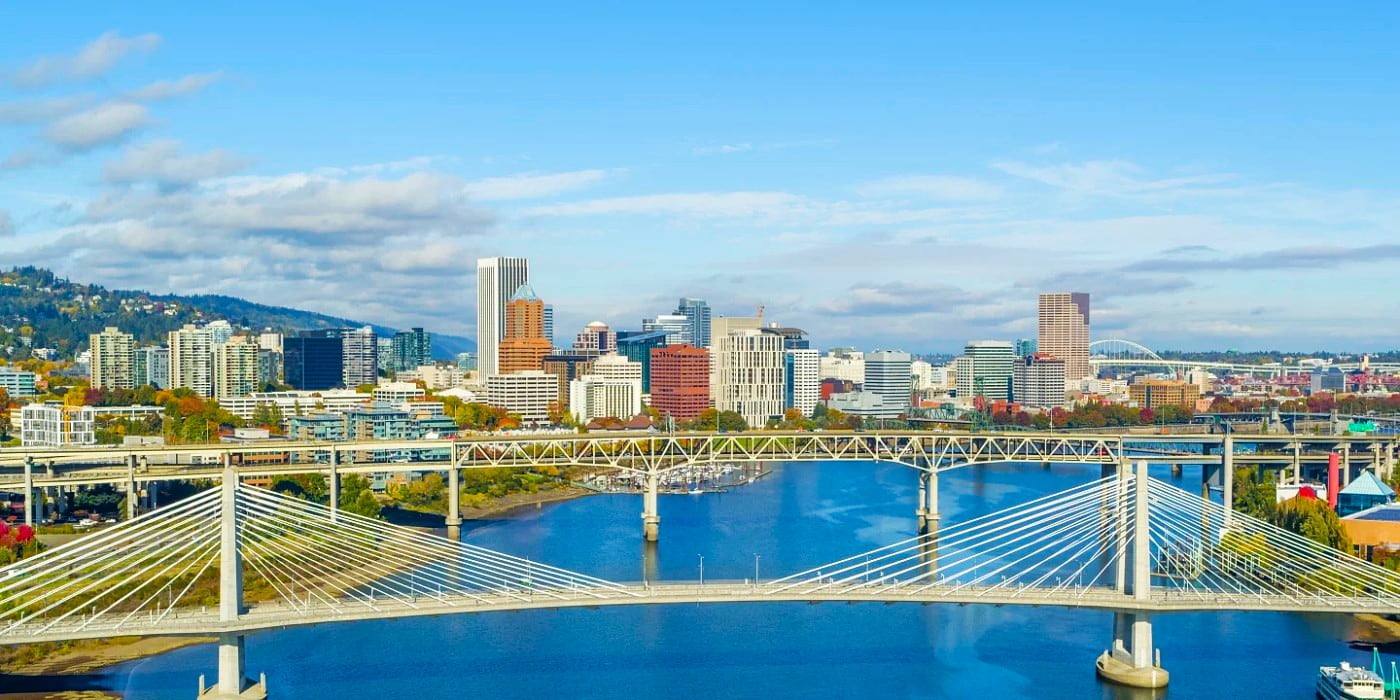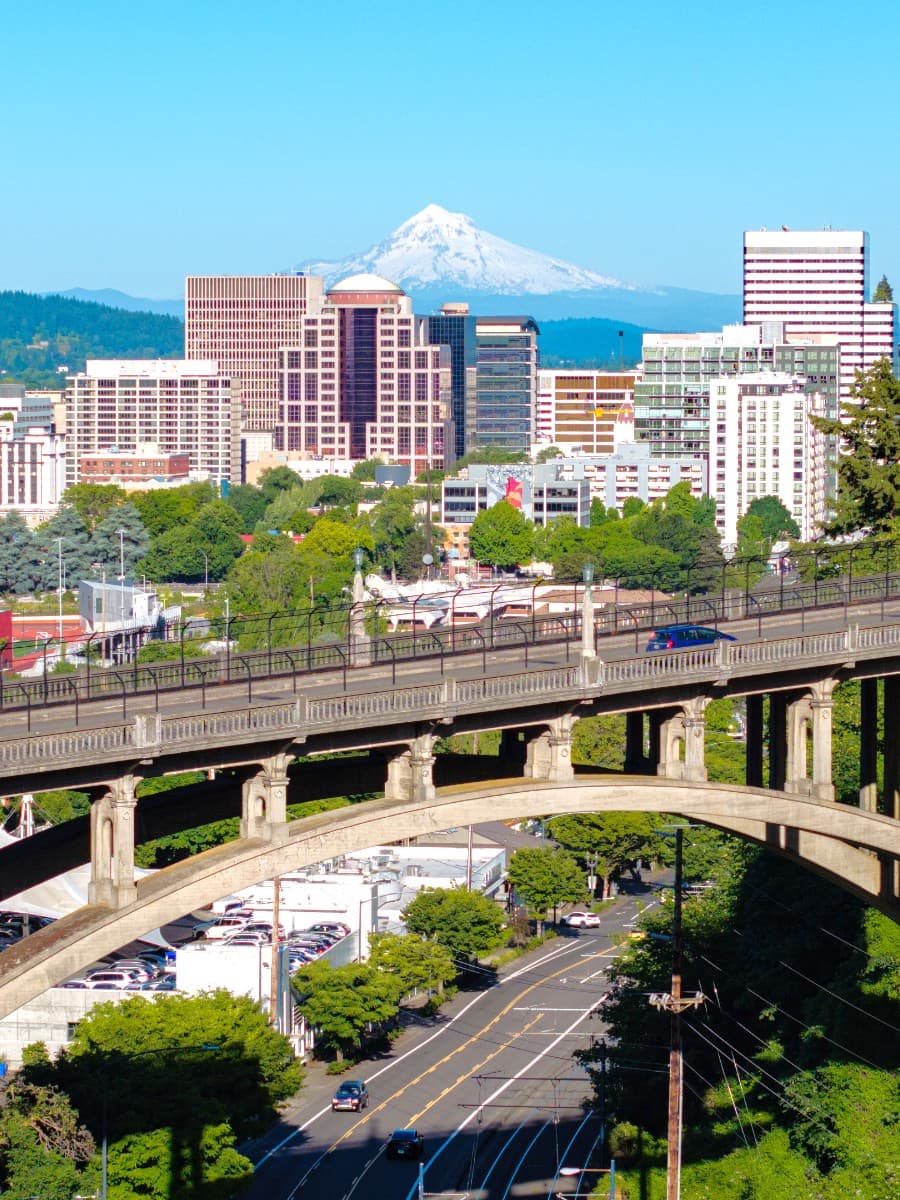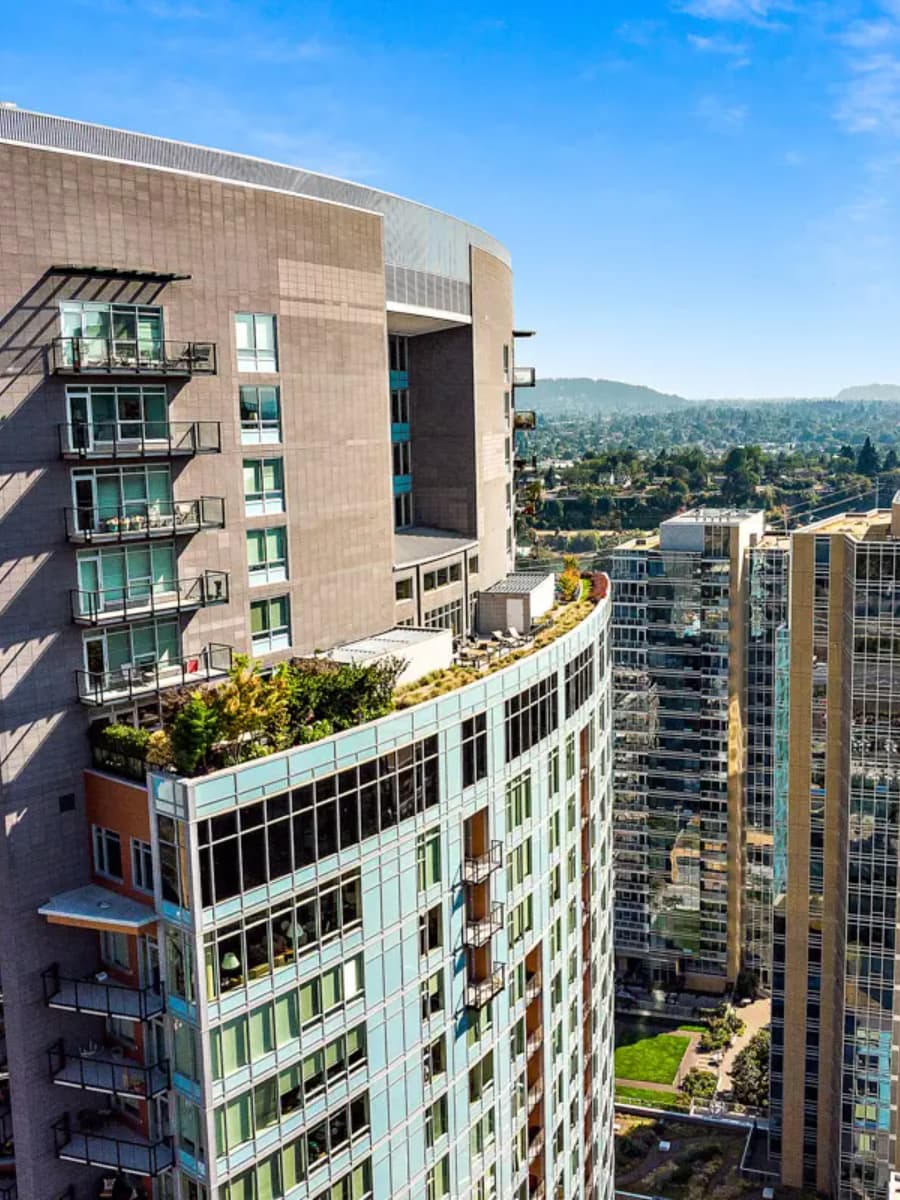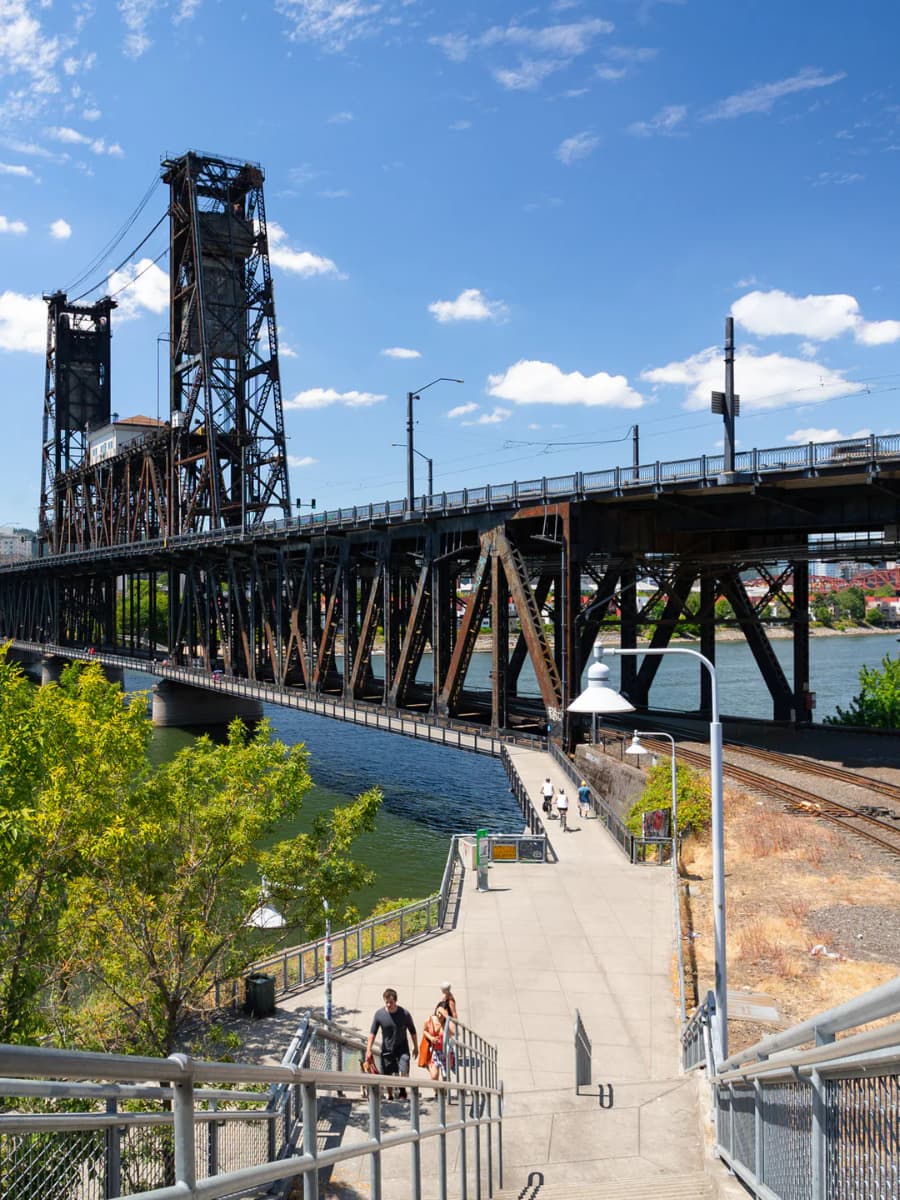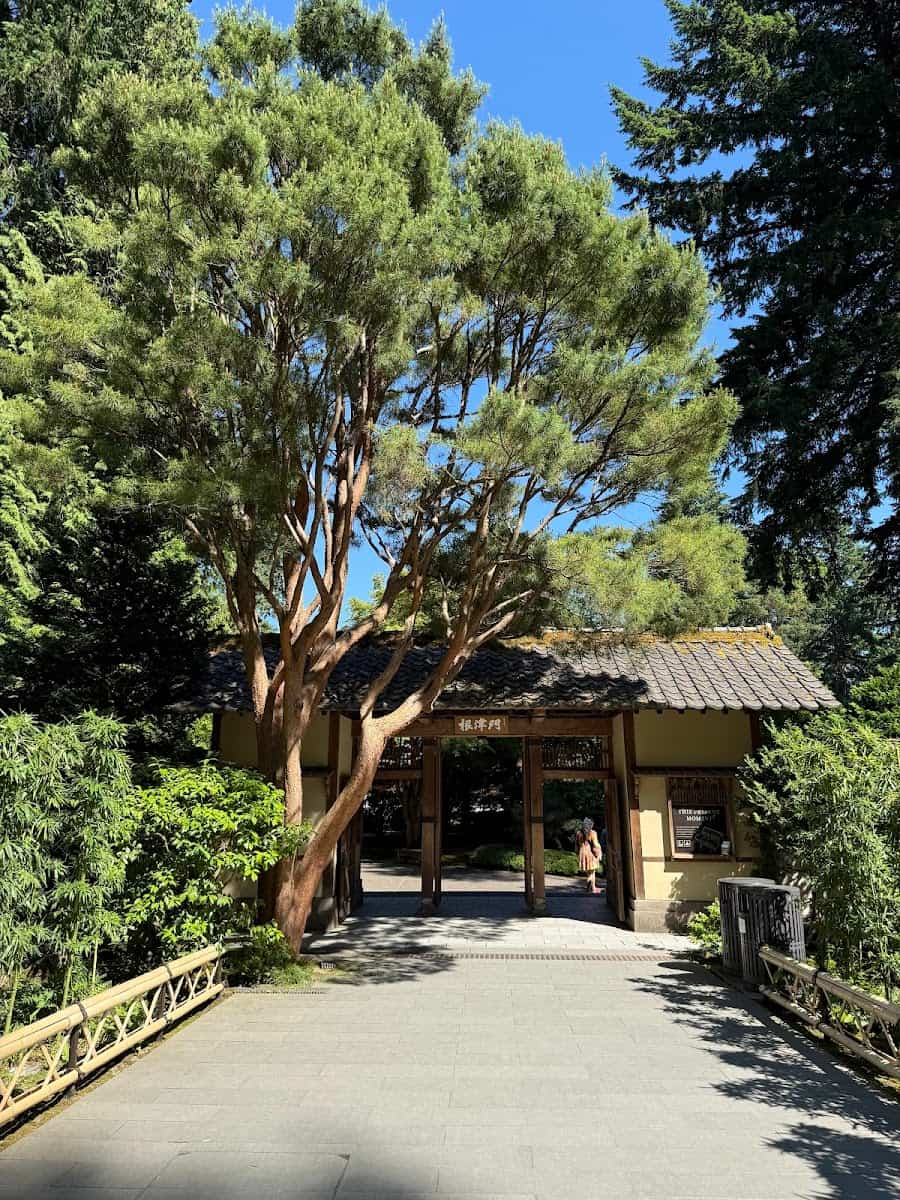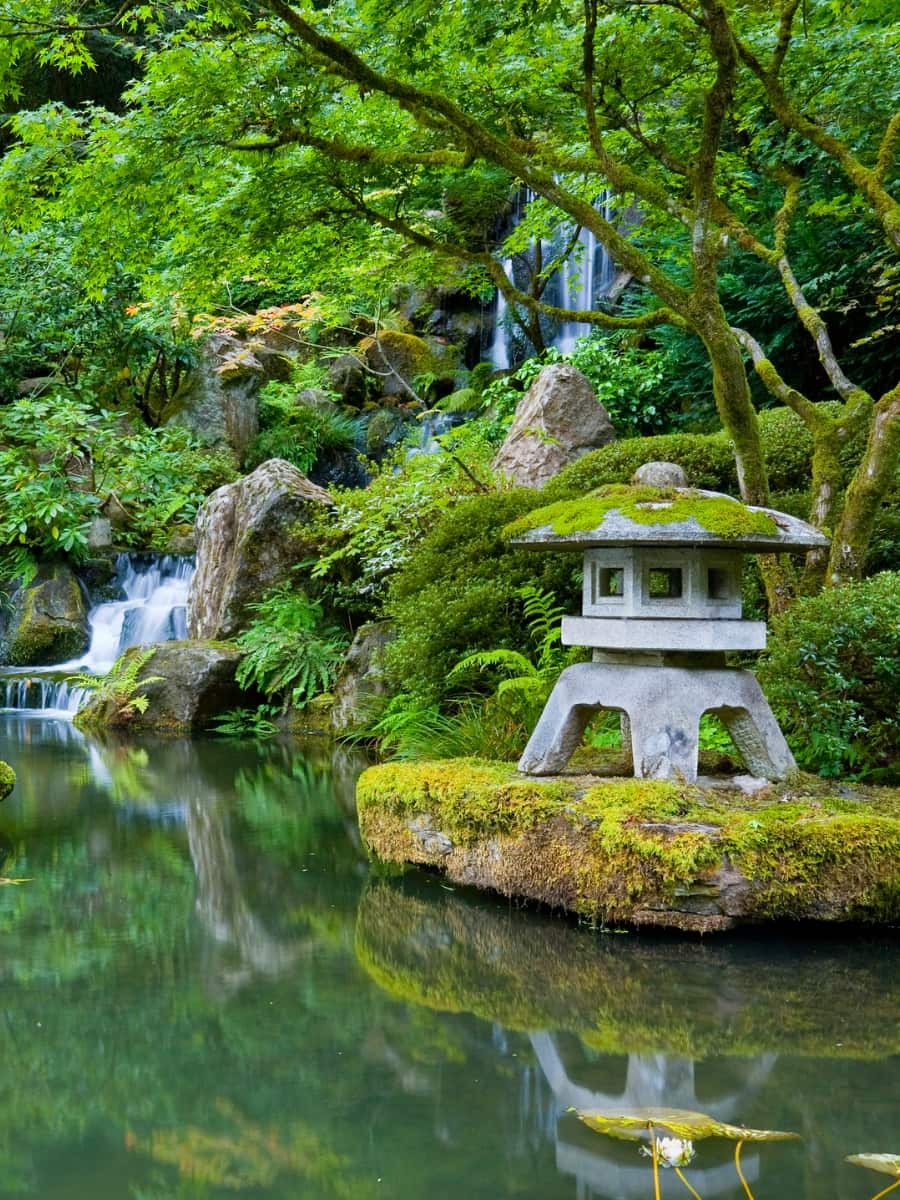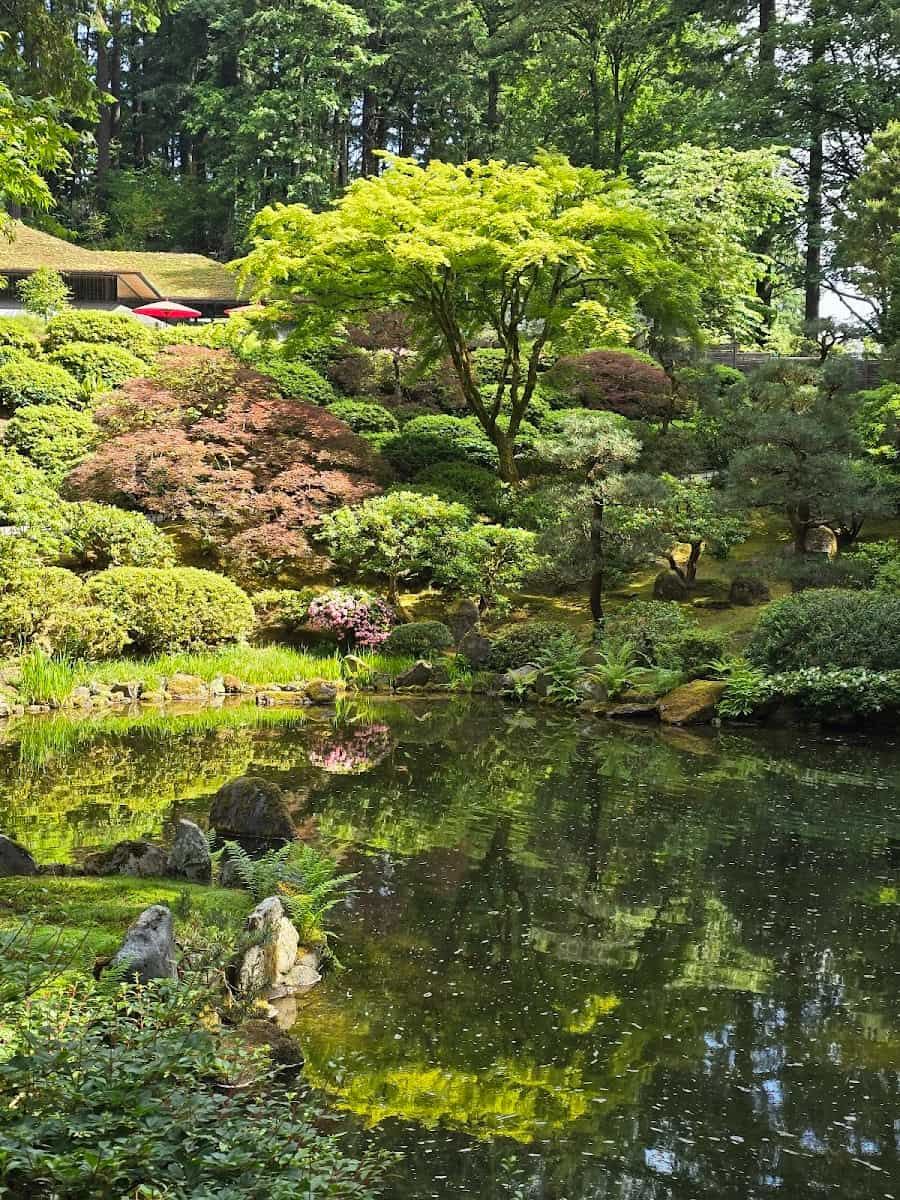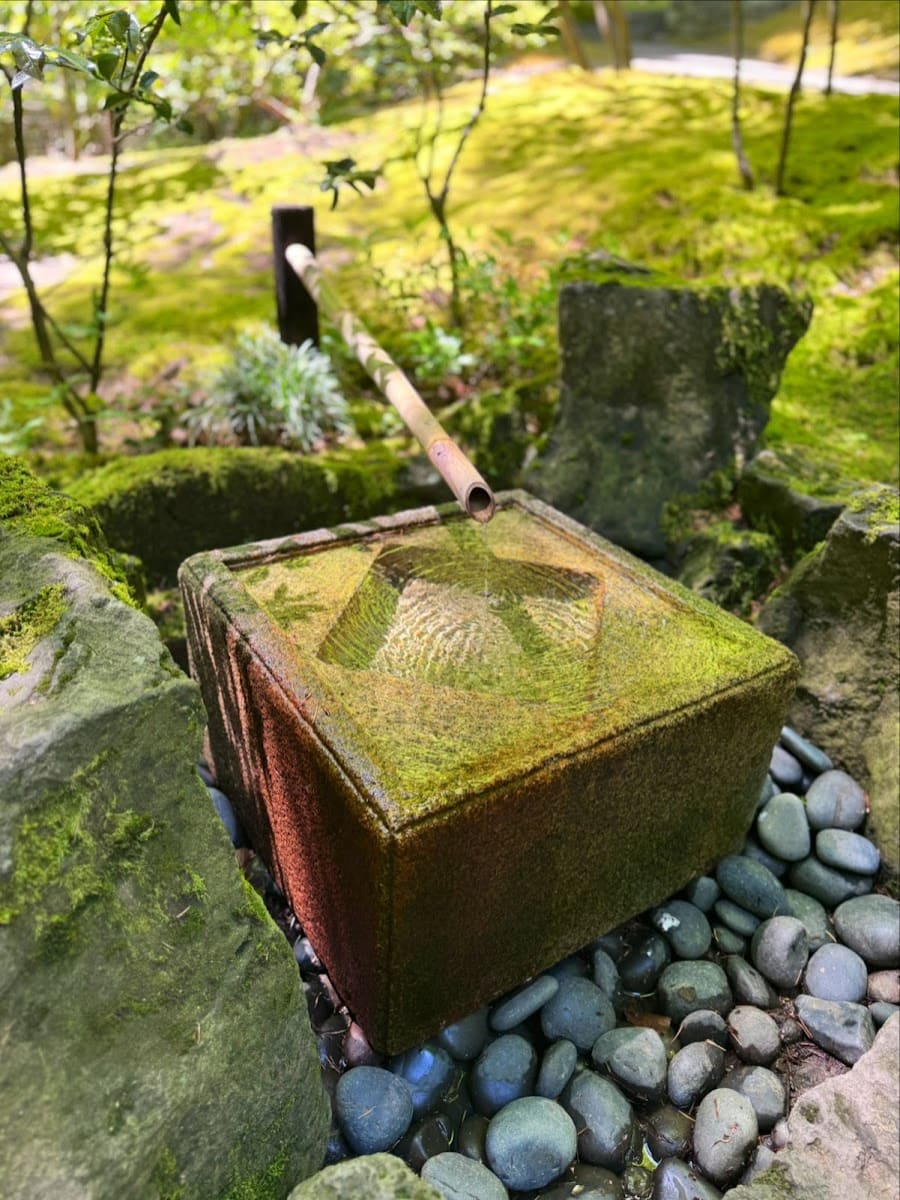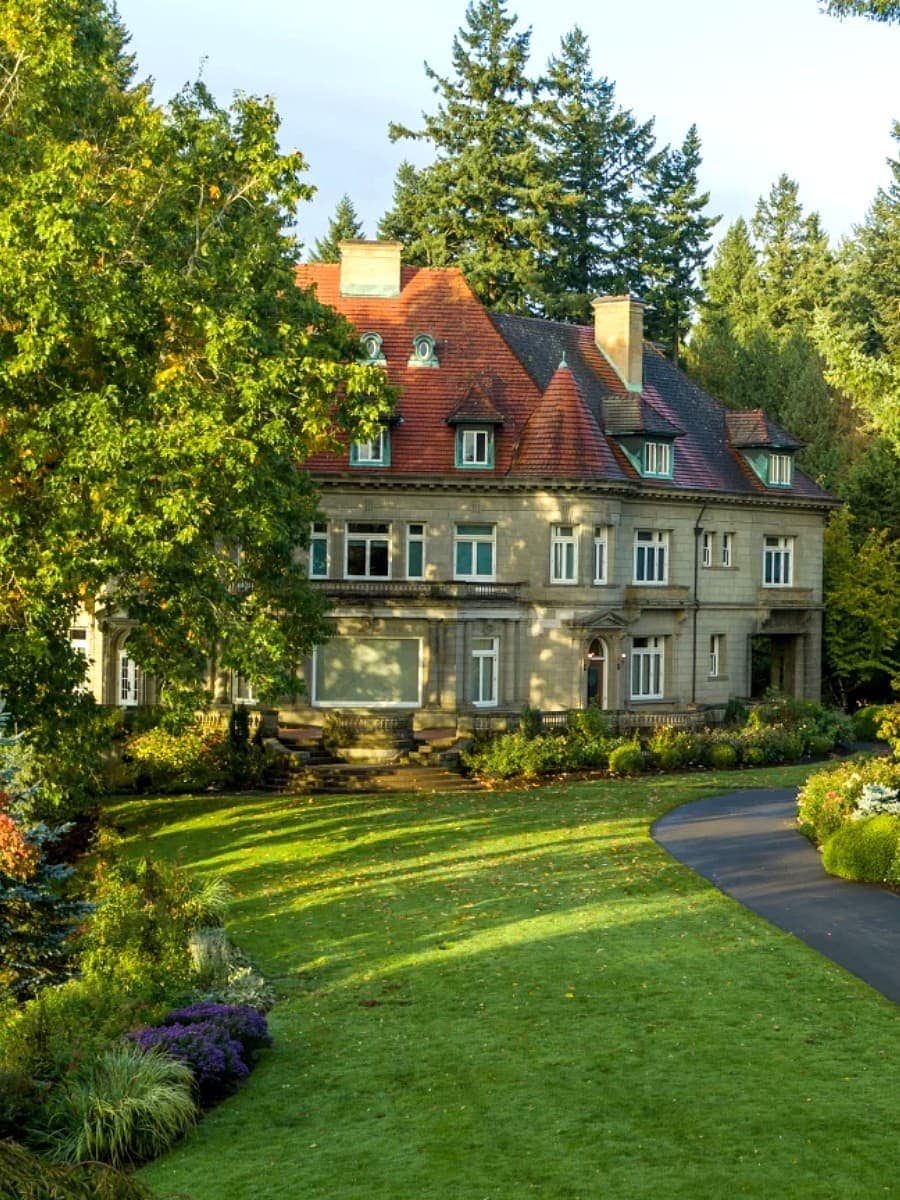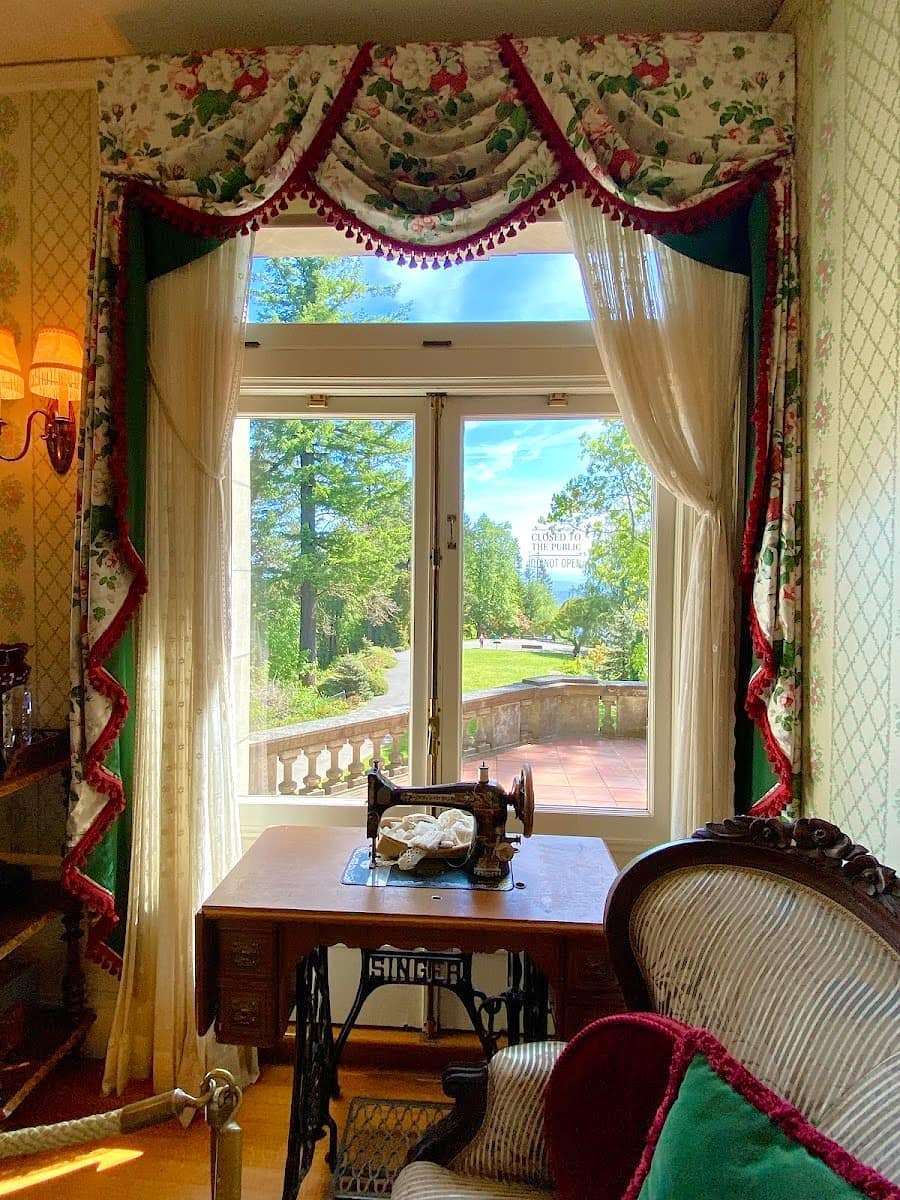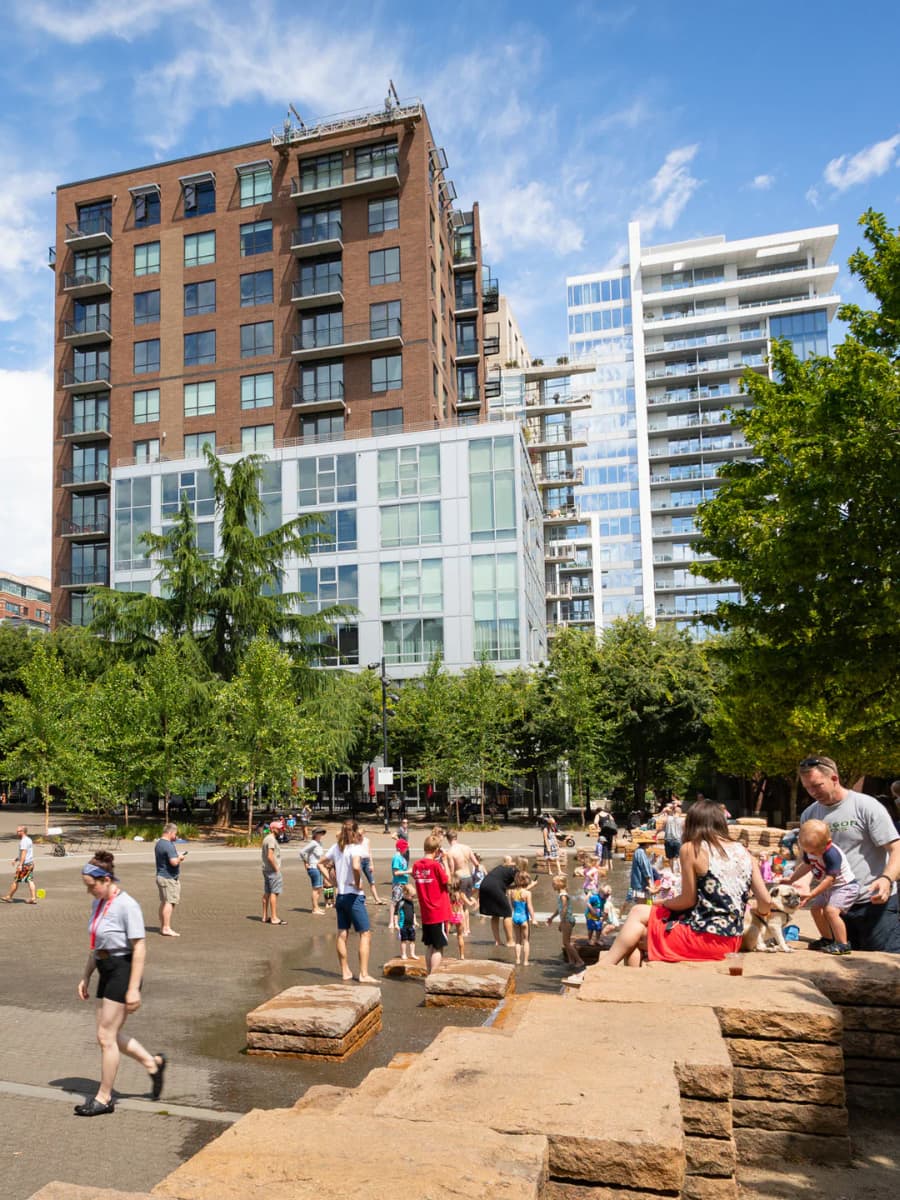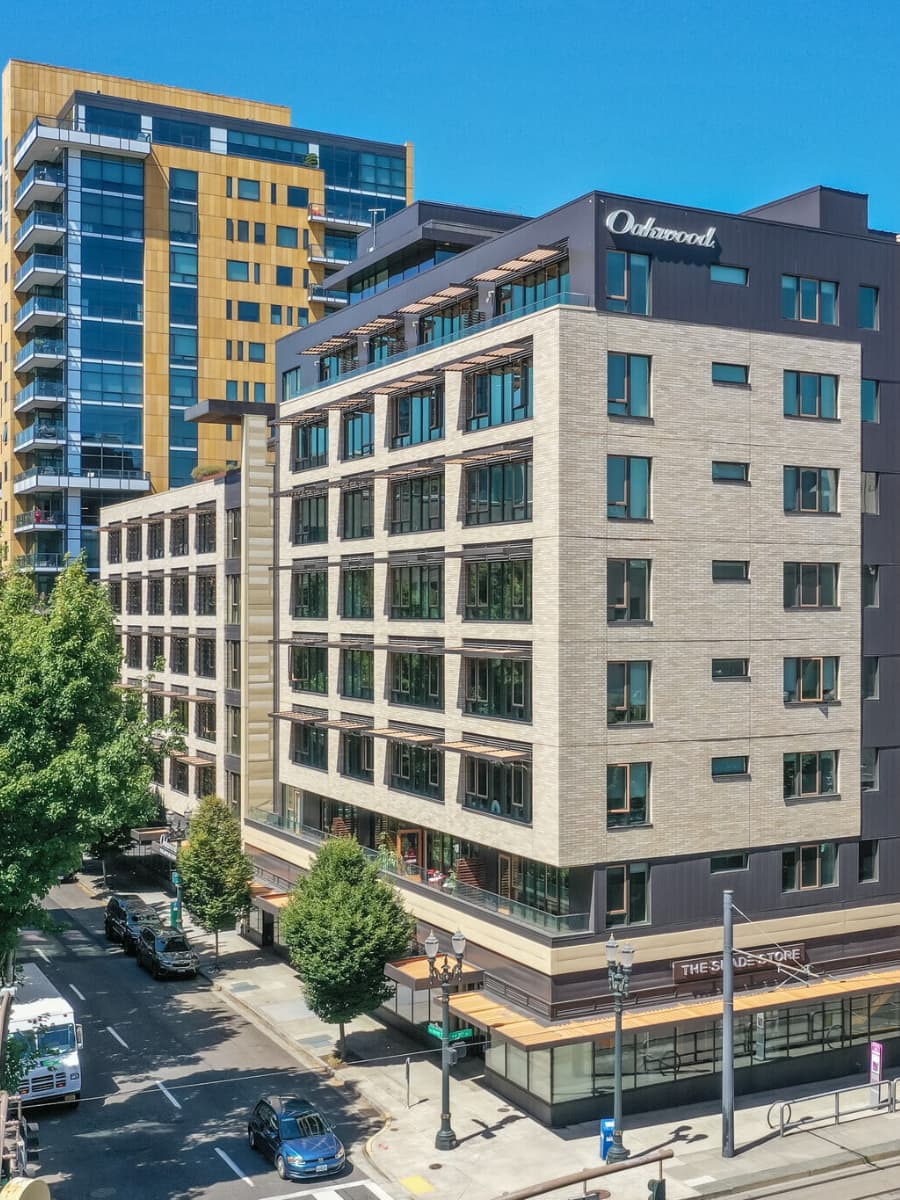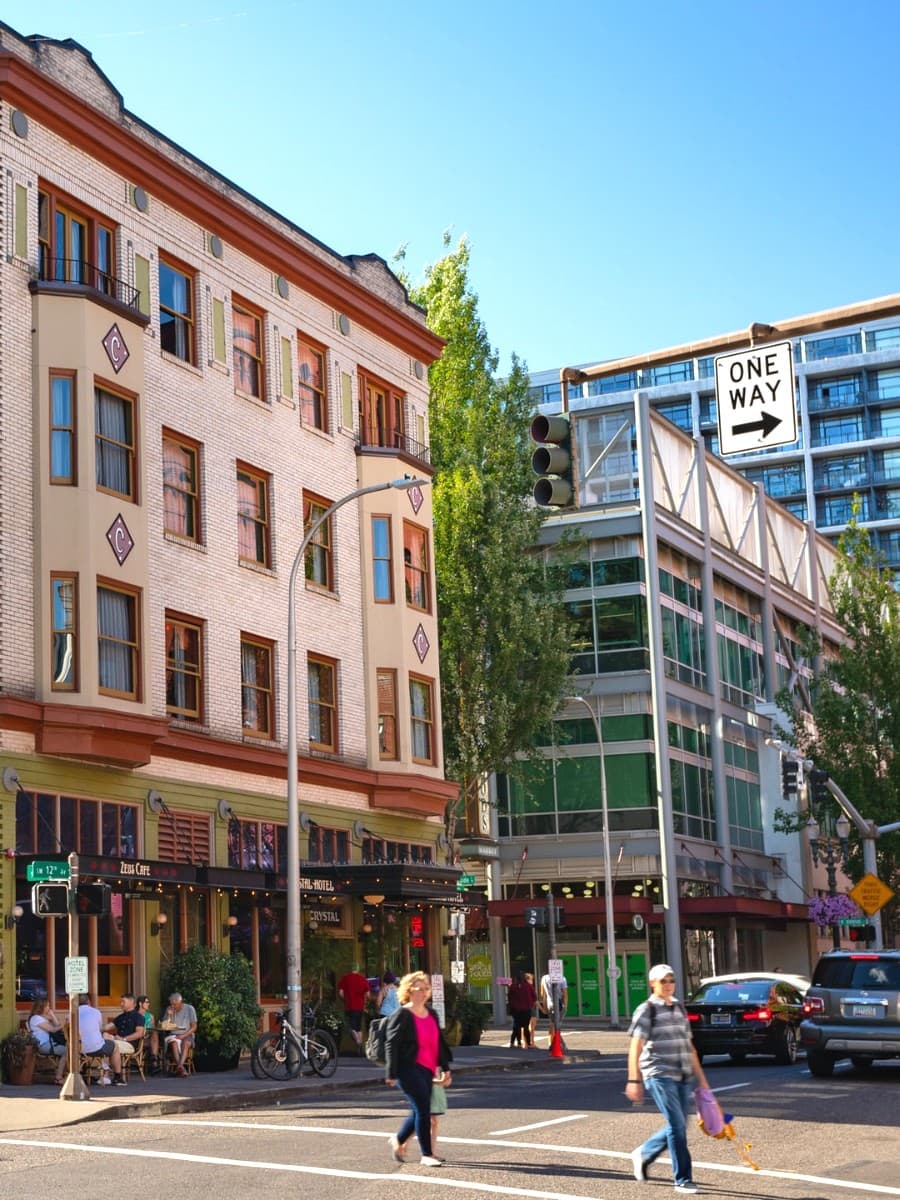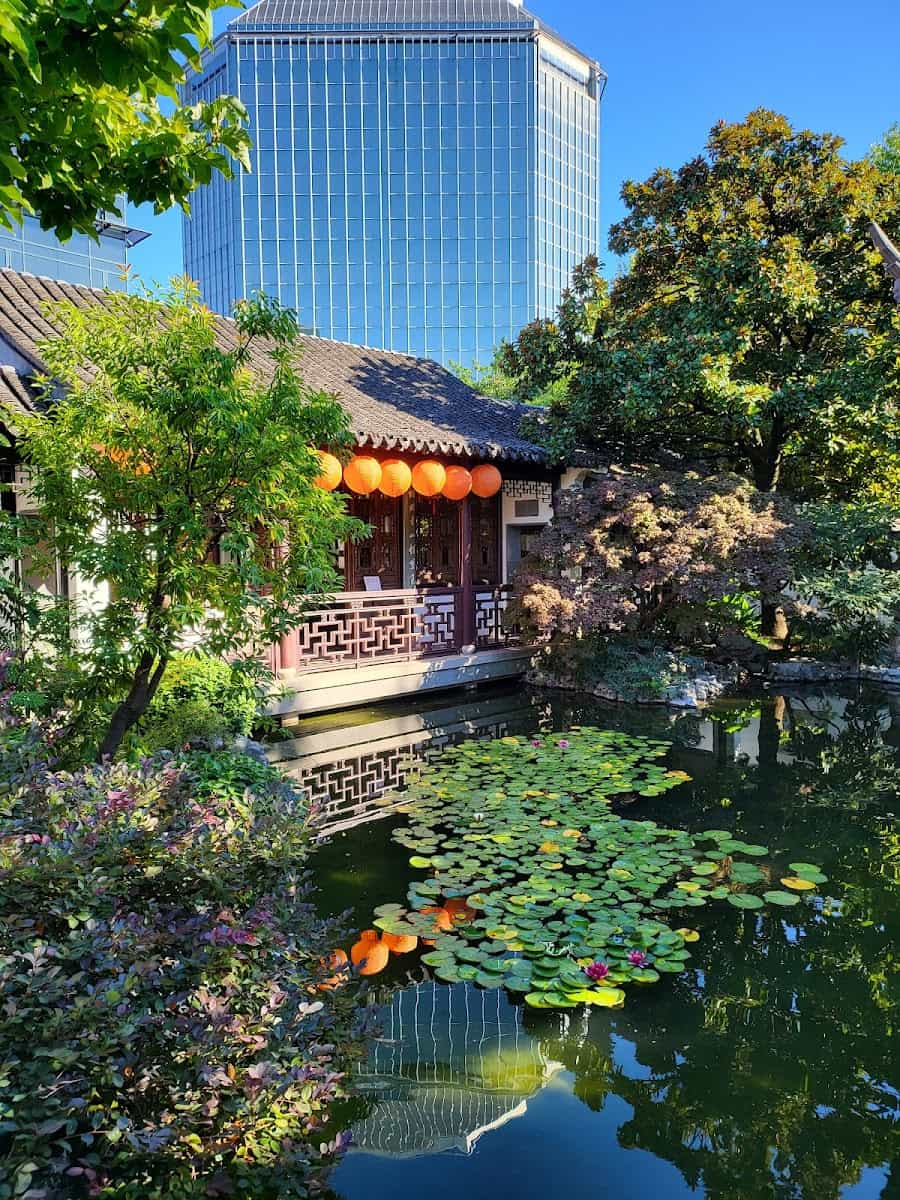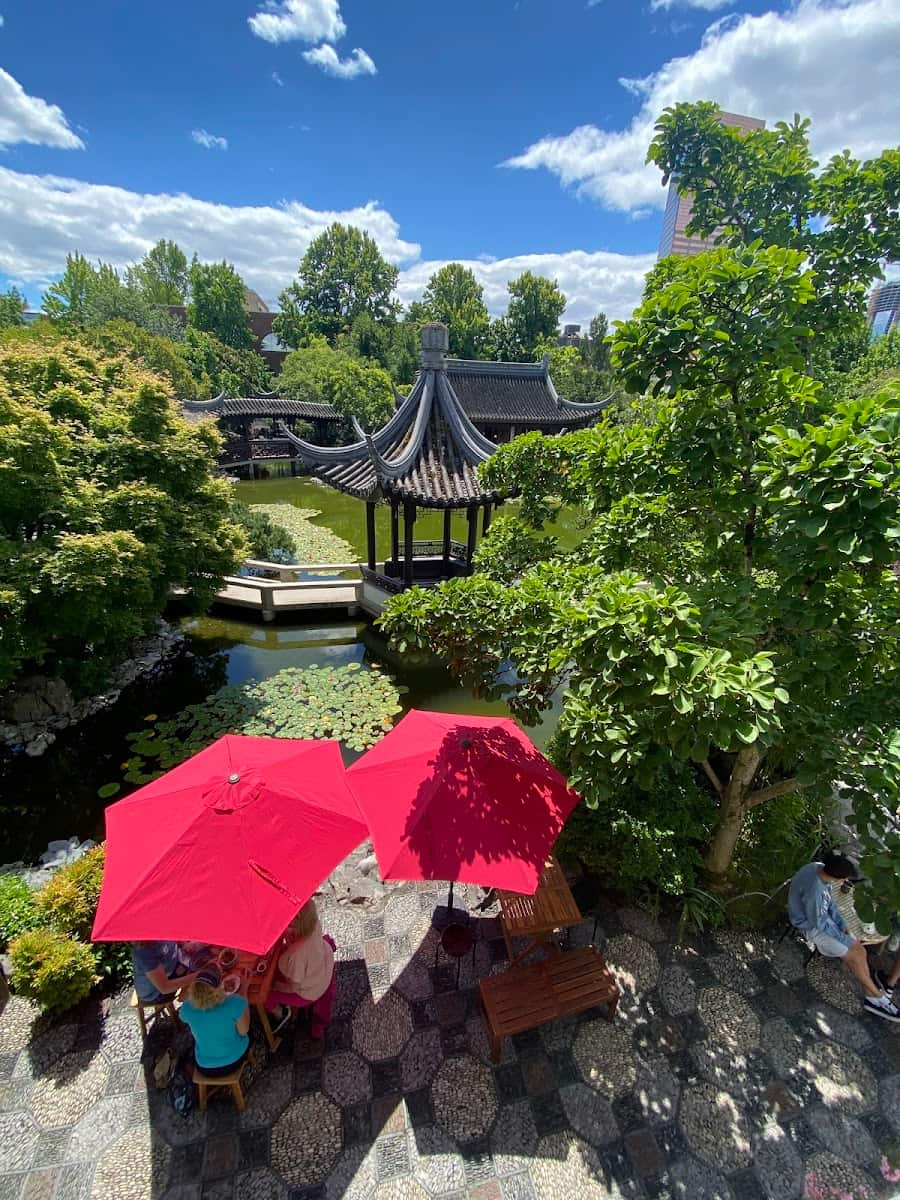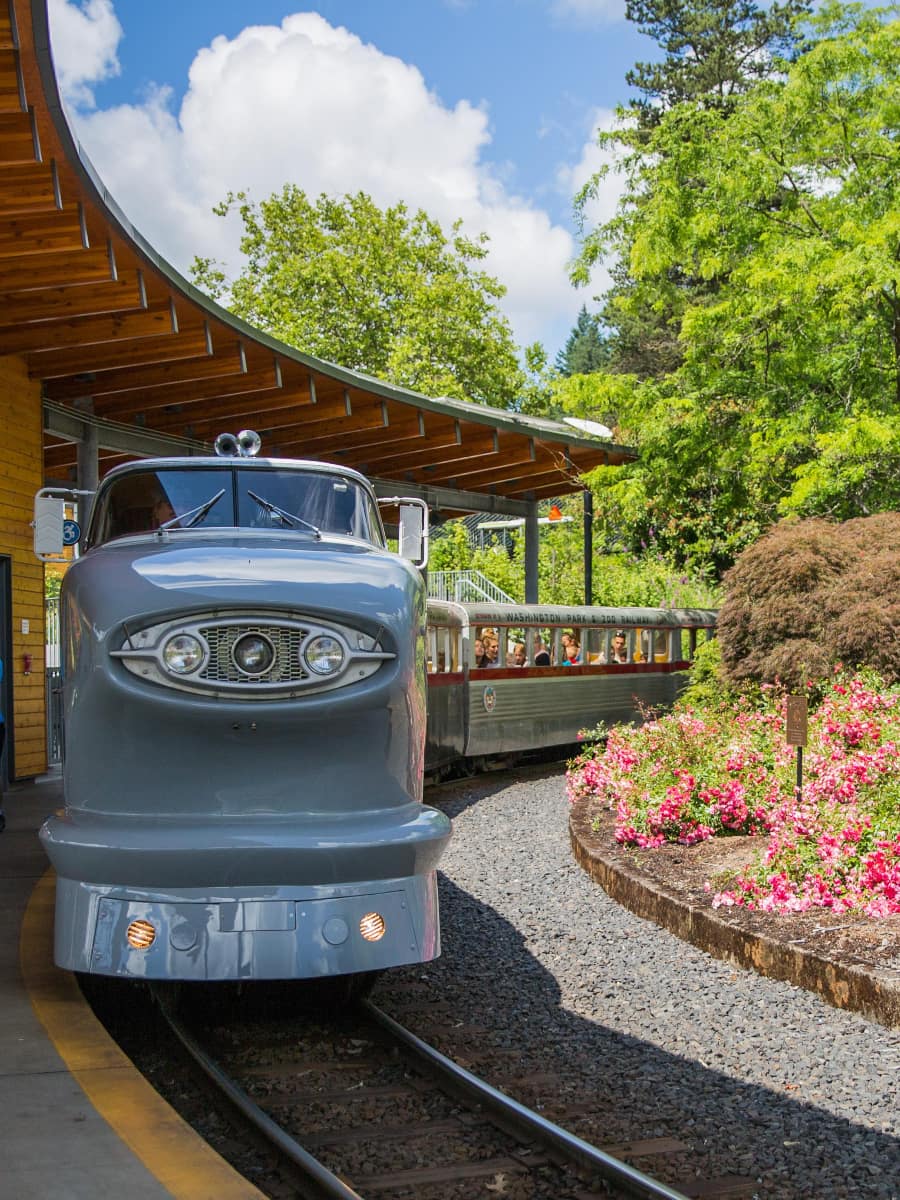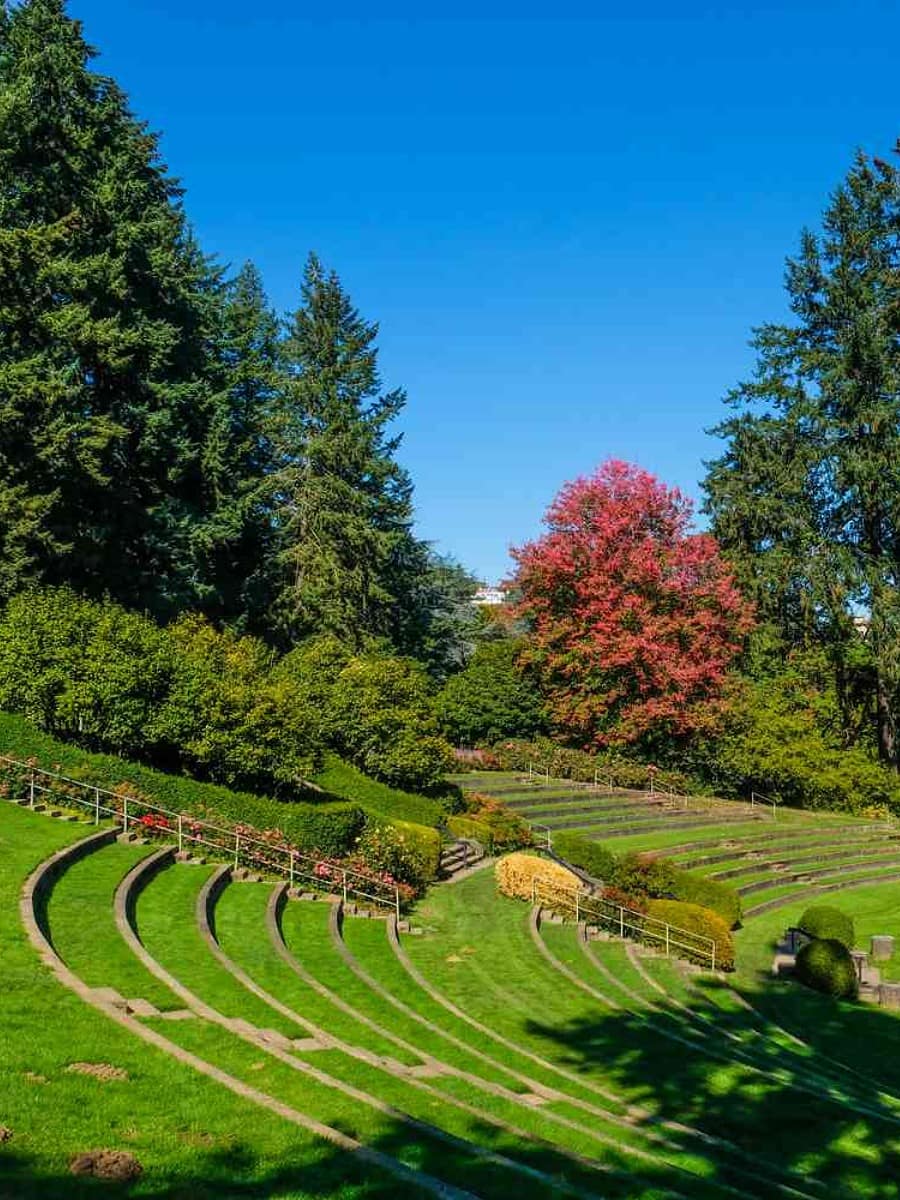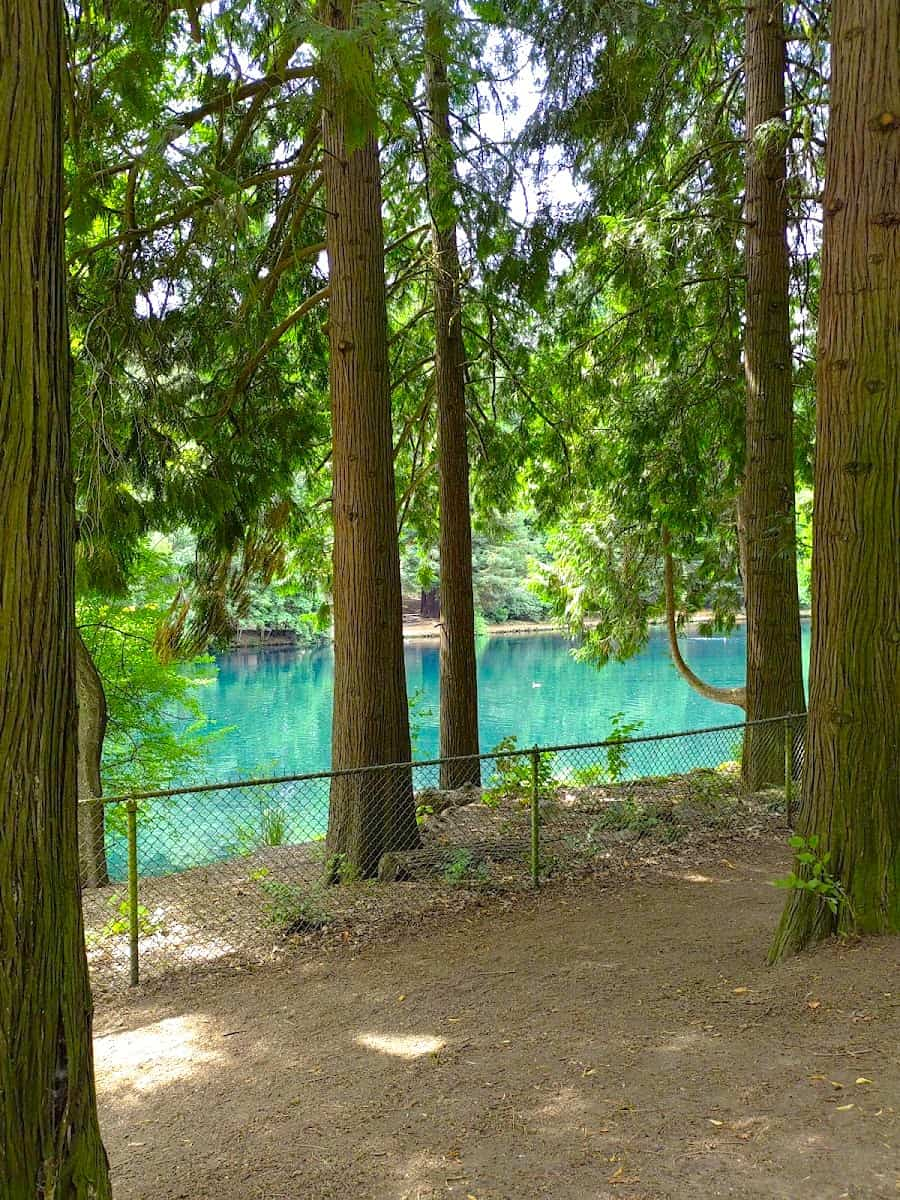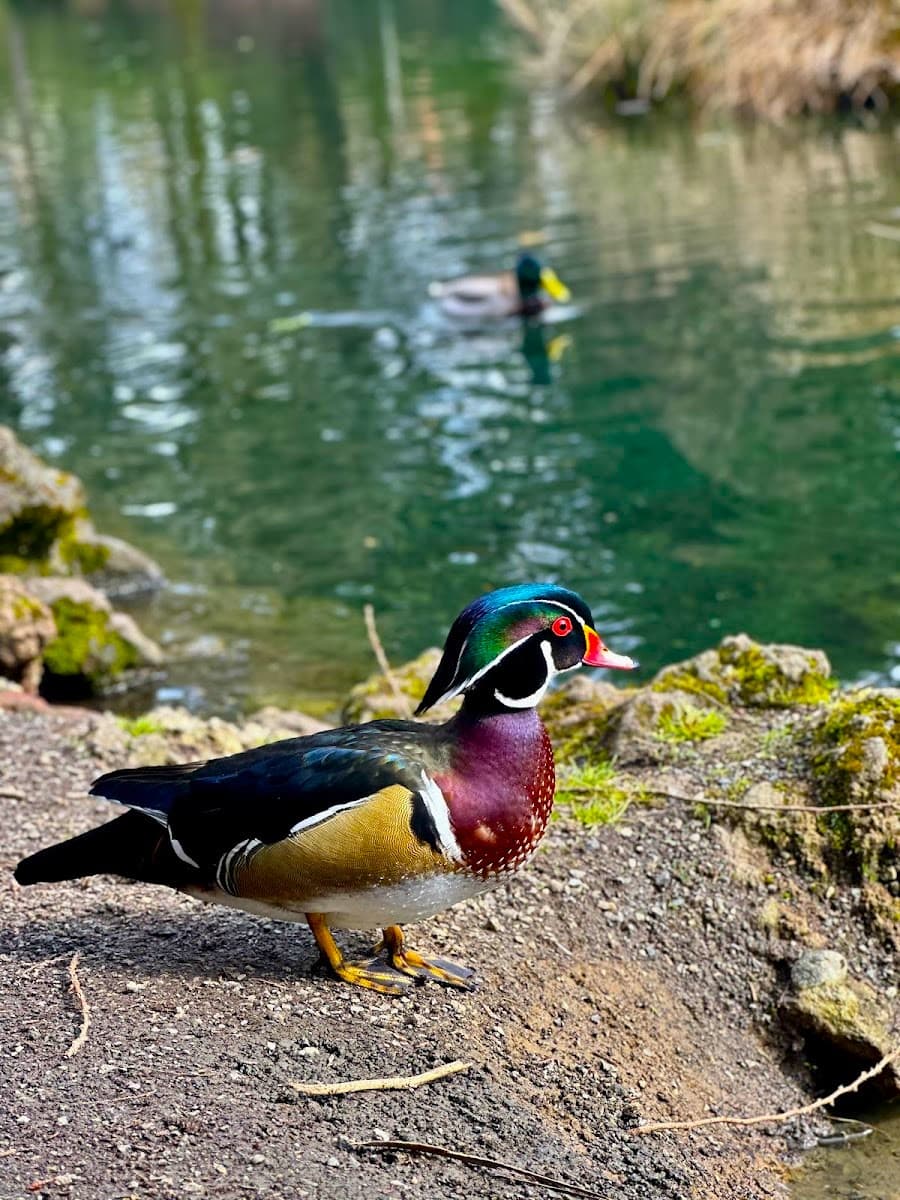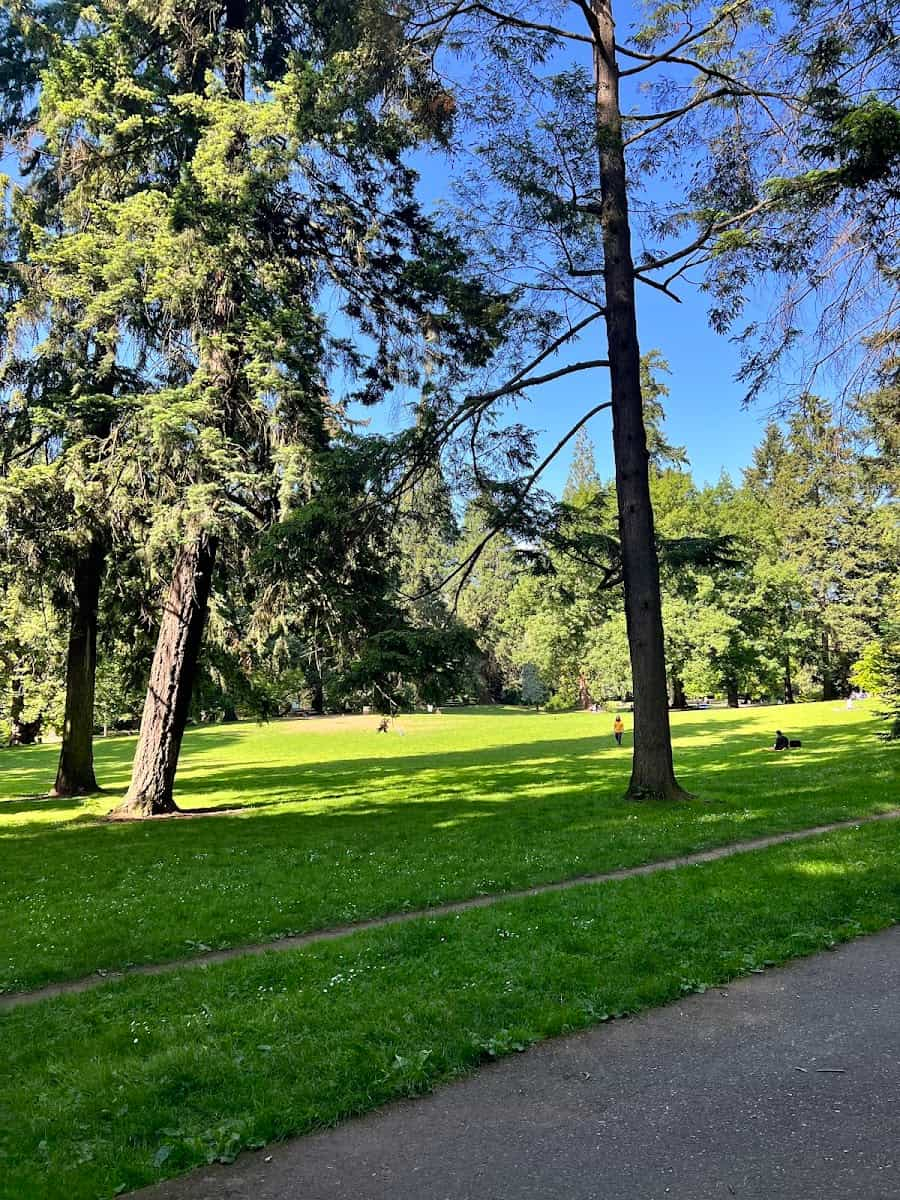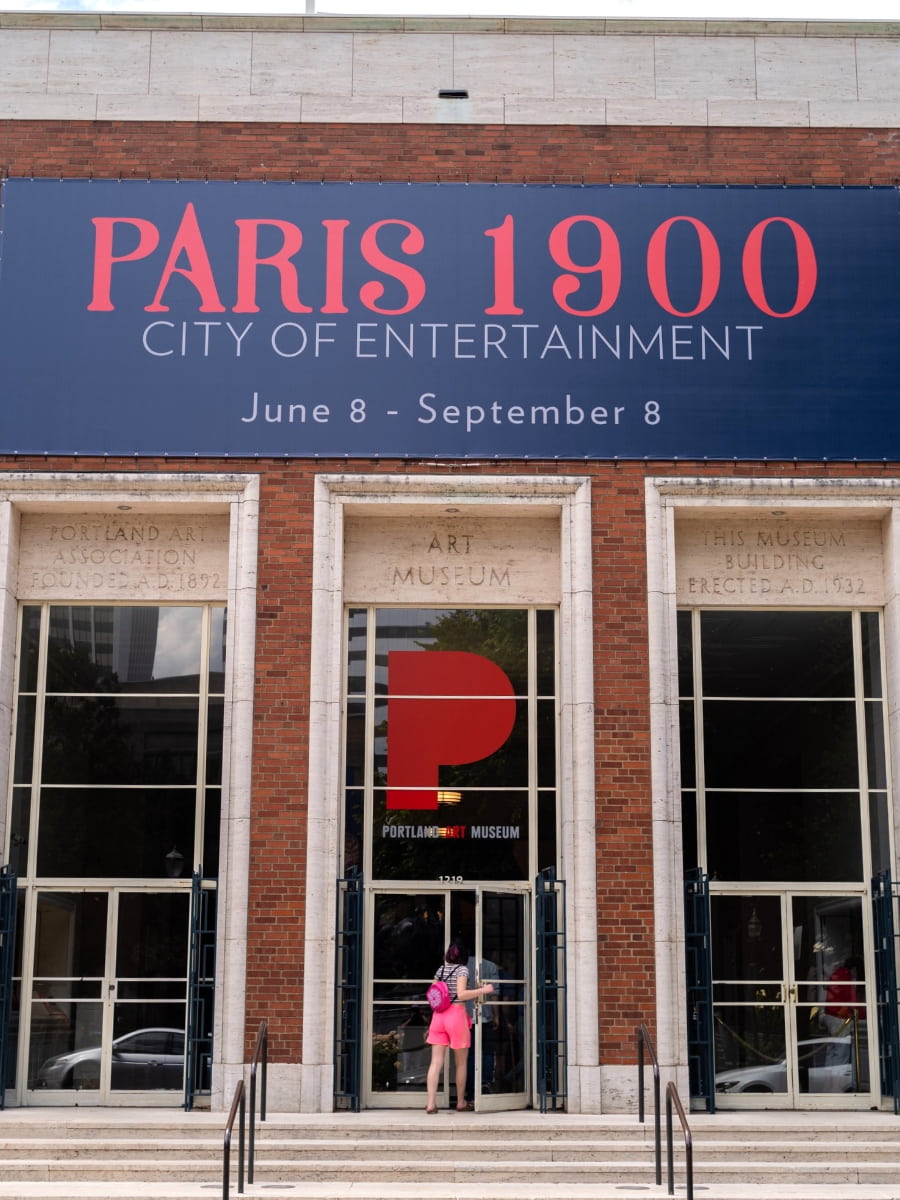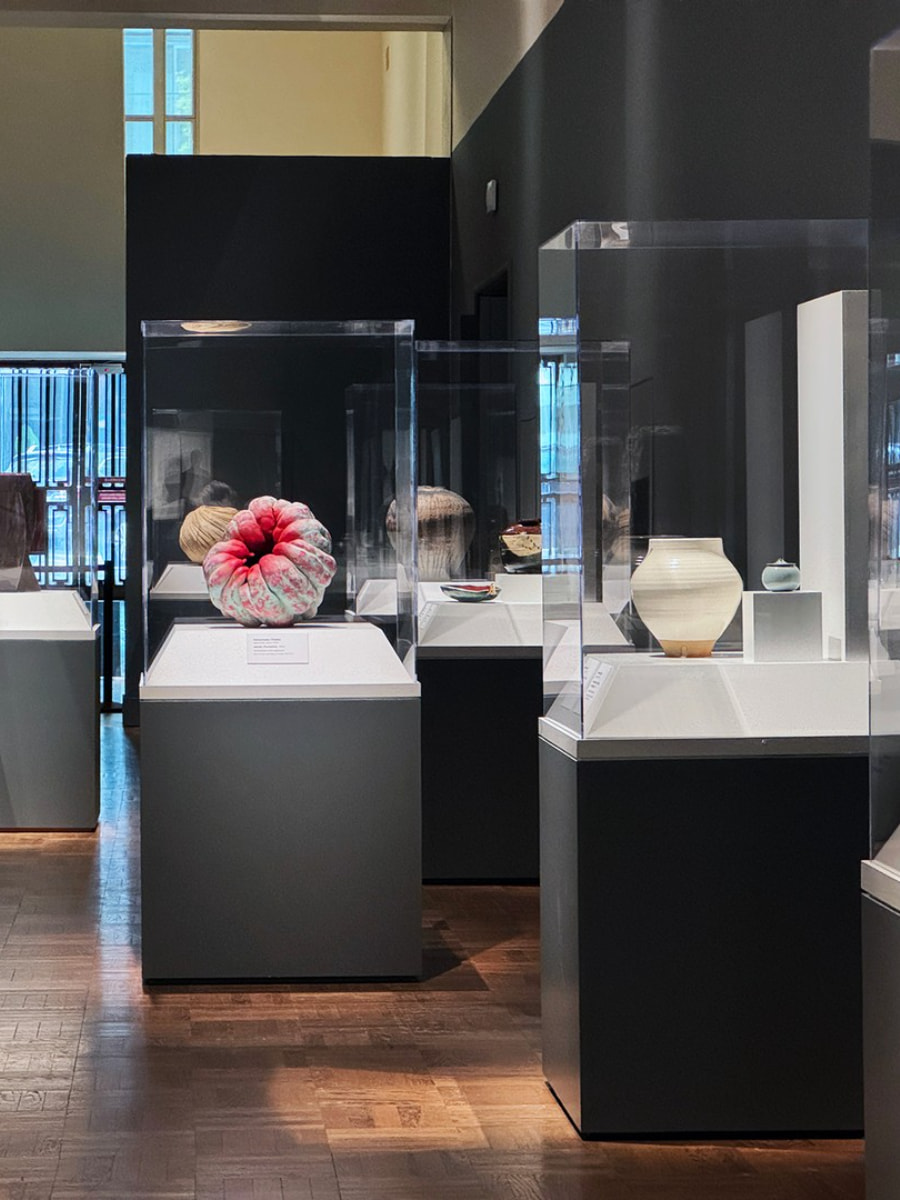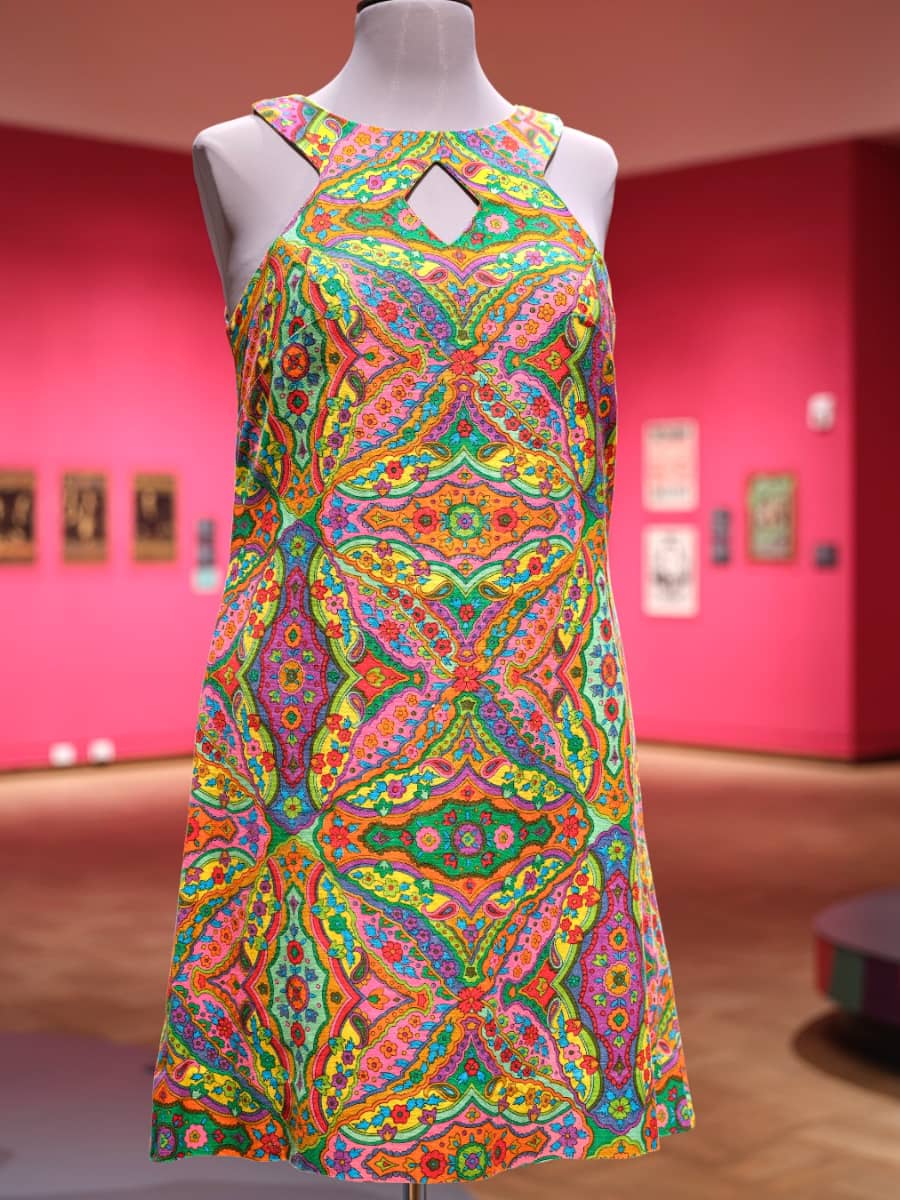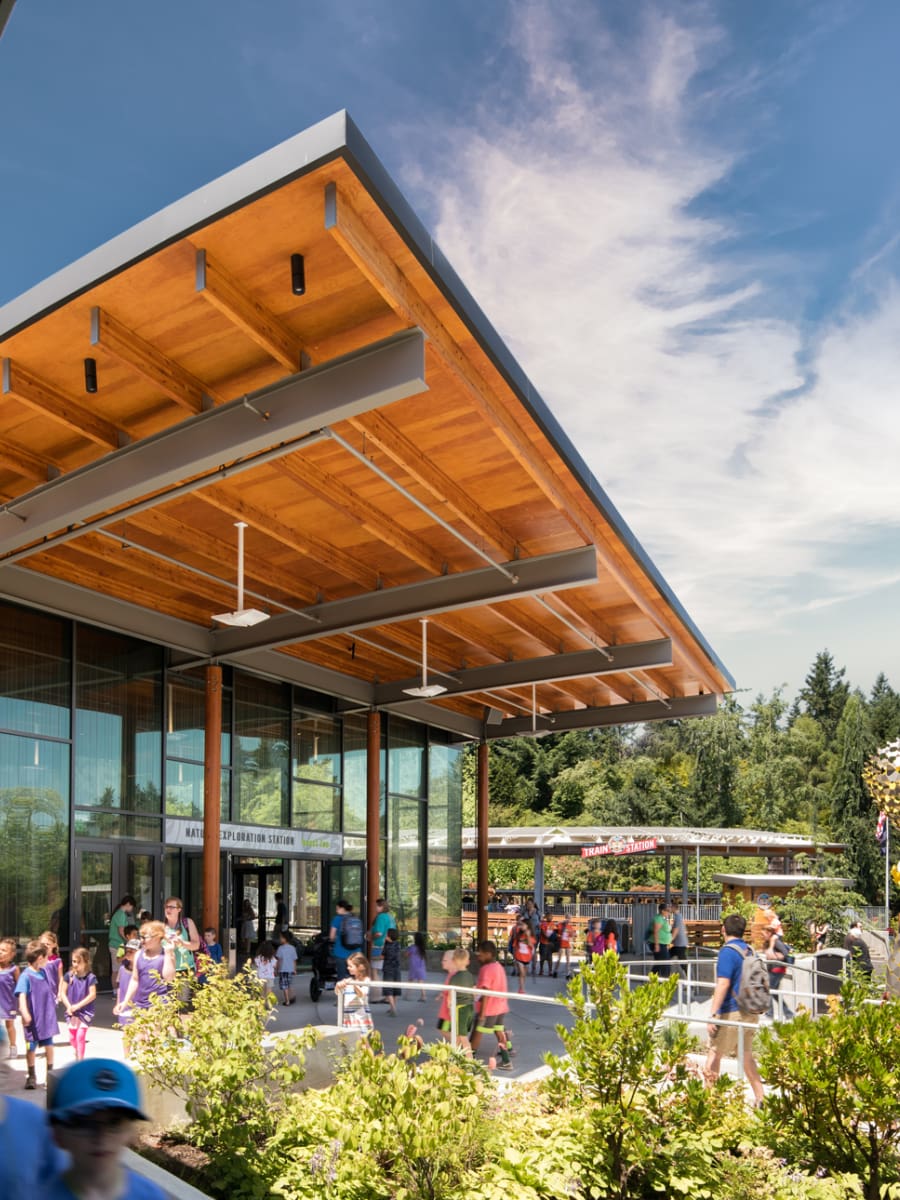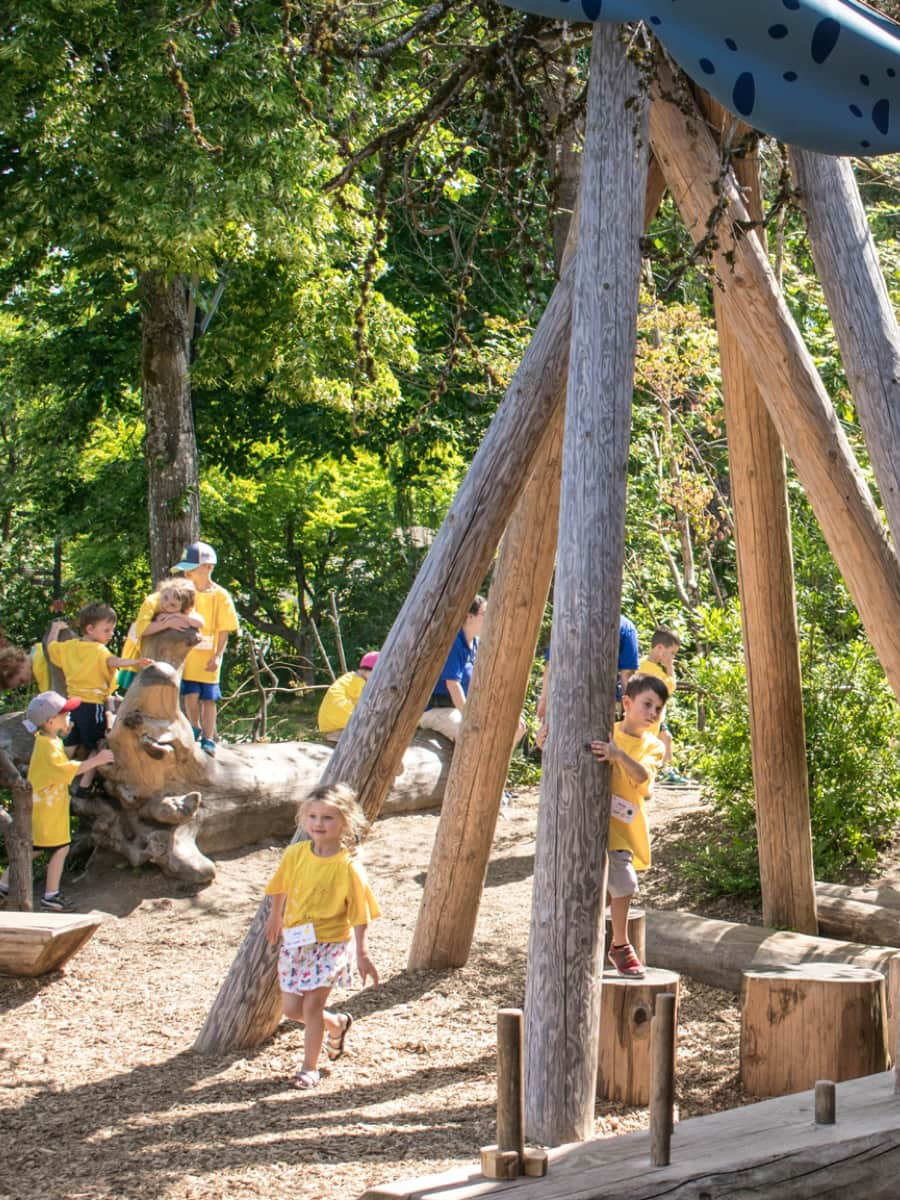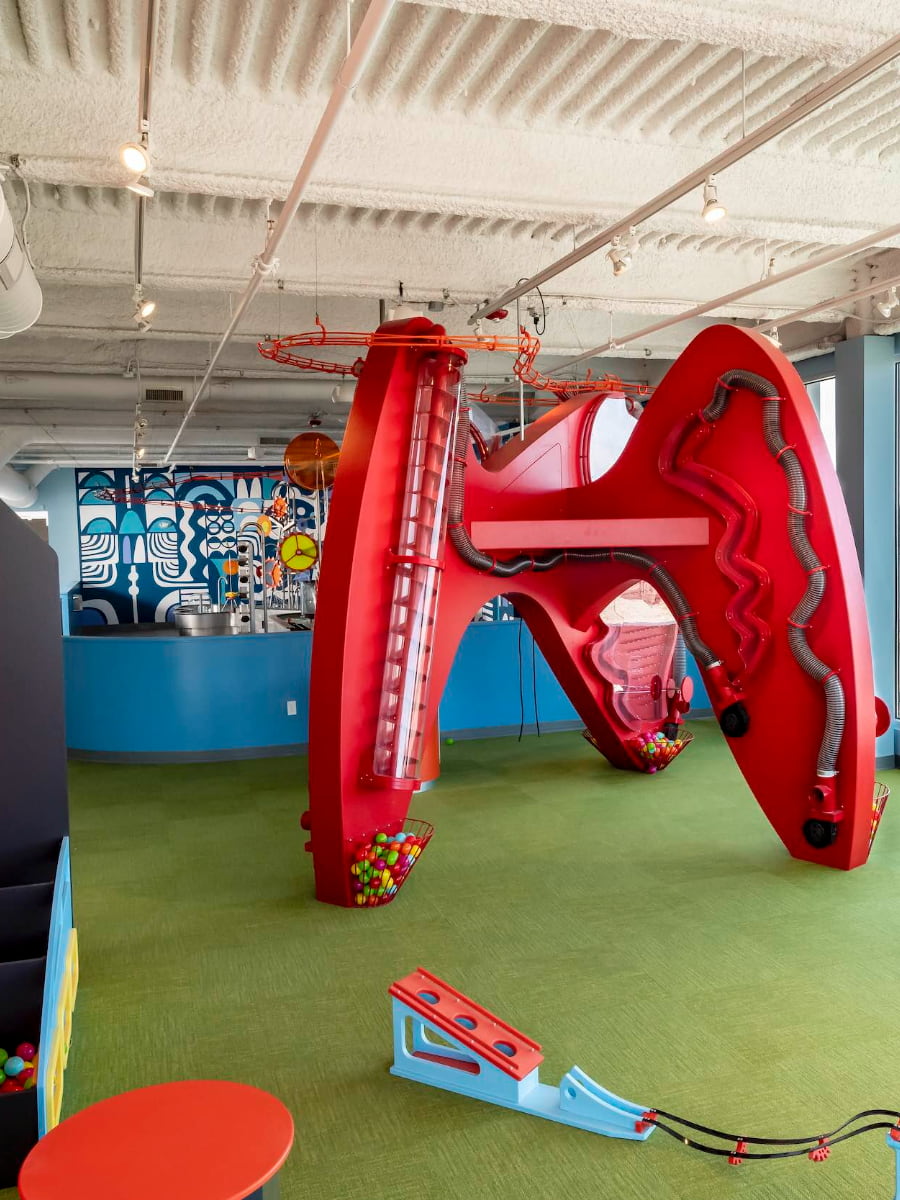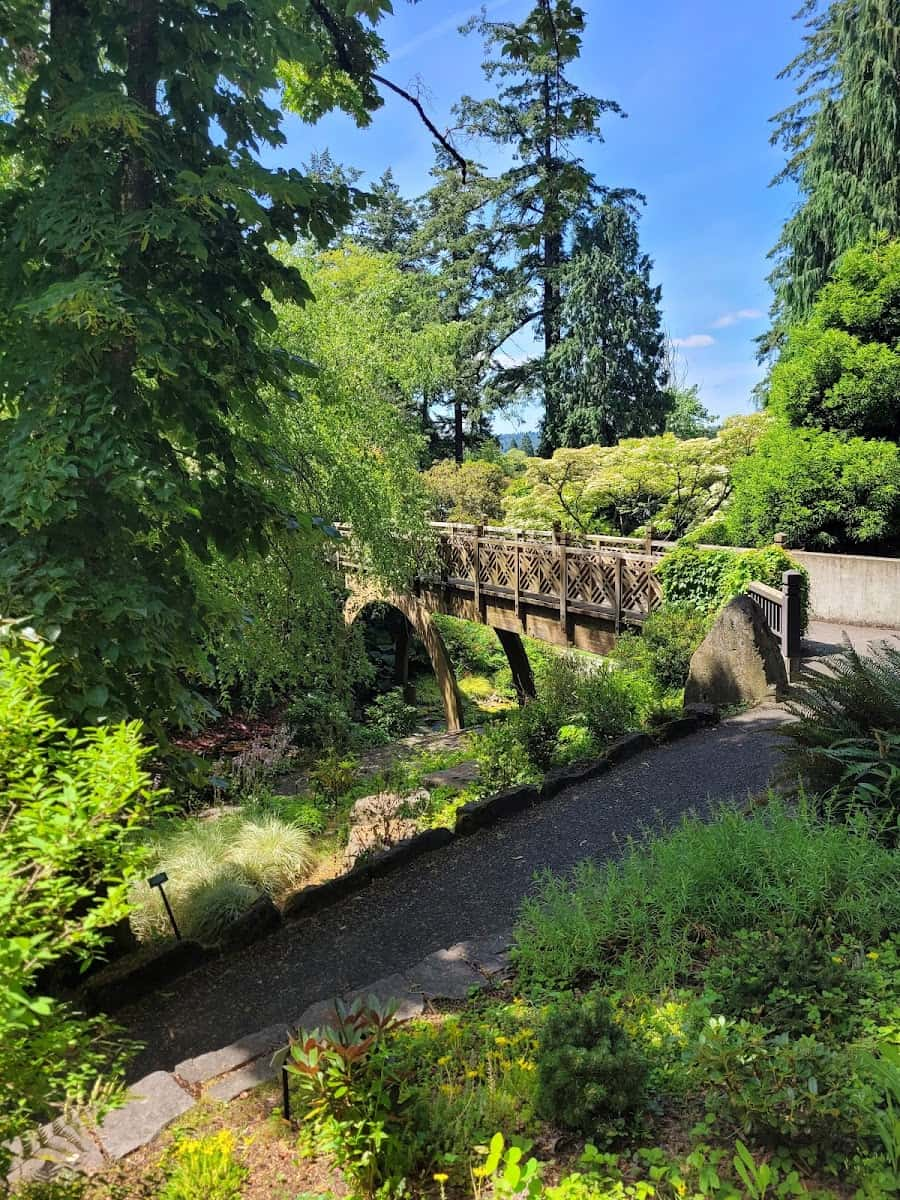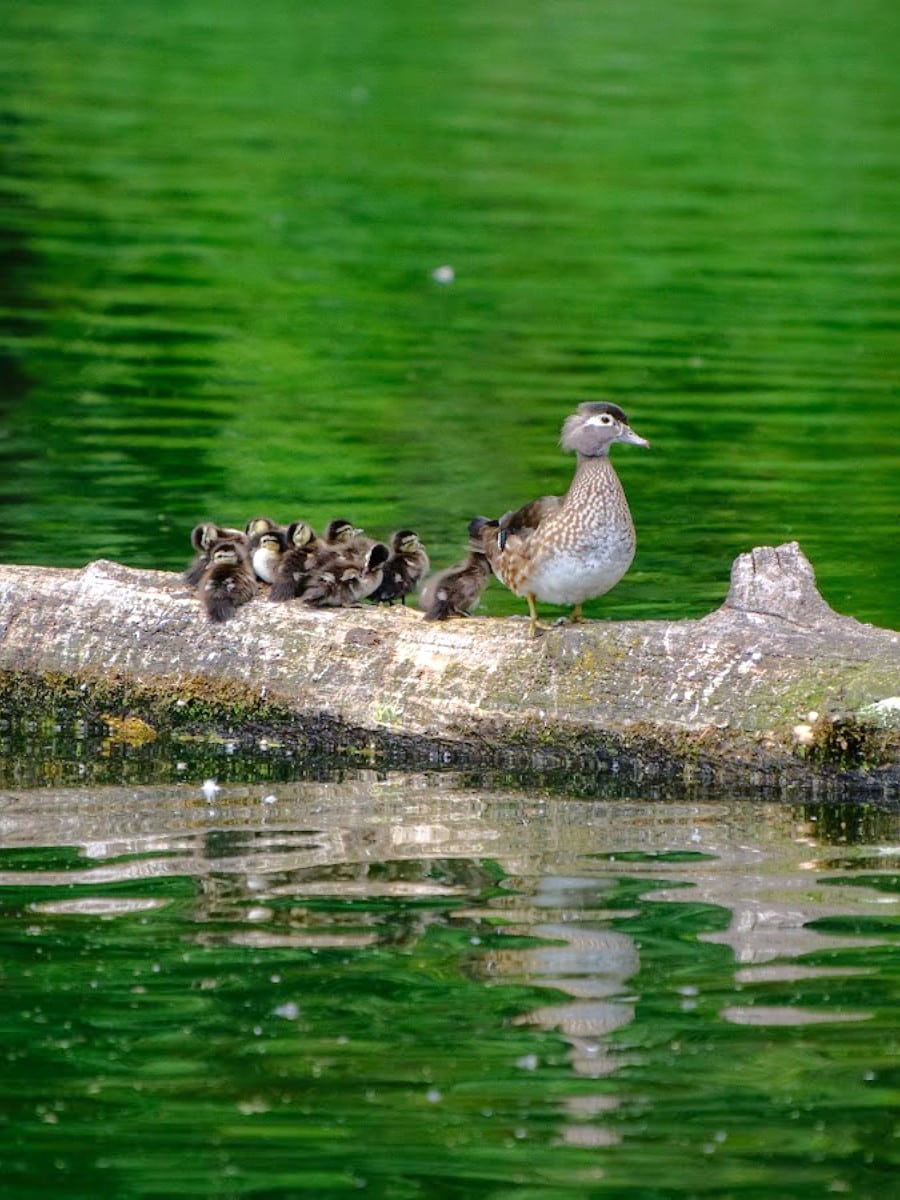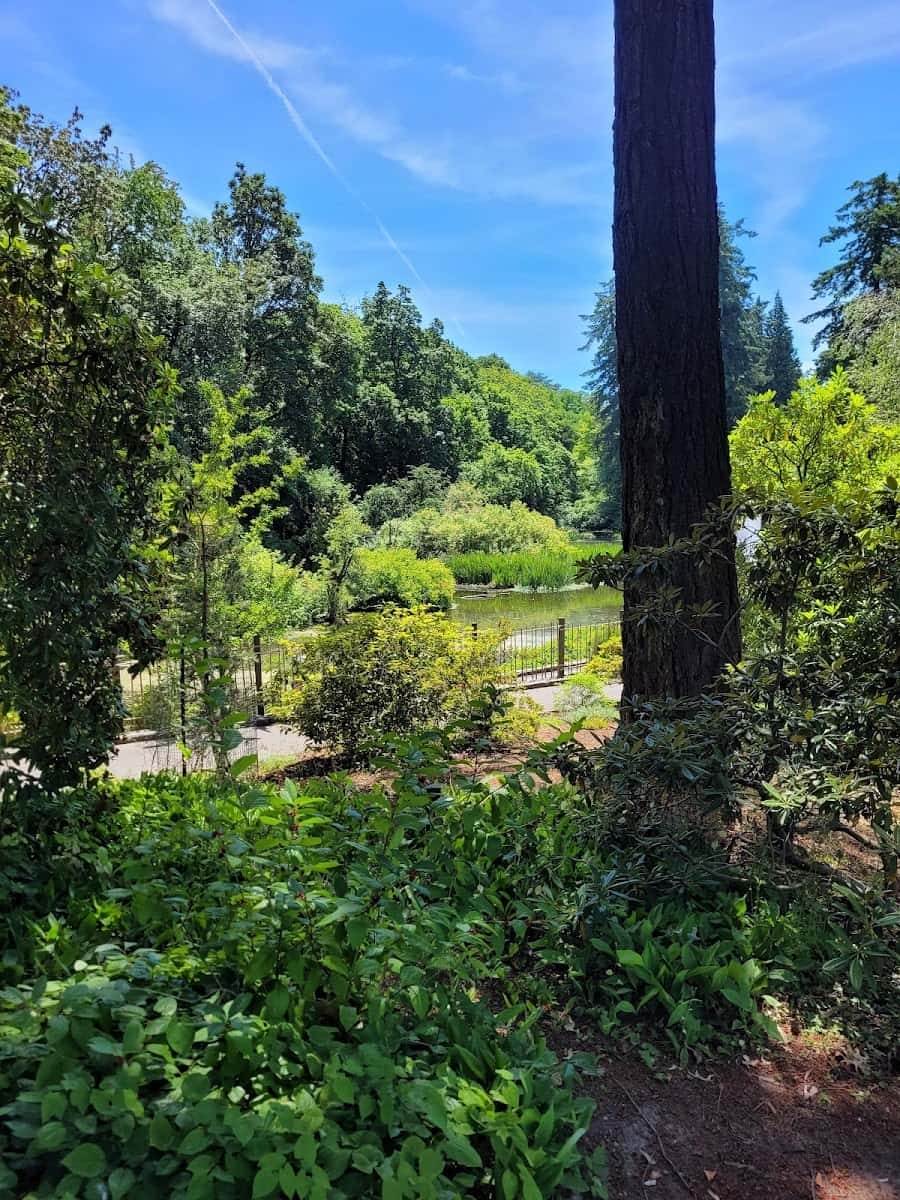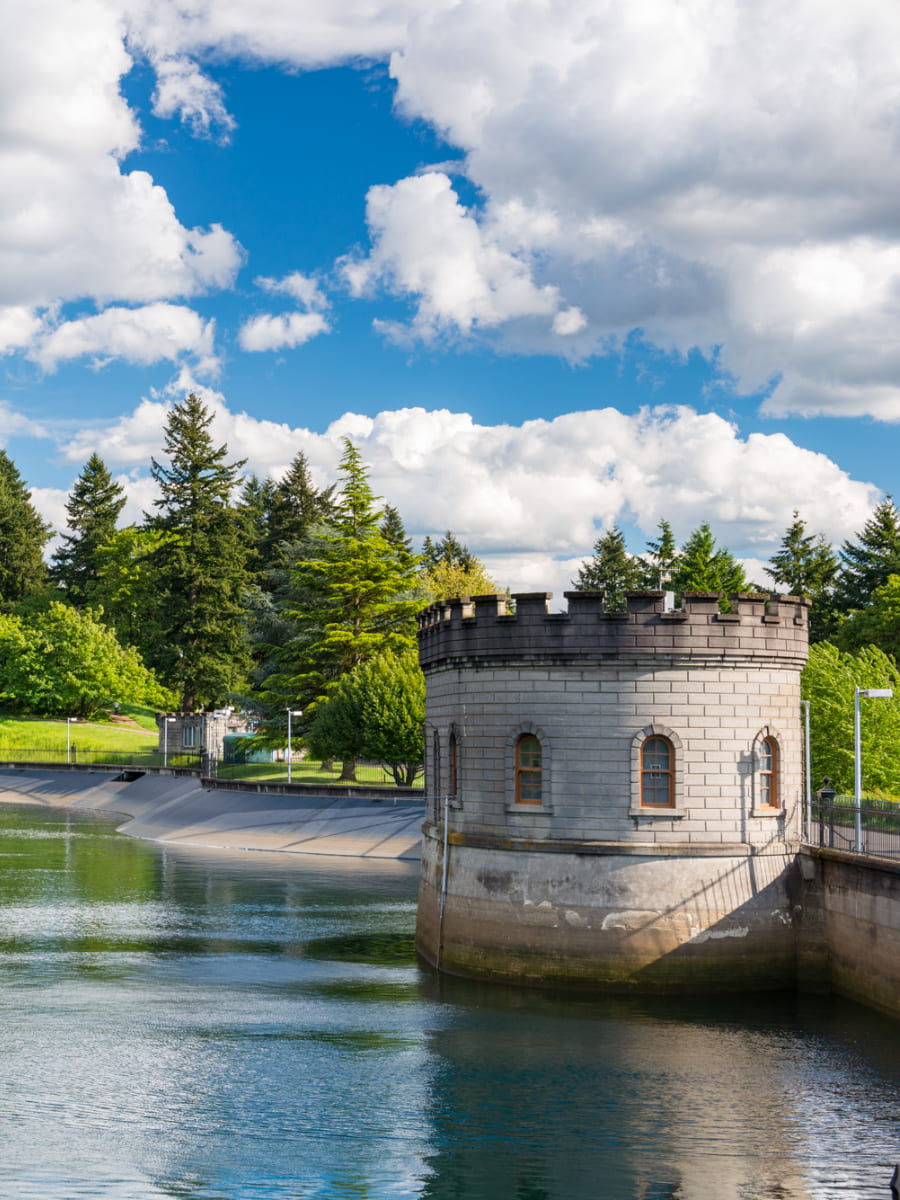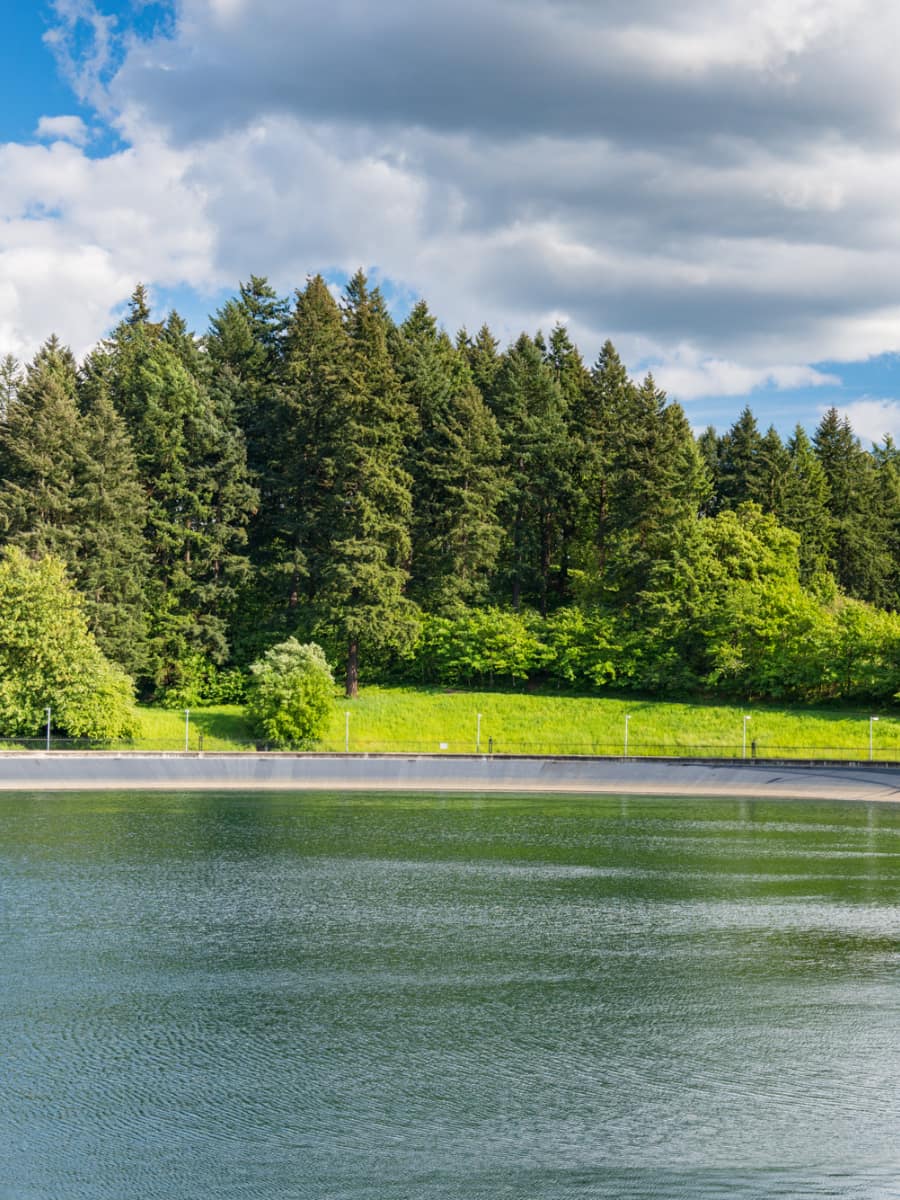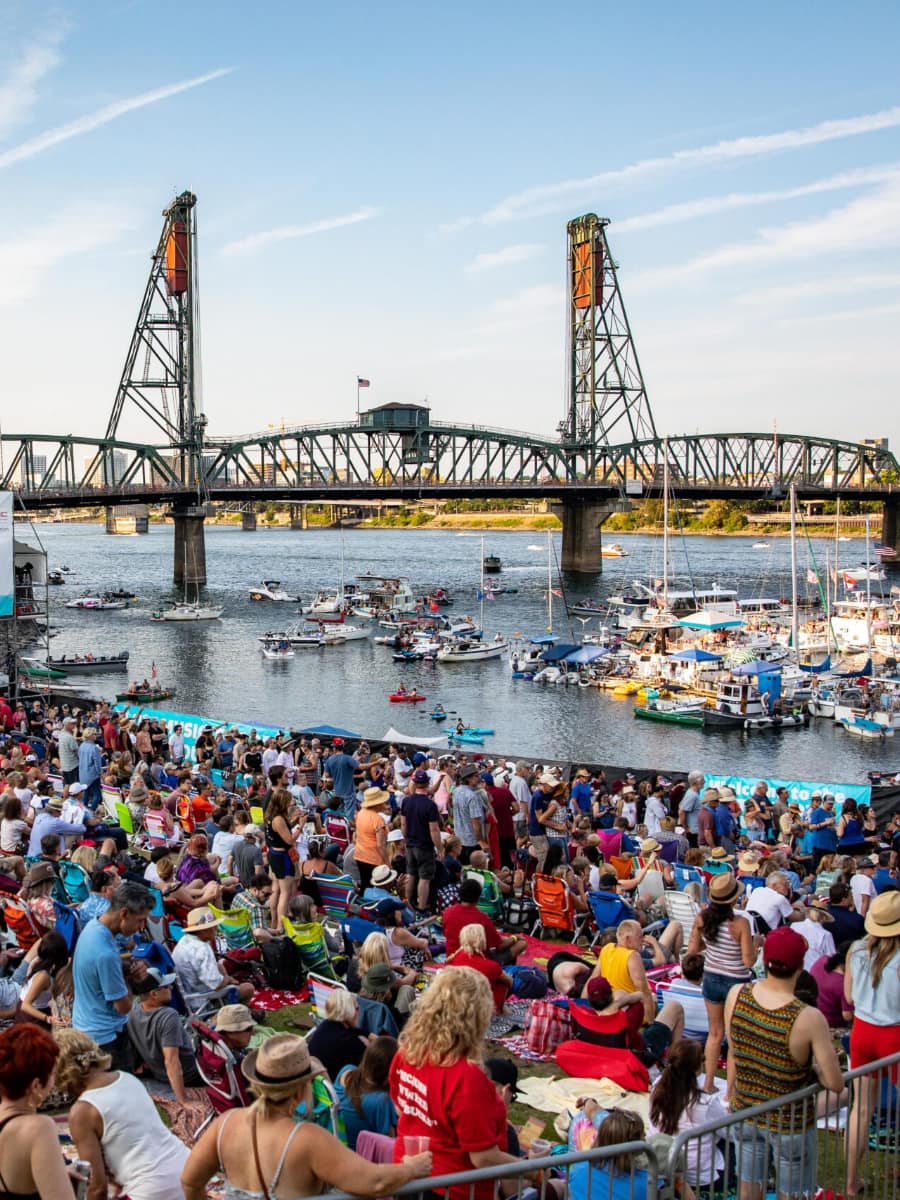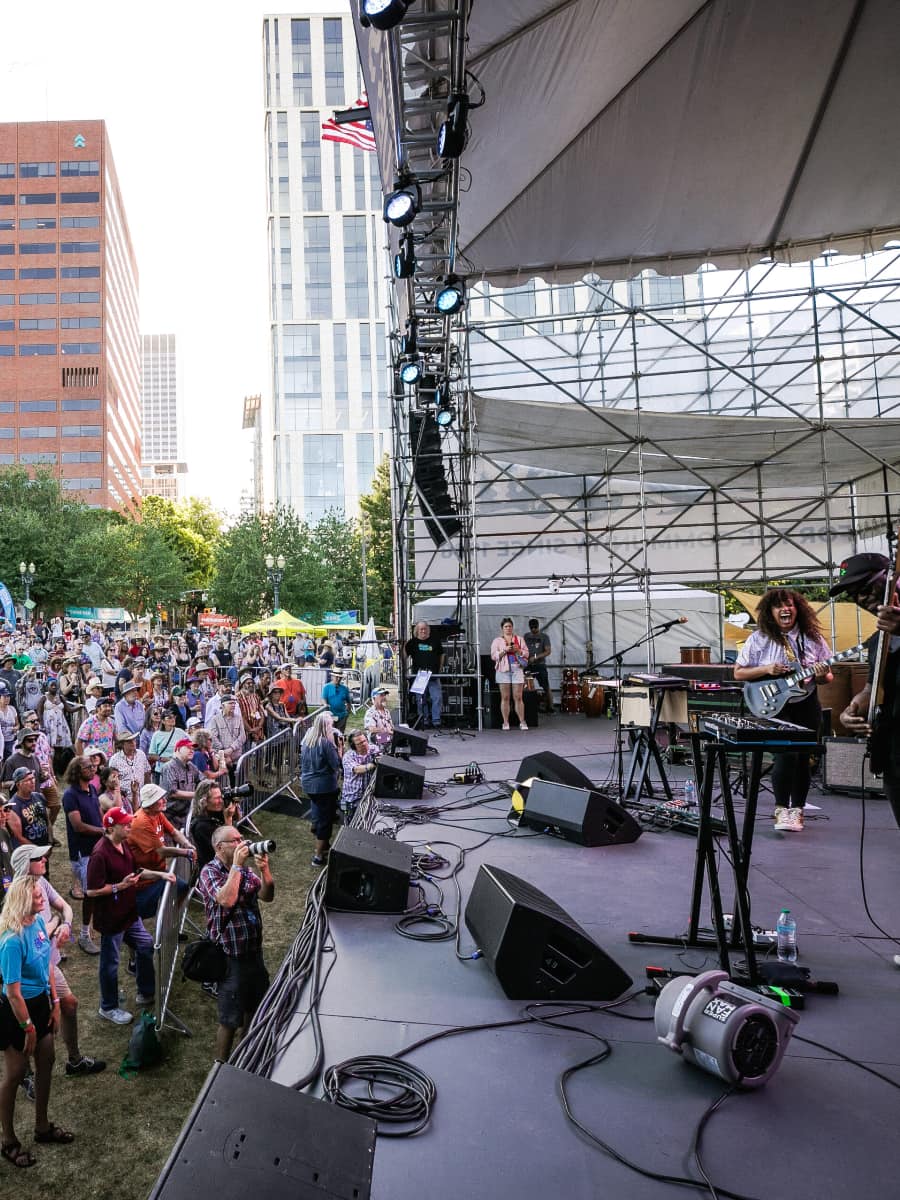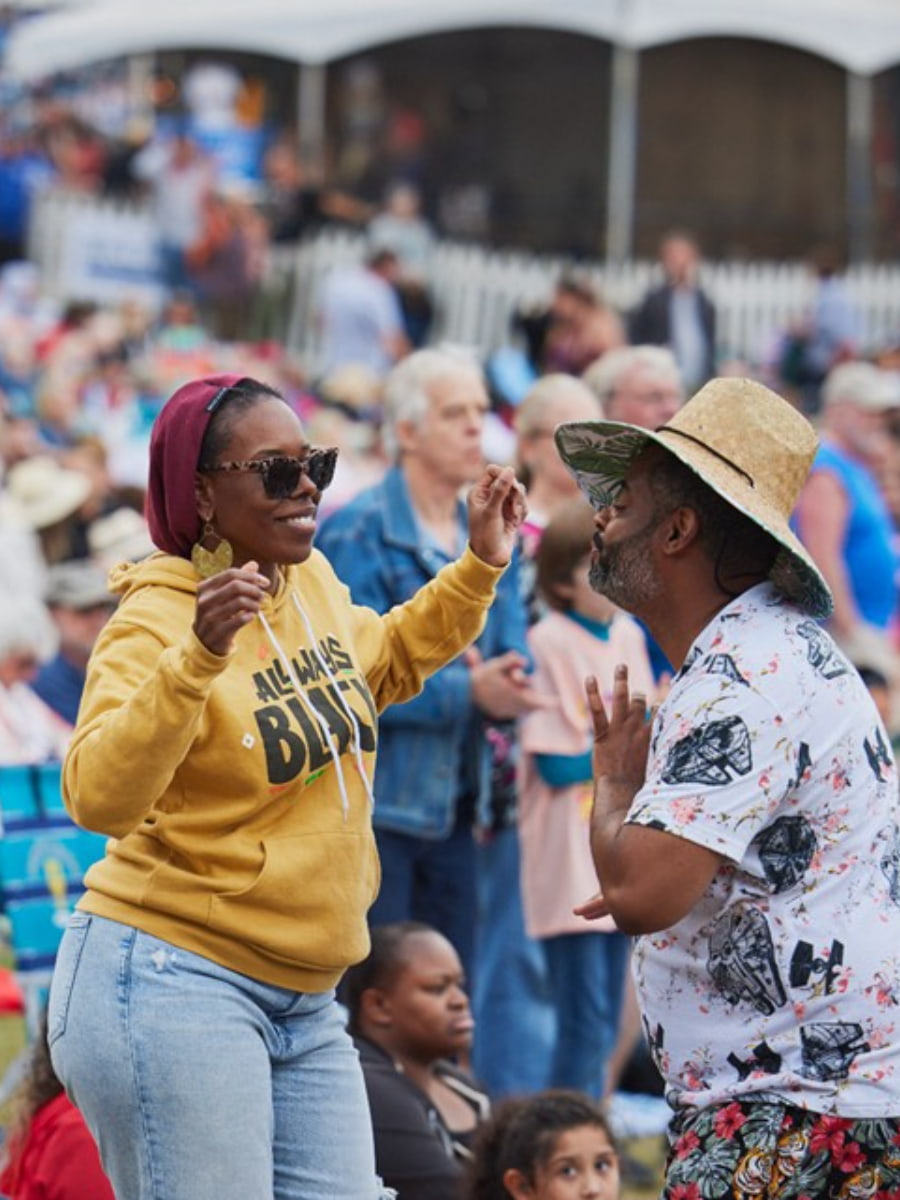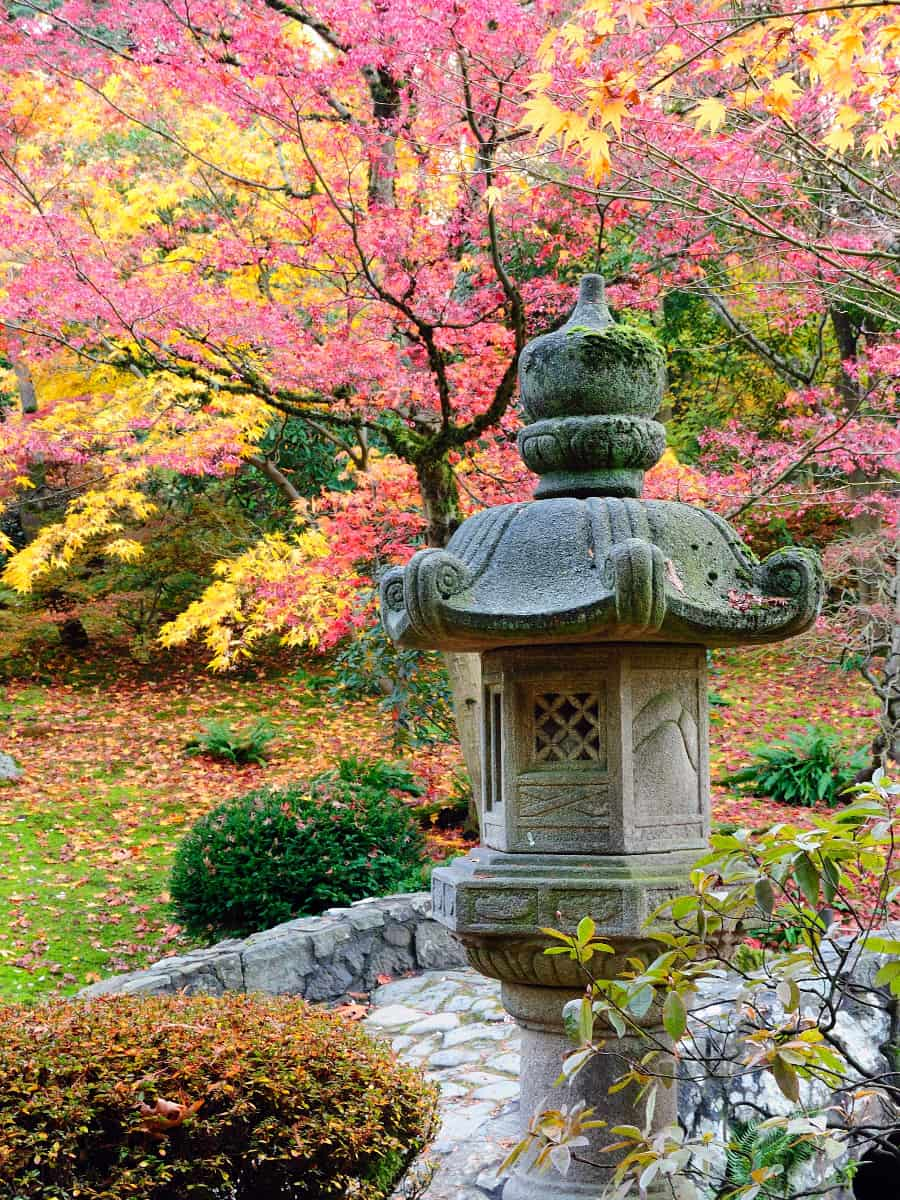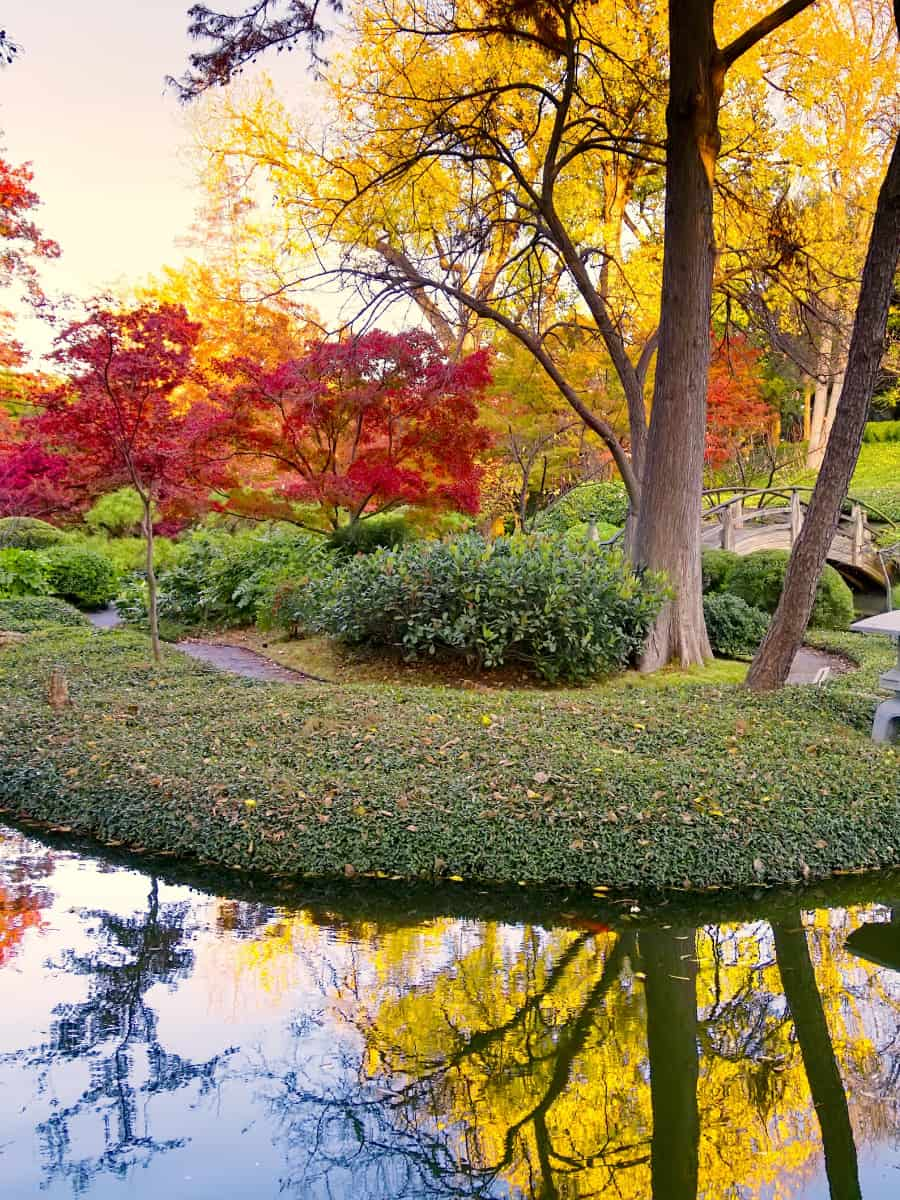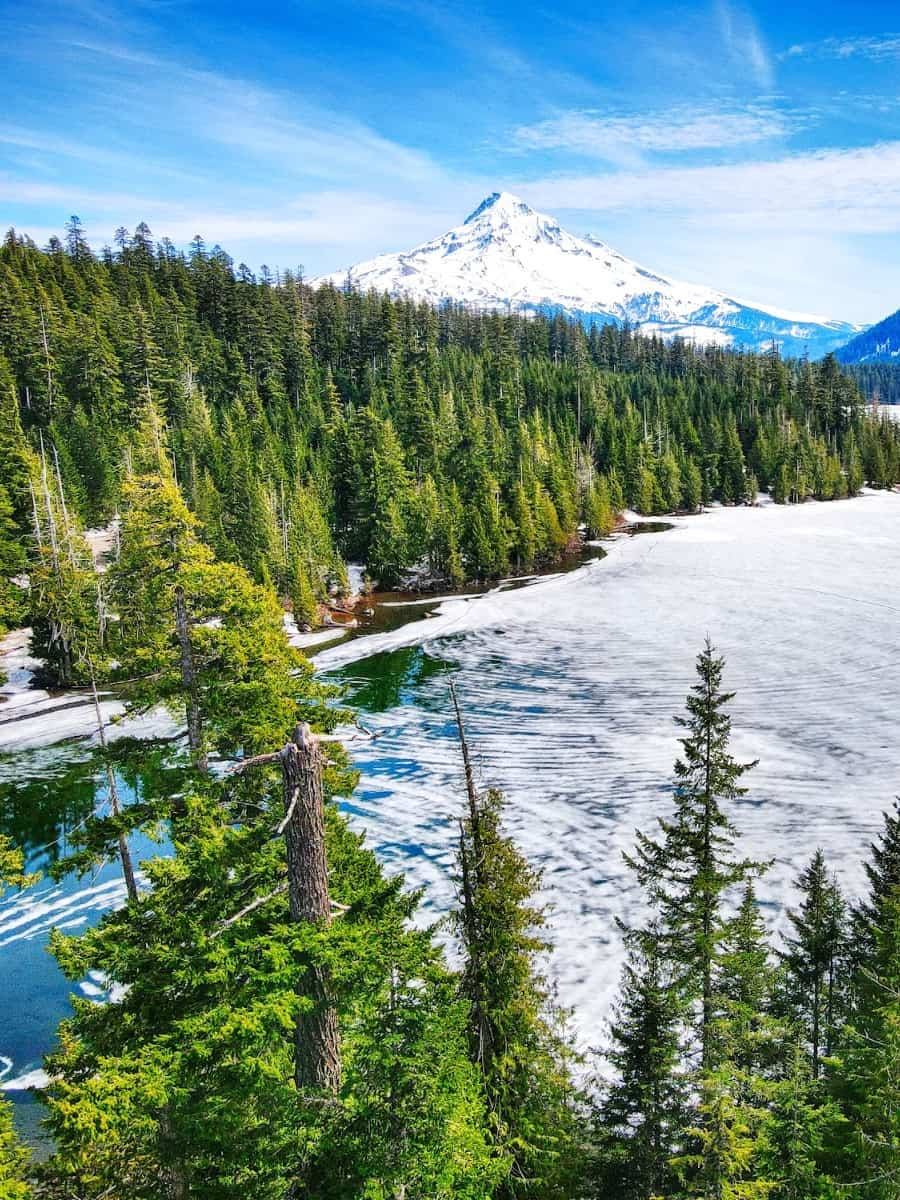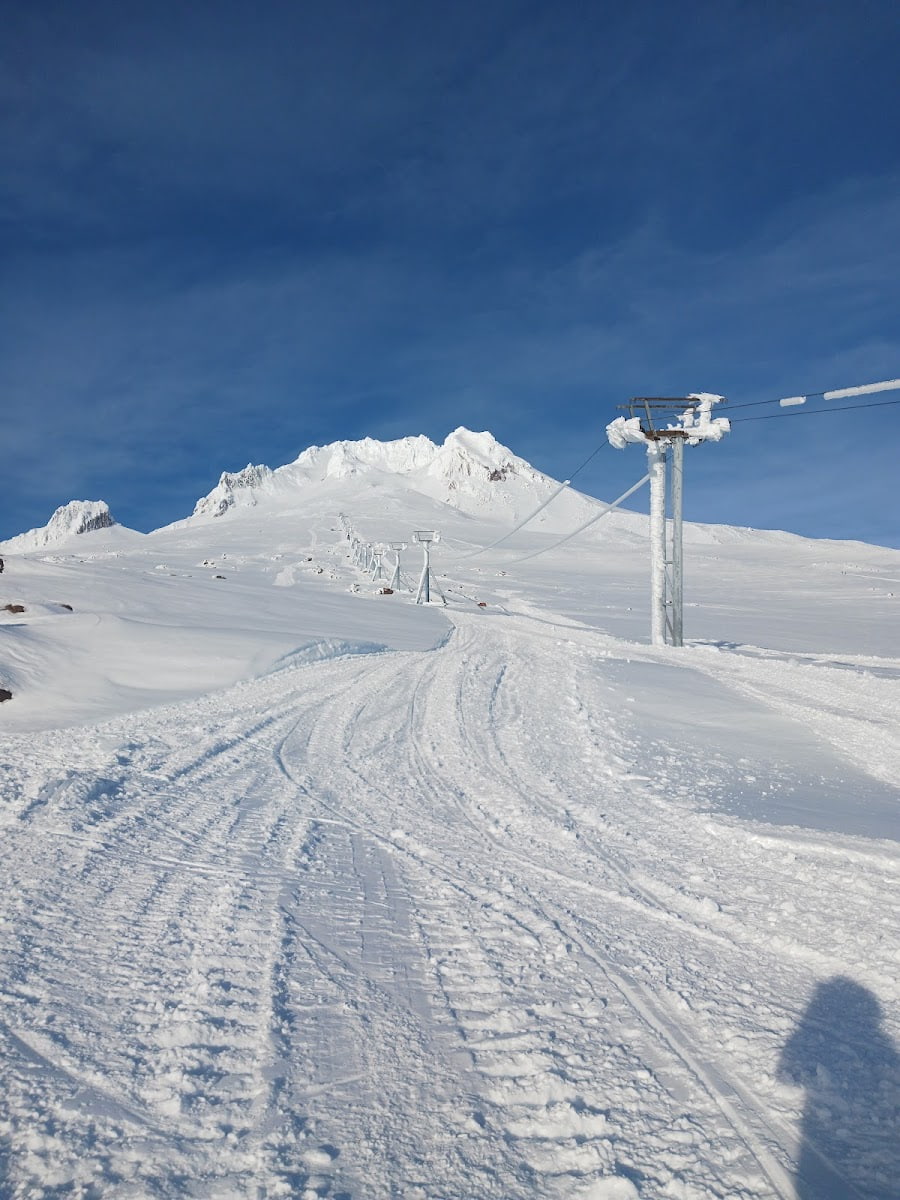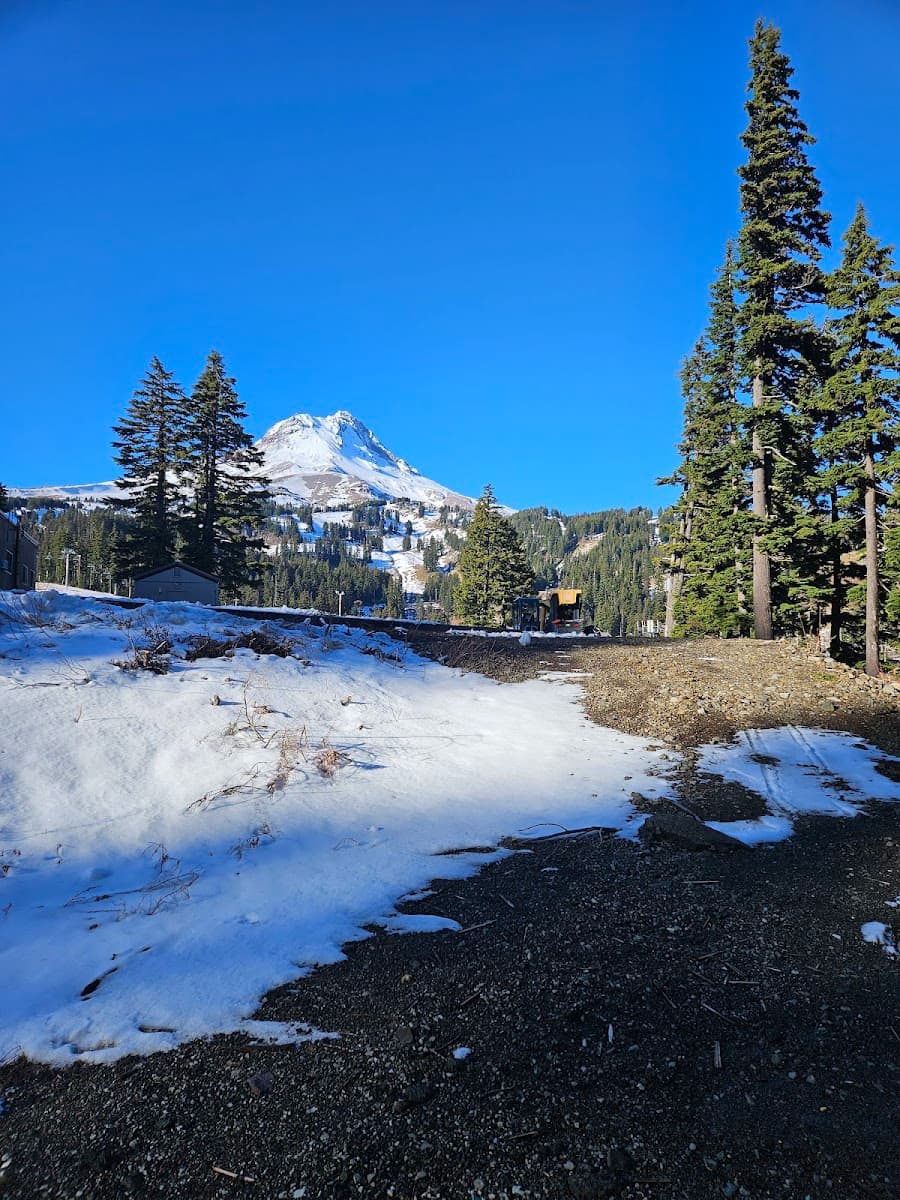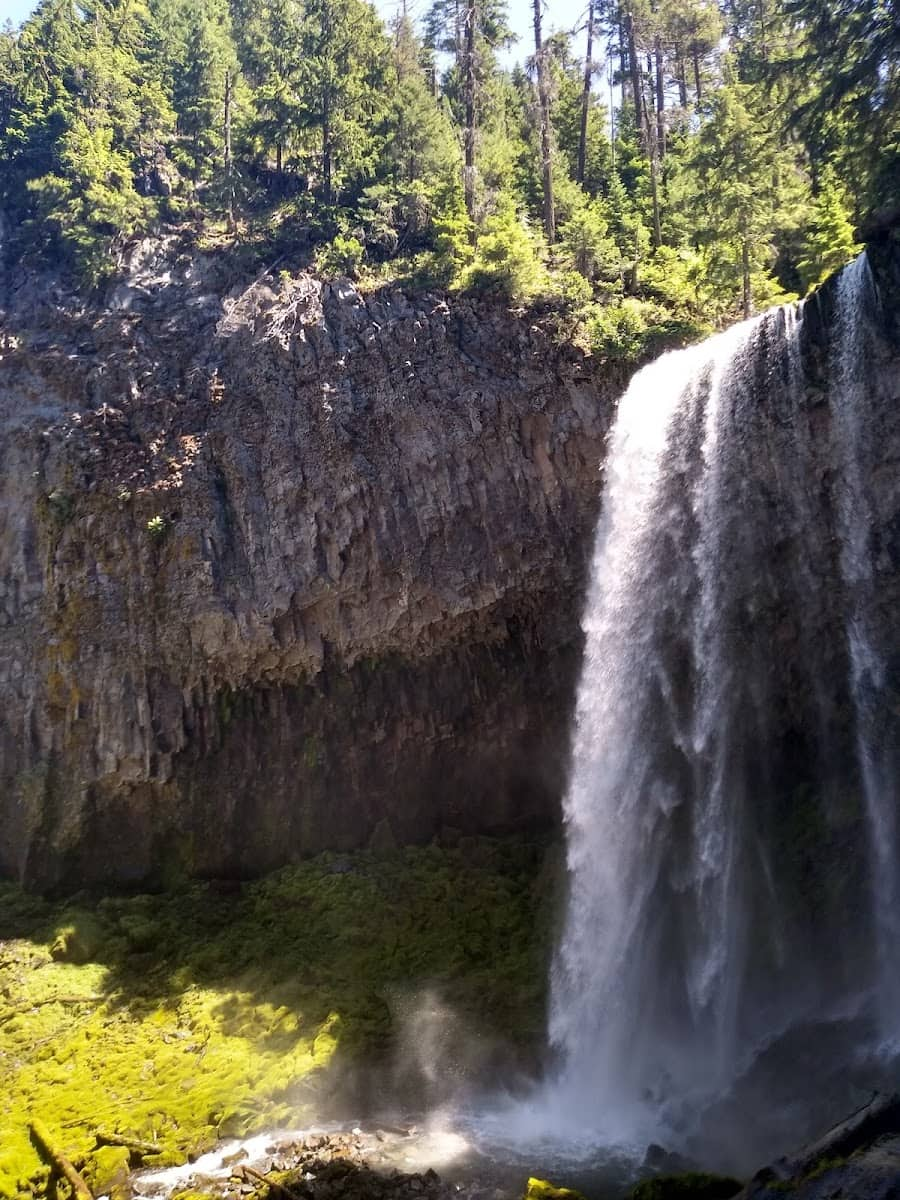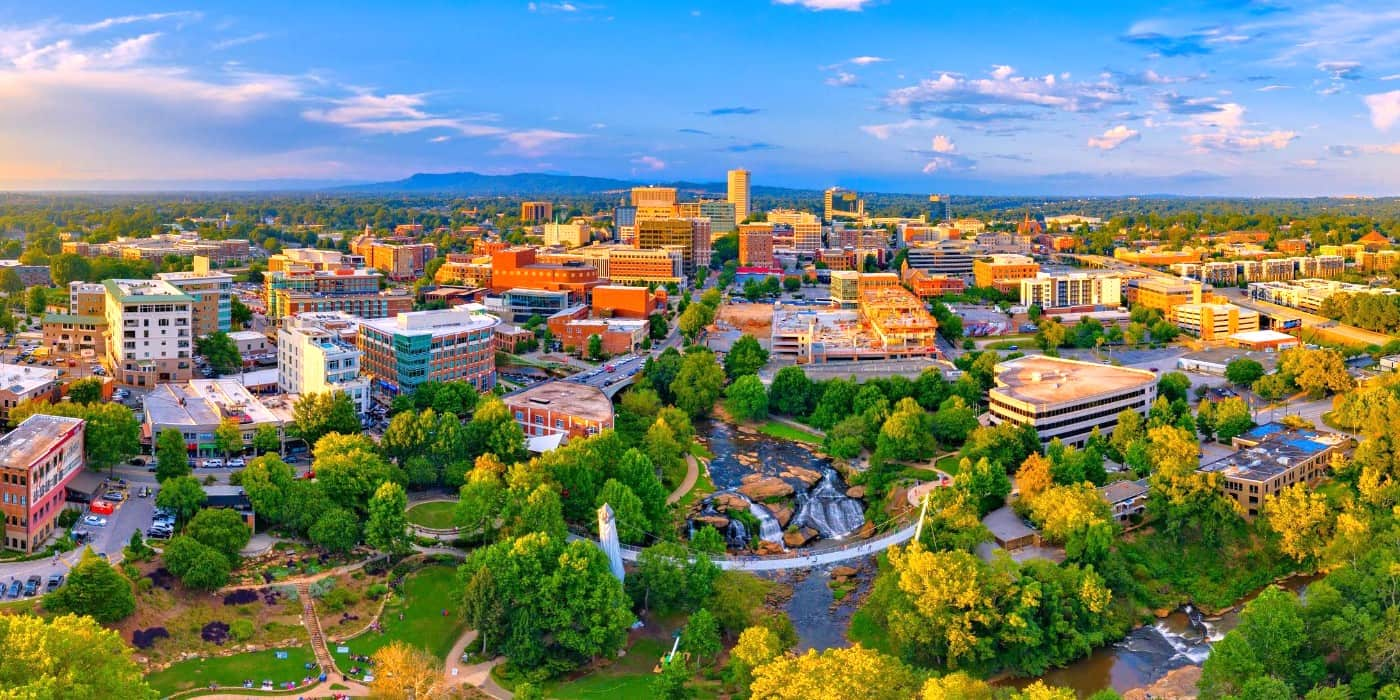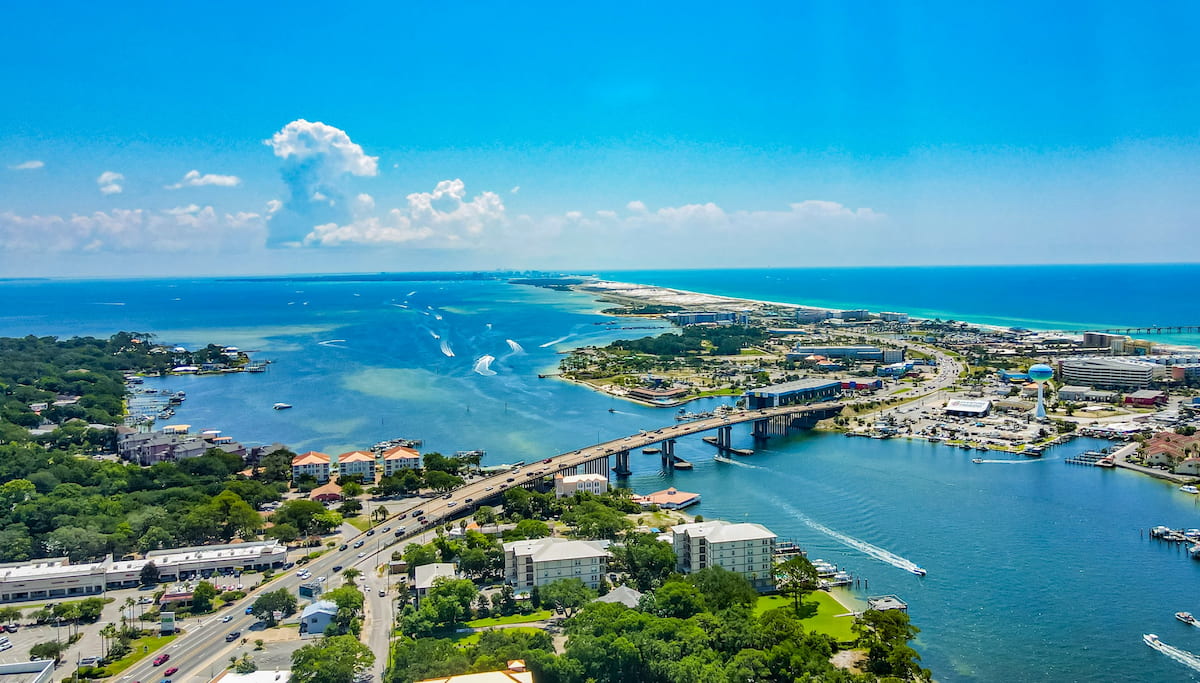Welcome to Portland, a city where quirky charm meets natural beauty! I’ve spent countless weekends exploring this Pacific Northwest gem, discovering hidden spots that locals love and tourists often miss. Whether you’re drawn to lush green parks or vibrant food scenes, Portland offers something special for every type of traveler.
In this guide, I’ll share my favorite Portland experiences that go beyond the typical tourist checklist. From world-class gardens to unique bookstores and secret viewpoints, these recommendations come from my personal adventures in the city. Let’s dive into what makes Portland truly unforgettable!
🏠 Where to Stay in Portland
- 💎 Luxury Hotel: Sentinel Hotel, Portland
- ✨ 5-Star: The Nines, a Luxury Collection Hotel, Portland
- 🏨 4-Star: Staypineapple, Hotel Rose, Downtown Portland
- 🛏️ 3-Star: The Paramount Hotel Portland, Portland
- 💸 Cheap: Hyatt Place Portland Airport/Cascade Station, Portland
- 🏢 Apartment: Park Lane Suites & Inn, Portland
- 👨👩👧👦 For Families: Woodlark Hotel Portland a Tribute Portfolio Hotel, Portland
- 🏩 For Couples: Hampton Inn Portland Airport, Portland
💁 Best Guided Tours
- Portland Ghosts: Poltergeists and Psychopaths from € 32 (⭐4.4/5)
- A Walk Through Time in Portland History Tour from € 35 (⭐4.8/5)
- Portland Small-Group City Tour from € 79 (⭐4.9/5)
- Portland City Tour: Views and News from € 79 (⭐4.7/5)
Best Things to Do in Portland
1. International Rose Test Garden
Floral paradise. I wandered through Portland’s International Rose Test Garden on a sunny afternoon and was immediately overwhelmed by the fragrance of over 10,000 rose bushes. Located in Washington Park, this 4.5-acre garden showcases approximately 650 different rose varieties that bloom from late May through October, with peak season typically in June.
Views beyond flowers. While exploring the different sections of the garden, I stopped to admire the breathtaking panorama of downtown Portland, the Willamette River, and even Mount Hood on clear days. The amphitheater area has become one of my favorite picnic spots, and I often see locals playing frisbee or simply relaxing on the grass.
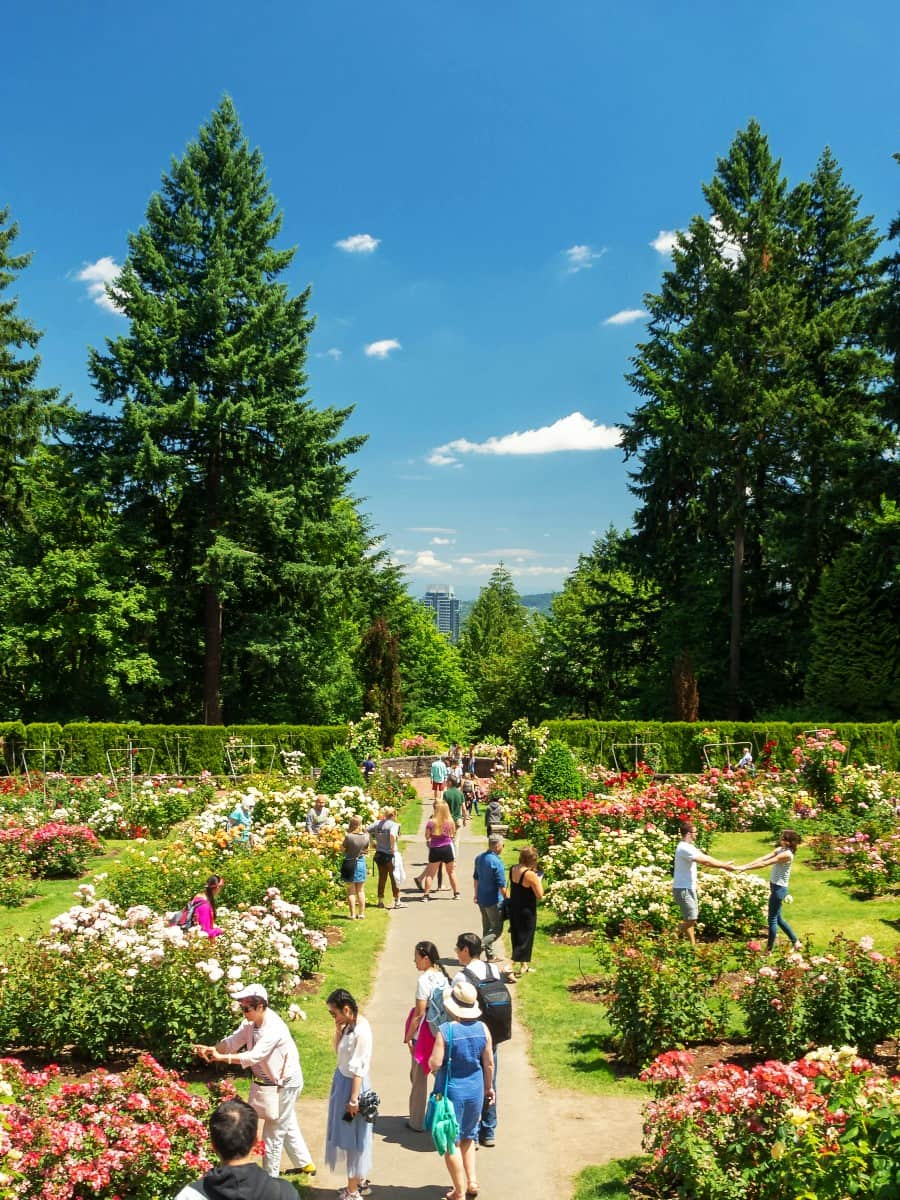
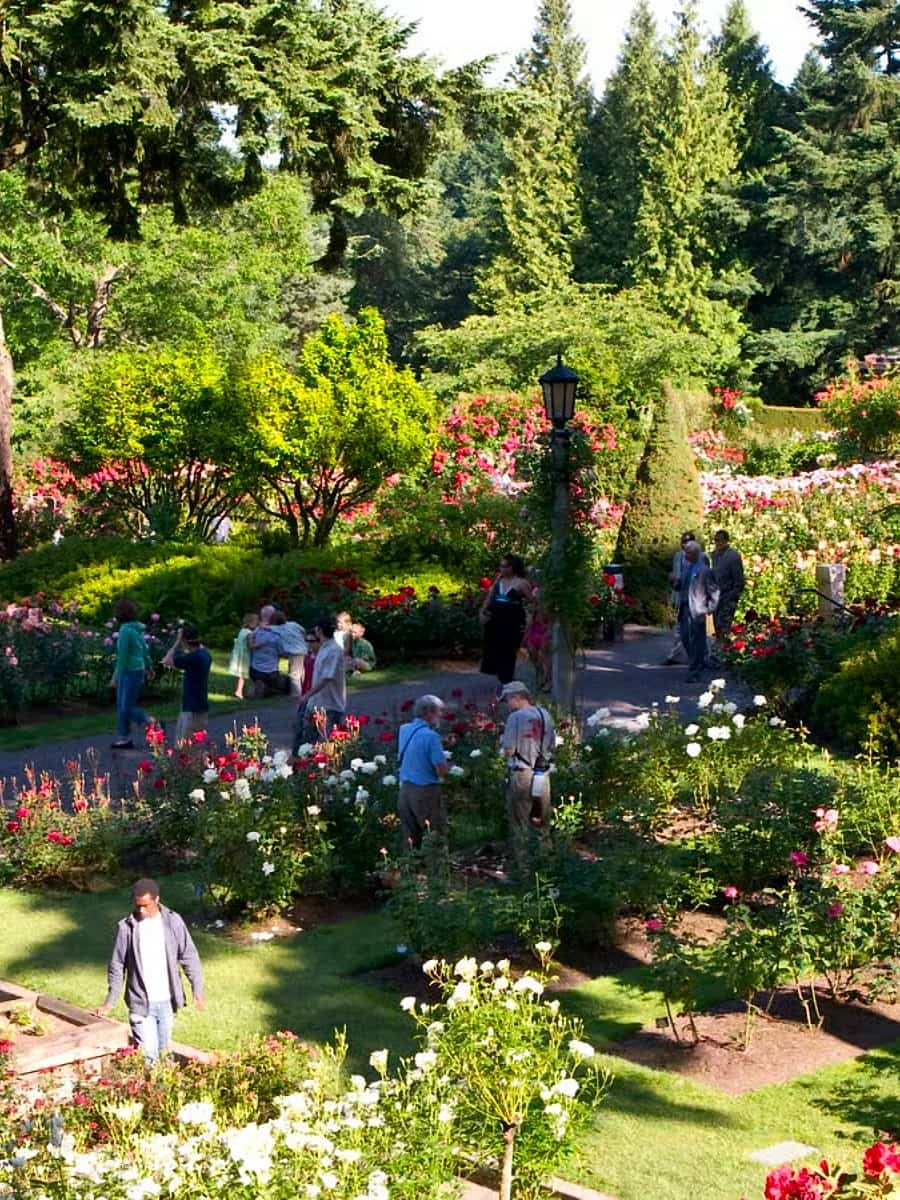

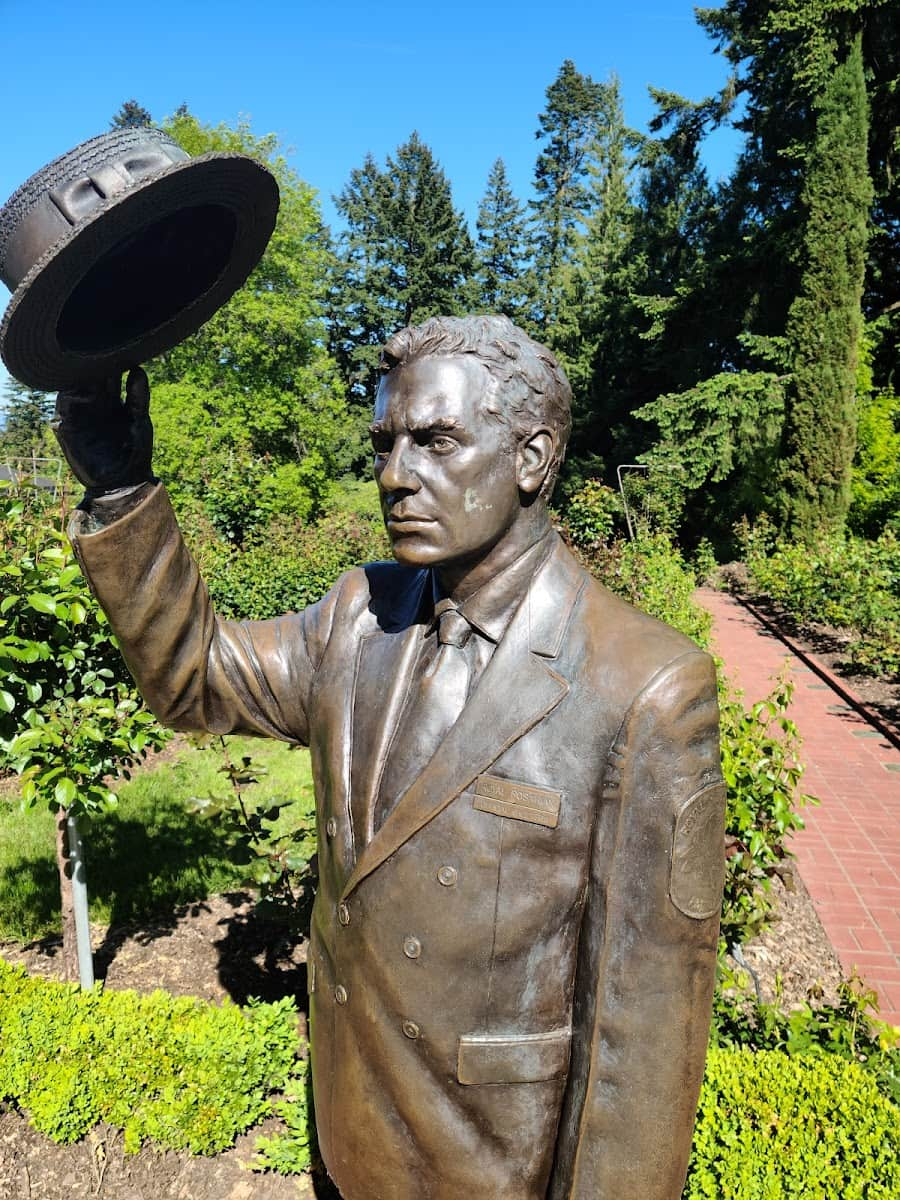
Garden sections. The garden is divided into several unique areas including the Shakespeare Garden, Gold Medal Garden, Royal Rosarian Garden, and Miniature Rose Garden. I particularly enjoyed the Queens Walk, a brick pathway featuring bronze plaques honoring Rose Festival queens since 1907 – a charming nod to Portland’s “City of Roses” nickname.
Visitor tips. The best part? This Portland gem is completely free to visit! I recommend arriving early on weekends to avoid crowds, especially during peak bloom season. Parking costs $2.40/hour or $8/day, but you can easily reach the garden via public transit – just take the MAX Blue or Red line to Washington Park station or TriMet’s Line 63 from downtown.
- Opening hours: 5:00 AM – 10:00 PM daily
- Best time to visit: Late May through early fall, with June offering peak blooms
| Amenity | Details |
|---|---|
| Admission | Free |
| Parking | $2.40/hour or $8/day |
| Facilities | Gift shop, restrooms, drinking fountains |
| Accessibility | Gentle slope access (8% grade) |
⭐ Best Activities
- Discover Portland Half-Day Small-Group City Tour – Explore Portland’s rich history, scenic viewpoints, and iconic landmarks on this comprehensive 3-hour tour that includes stops at the International Rose Test Garden and Pittock Mansion, with snacks and bottled water provided by your knowledgeable local guide.
2. Portland Japanese Garden
Tranquil escape. I discovered the Portland Japanese Garden tucked away in the West Hills, and it quickly became my favorite place to find peace in the city. Spanning 12 acres, this authentic Japanese garden features five distinct garden styles – from the dramatic Tea Garden to the serene Sand and Stone Garden.
- Traditional garden styles:
- Flat Garden (Hira-niwa)
- Tea Garden (Roji)
- Strolling Pond Garden (Chisen-kaiyū-shiki)
- Natural Garden (Shukeiyen)
- Sand and Stone Garden (Karesansui)
Cultural immersion. Walking through the winding paths, I was struck by how the garden changes with each season – cherry blossoms in spring, lush greenery in summer, fiery maples in fall, and snow-dusted pines in winter. The Kashintei Tea House offers traditional tea ceremonies on weekends, where I watched skilled practitioners demonstrate this ancient art form.
Architectural beauty. The Cultural Village, designed by renowned Japanese architect Kengo Kuma, blends modern elements with traditional Japanese aesthetics. I spent nearly an hour in the Pavilion Gallery admiring rotating exhibits of Japanese arts and crafts that change seasonally.
| Season | Garden Highlights | Photography Tips |
|---|---|---|
| Spring | Cherry blossoms, azaleas | Mid-morning light |
| Summer | Lush moss gardens, water features | Early morning to avoid crowds |
| Fall | Japanese maples in red and gold | Afternoon for best colors |
| Winter | Snow-covered landscapes, winter camellias | Midday for best lighting |
⭐ Best Activities
- Forest Park Urban Hiking Tour – Experience Portland’s natural beauty on this 4-hour guided hike through the magnificent Forest Park, ascending 900 feet through lush terrain to Pittock Mansion and concluding at the stunning International Rose Test Garden with its 600 rose varieties.
3. Powell’s City of Books
Book lover’s heaven. Stepping into Powell’s City of Books feels like entering a literary wonderland that spans an entire city block in downtown Portland. As the world’s largest independent bookstore, Powell’s houses over 1 million books across 68,000 square feet, with nine color-coded rooms spread across three floors.
Treasure hunting. I spent hours exploring the maze-like aisles, discovering everything from rare first editions to dog-eared paperbacks. The Pearl Room houses my favorite section – a remarkable collection of art books that I browse whenever I need creative inspiration. The store’s unique shelving system places new and used books side by side, making it possible to find affordable copies of almost anything.
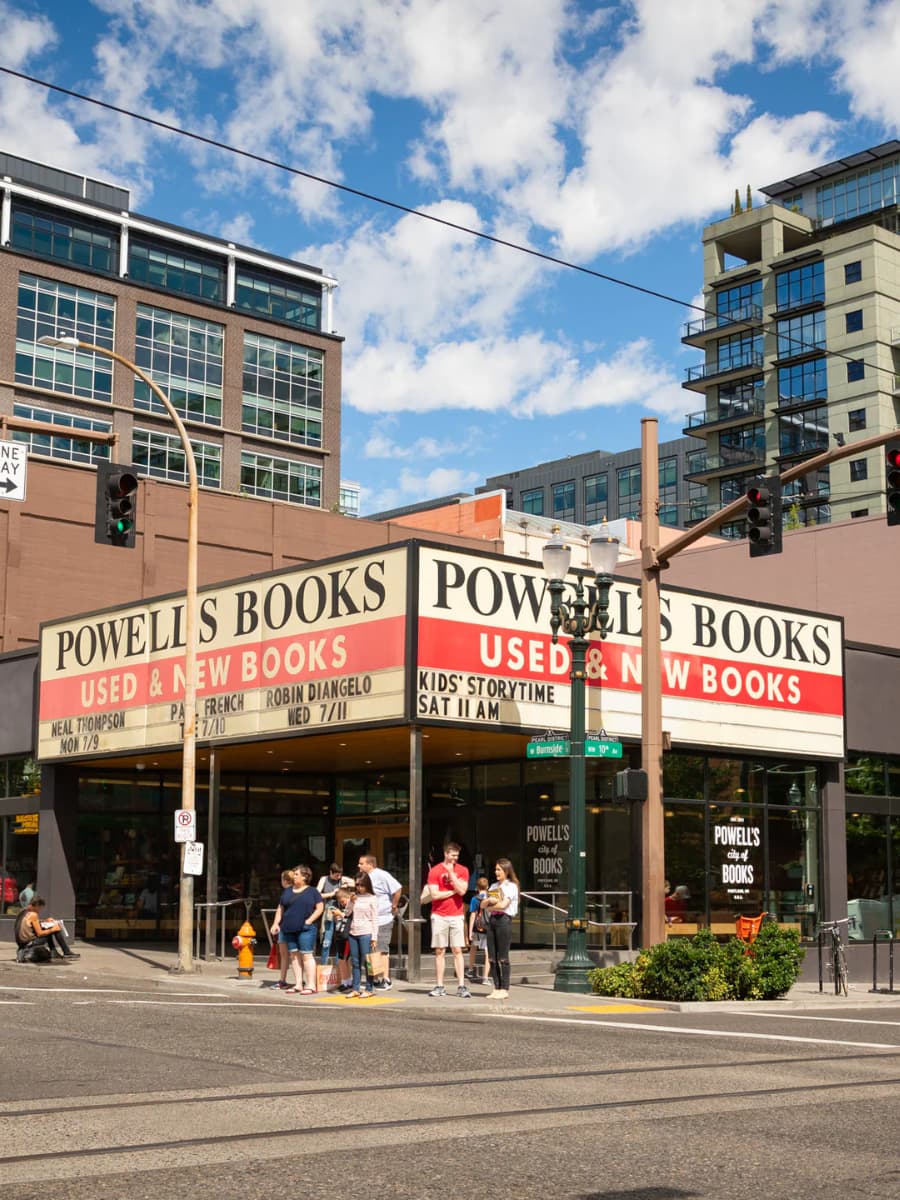
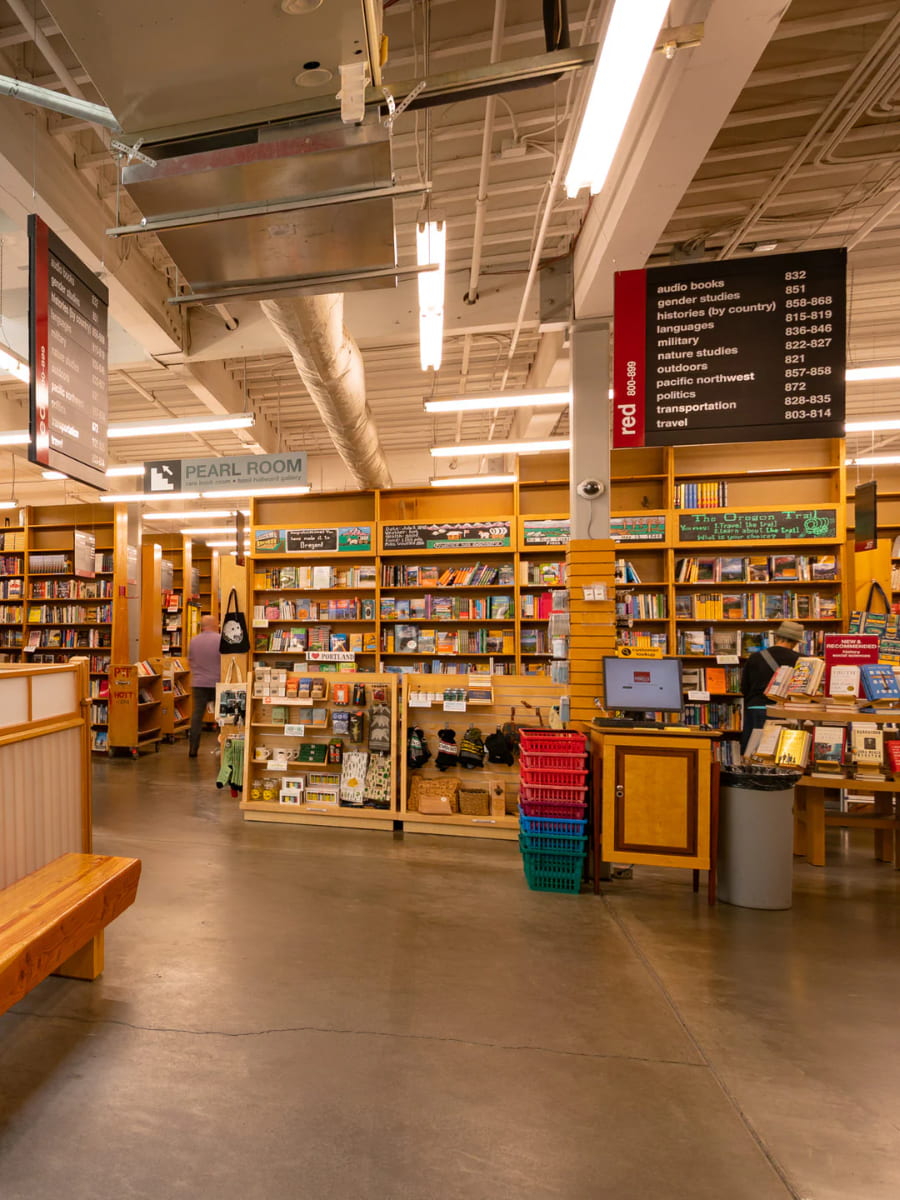
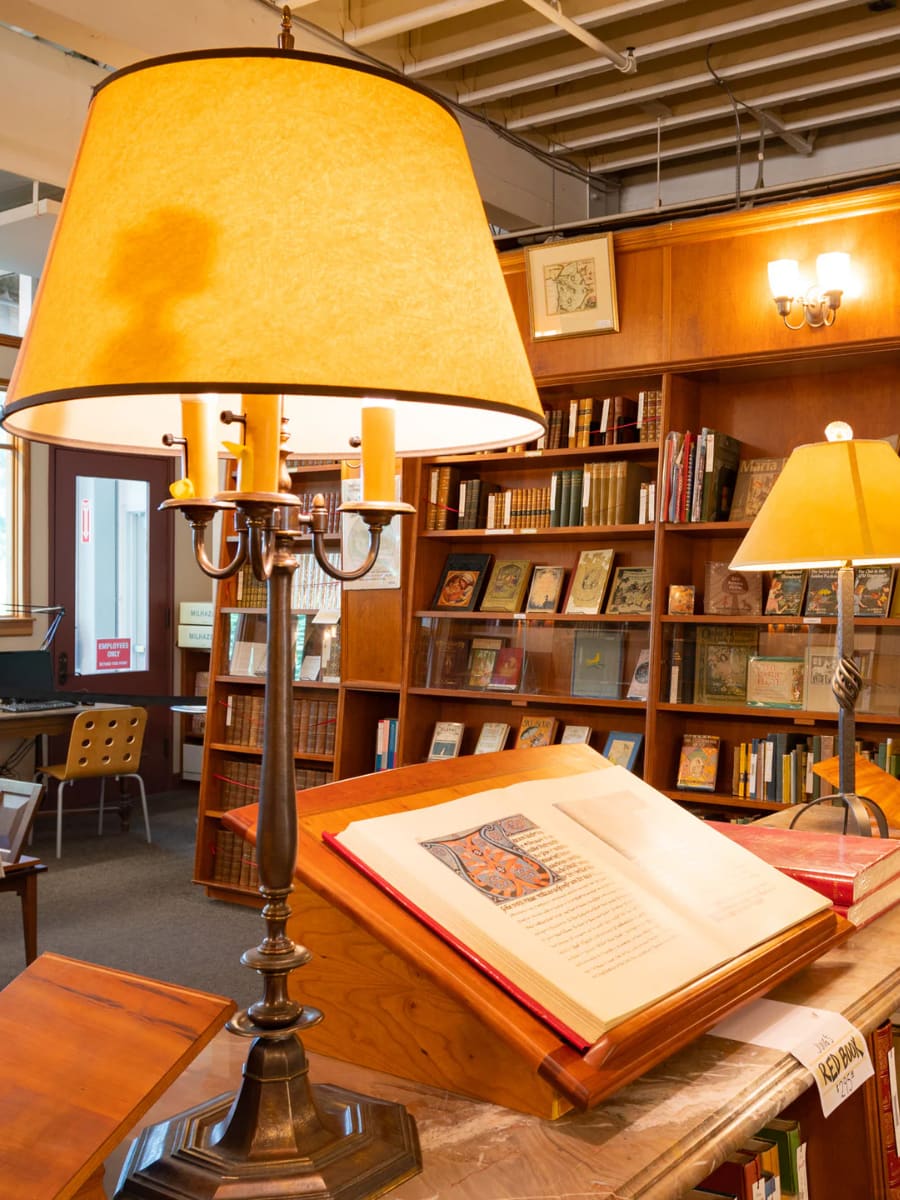

Local culture hub. Beyond just books, Powell’s represents Portland’s intellectual spirit. I’ve attended several author readings in their event space, where both famous writers and local talents share their work. The coffee shop inside makes it easy to spend an entire rainy afternoon browsing with a locally-roasted brew in hand.
Shopping tips. Before leaving, I always check out the “Staff Picks” section for unexpected recommendations and the Portland-themed gifts near the registers. If you’re overwhelmed by the size, free store maps are available at the entrance, or you can ask one of the knowledgeable staff members for directions.
- Must-visit sections:
- Rare Book Room (top floor)
- Northwest Authors section
- Sci-Fi/Fantasy tower
- Children’s Book Room
- Portland-specific guidebooks
⭐ Best Activities
- Private Portland City Tour: Gardens, History, and Iconic Sights – Enjoy a personalized exploration of Portland’s historic landmarks and cultural heritage on this private tour that showcases the city’s vibrant neighborhoods, beautiful gardens, and distinctive architecture at your own pace.
4. Pittock Mansion
Historic elegance. I climbed the winding road to Pittock Mansion, perched 1,000 feet above Portland in the West Hills, and was rewarded with both architectural splendor and spectacular city views. This French Renaissance-style château was built in 1914 for newspaper pioneer Henry Pittock and his wife Georgiana, prominent figures in Portland’s early development.
Interior treasures. Walking through the 46-room mansion, I admired the blend of Victorian elegance and modern innovations that were cutting-edge for their time. The Turkish smoking room with its ornate ceiling particularly caught my eye, as did Georgiana’s music room with its original Steinway piano. Each room tells part of Portland’s story through the lives of this influential family.
- Mansion highlights:
- ◦ Oval marble entrance hall ◦
- Panoramic picture windows ◦
- Original furnishings and artifacts
- ◦ Early intercom system ◦
- Central heating system ◦
- Indirect lighting fixtures
Outdoor splendor. After touring the house, I strolled through the 46-acre estate’s manicured gardens, where rhododendrons and azaleas create colorful displays in spring. The sweeping lawn offers one of Portland’s best picnic spots with views extending to Mount Hood, Mount St. Helens, and the Cascade Range on clear days.
| Visitor Information | Details |
|---|---|
| Admission | Adults: $12, Seniors (65+): $11, Youth (6-18): $8, Children under 6: Free |
| Hours | 10:00 AM – 4:00 PM (Feb-Dec), Closed Mondays in Jan-Feb |
| Parking | Free lot on-site |
| Accessibility | First floor wheelchair accessible; virtual tour available for upper floors |
| Photography | Permitted without flash |
⭐ Best Activities
- Private Portland City Tour: Gardens, History, and Iconic Sights – Enjoy a personalized exploration of Portland’s historic landmarks and cultural heritage on this private tour that showcases the city’s vibrant neighborhoods, beautiful gardens, and distinctive architecture at your own pace.
5. OMSI (Oregon Museum of Science and Industry)
Science wonderland. I spent a fascinating day at OMSI, Portland’s premier science museum located on the east bank of the Willamette River. This hands-on museum makes complex scientific concepts accessible through interactive exhibits spanning five halls, with everything from physics experiments to dinosaur displays that change my perspective on the natural world.
Submarine adventure. One of my most memorable experiences was touring the USS Blueback submarine docked outside the museum – the same vessel featured in “The Hunt for Red October.” The guided tour took me through tight corridors and control rooms, where I learned about underwater navigation and life aboard a naval vessel from knowledgeable docents.
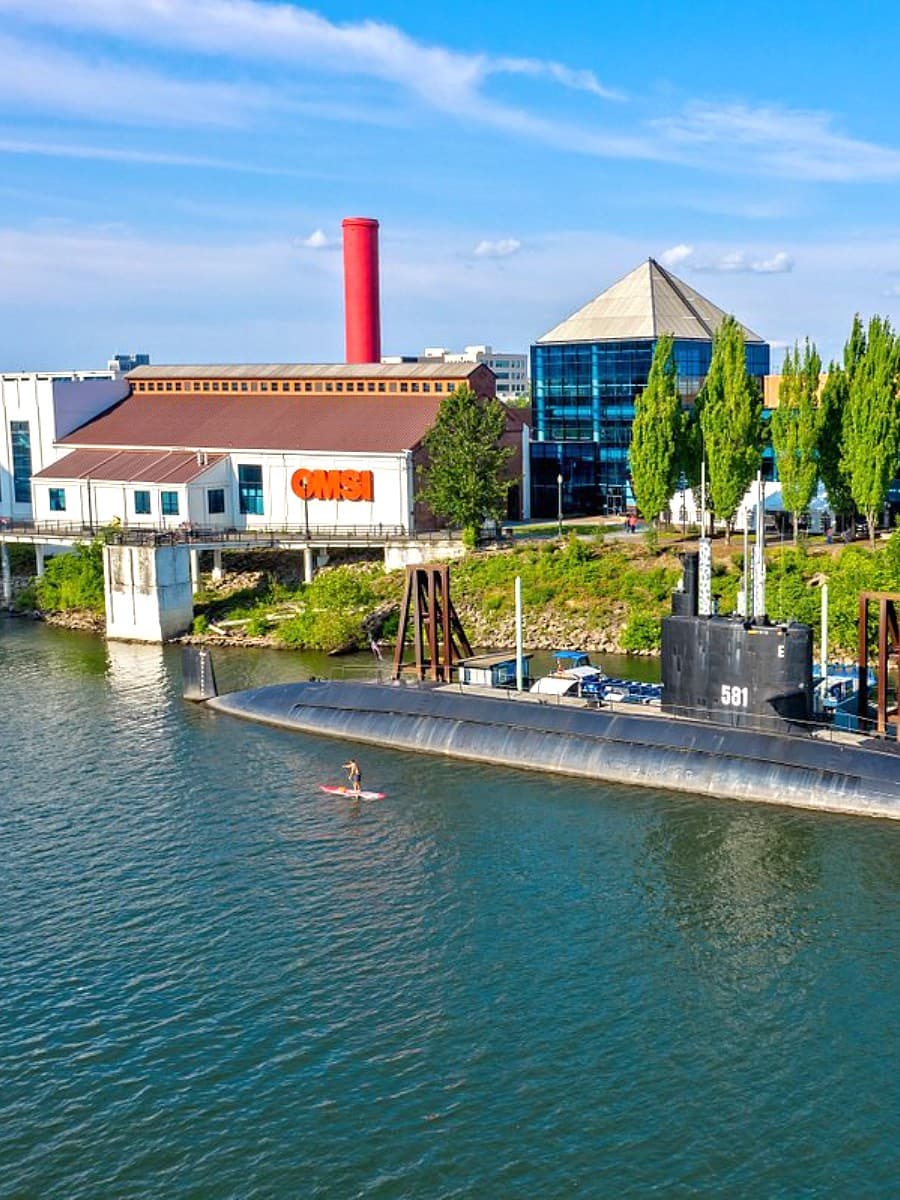
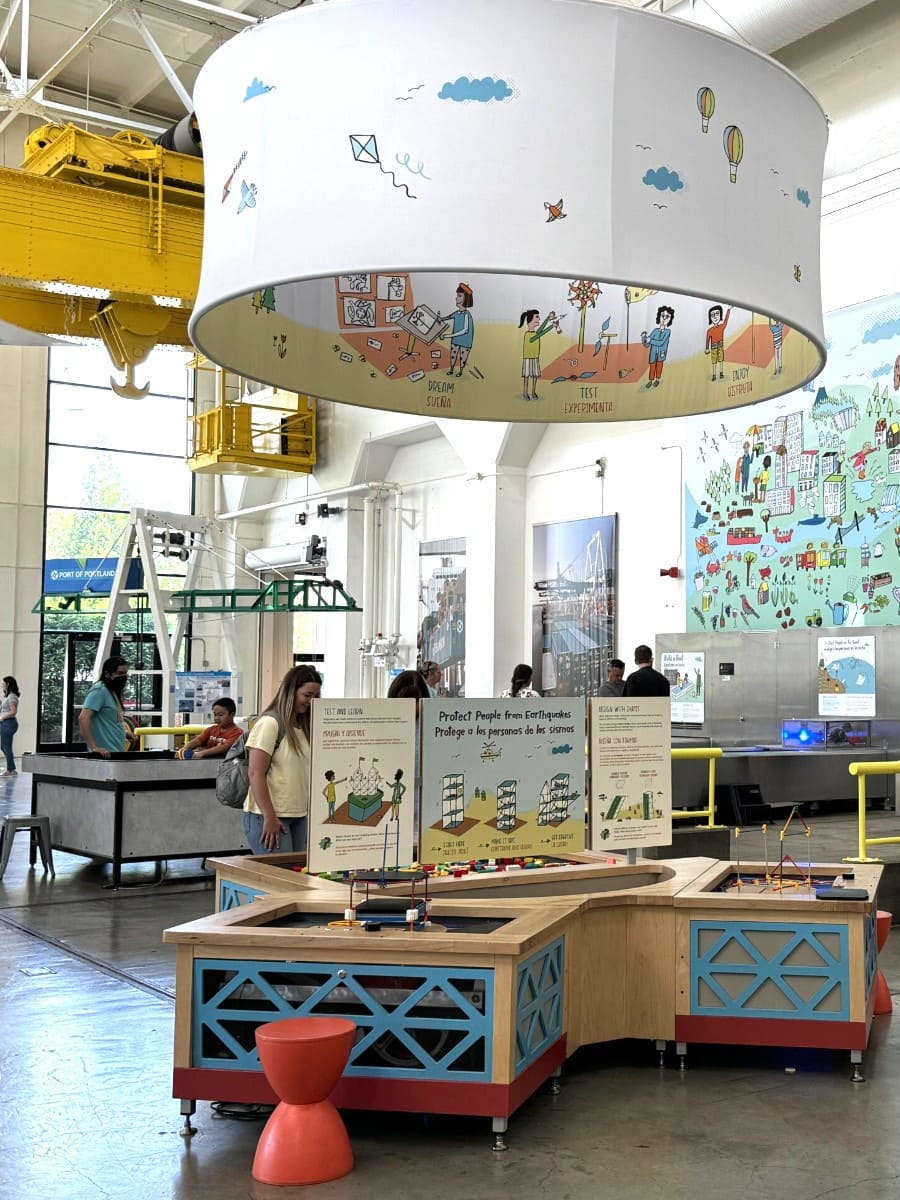
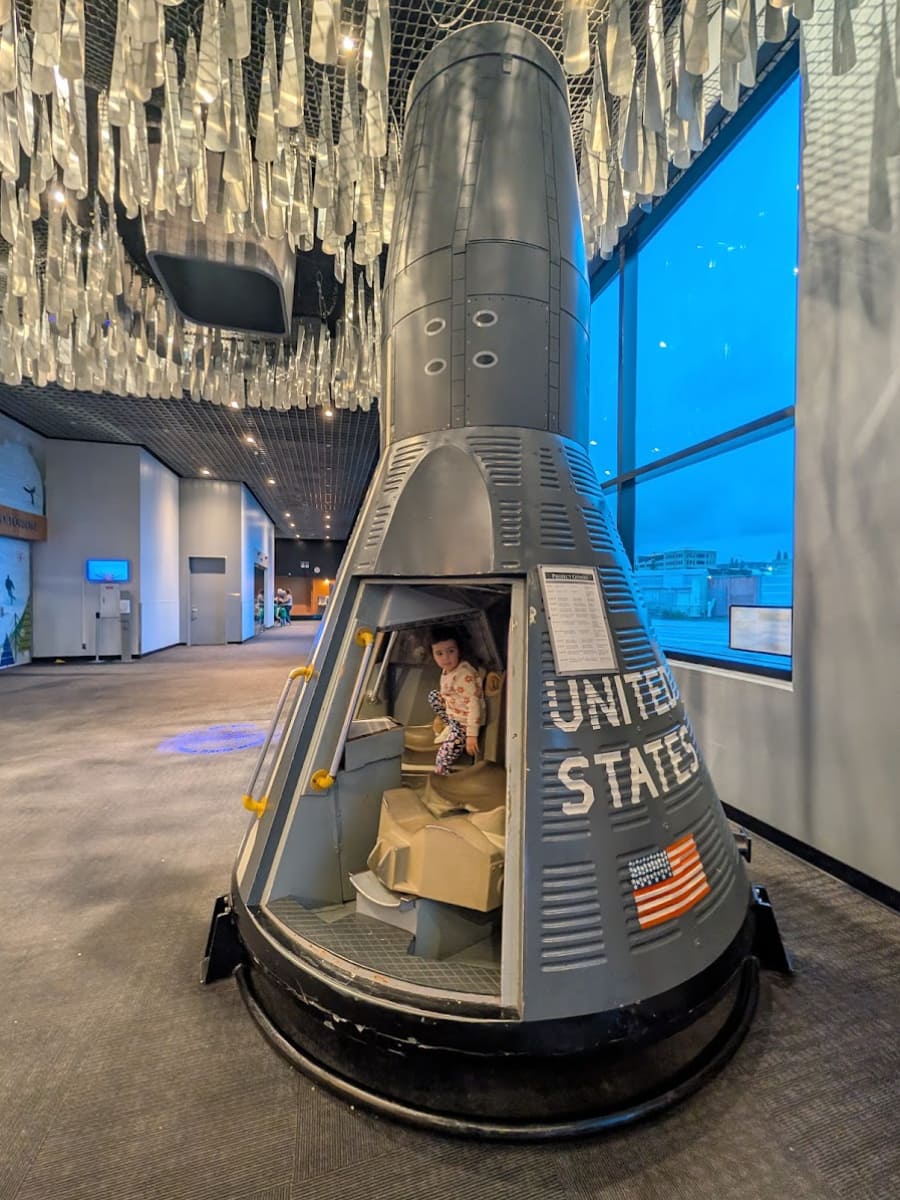
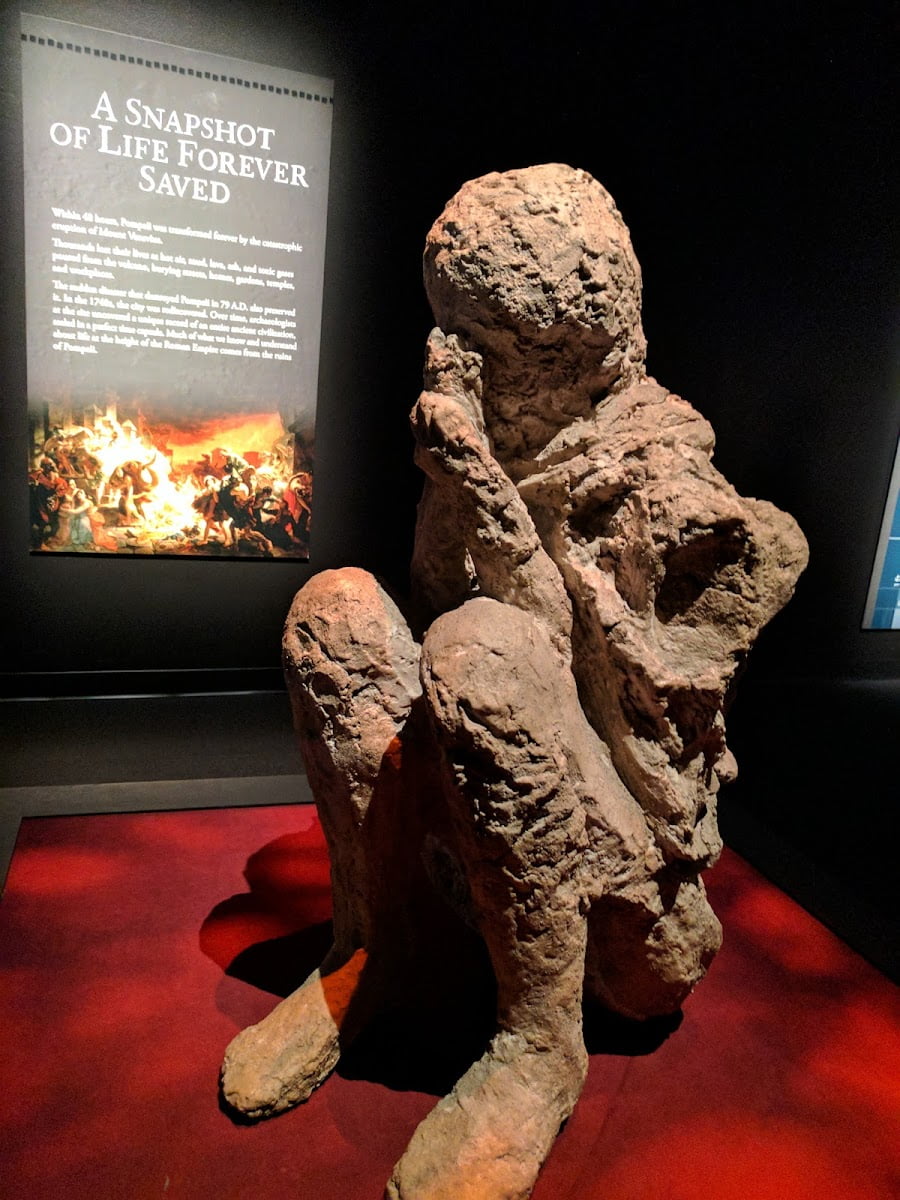
Hands-on learning. What makes OMSI special is how interactive everything is – I built structures to test earthquake resistance, created tornados in water columns, and explored the physics of sound waves through hands-on stations. The Chemistry Lab offers daily demonstrations where I watched (and smelled!) colorful chemical reactions performed by enthusiastic staff scientists.
| Ticket Options | Price | Includes |
|---|---|---|
| General Admission | Adults: $15, Youth (3-13): $10.50 | All exhibit halls |
| Premium Pass | Adults: $22, Youth: $18 | Exhibit halls + submarine + theater |
| Planetarium | $7.50 (plus admission) | 30-minute astronomy show |
| Submarine Tour | $7.50 (plus admission) | 45-minute guided tour |
| OMNIMAX Theater | $9.50 (plus admission) | Feature film on 4-story screen |
⭐ Best Activities
- Portland: 2-Hour Essential Guided Bike Tour – Discover Portland’s vibrant heart on this 2-hour guided bicycle adventure that takes you through historic Old Town, along the scenic Waterfront Esplanade, and into the trendy Pearl District with options for standard or electric bikes.
6. Pearl District
Urban transformation. I wandered through the Pearl District, marveling at how this former industrial zone has become Portland’s trendiest neighborhood. Abandoned warehouses now house art galleries, boutique shops, and some of the city’s best restaurants, all while maintaining their historic brick exteriors and industrial character.
Art scene immersion. On the first Thursday of each month, I join locals for the Pearl District’s famous art walk, when galleries stay open late and offer free wine while showcasing new exhibitions. Even on regular days, the neighborhood’s 30+ galleries provide a perfect afternoon of art browsing, with everything from contemporary paintings to indigenous crafts represented.
Culinary delights. The Pearl’s food scene has become my go-to for impressing out-of-town visitors. I’ve savored innovative farm-to-table cuisine at Andina, enjoyed craft cocktails at Teardrop Lounge, and started countless mornings with perfect pastries from Nuvrei. The district’s transformation extends to its brewing heritage, with 10 Barrel and Rogue offering tasting rooms in converted industrial spaces.
- Pearl District essentials:
- Jamison Square (fountain park perfect for people-watching)
- Elizabeth Leach Gallery (contemporary art since 1981)
- Tanner Springs Park (urban wetland with sculptural elements)
- North Park Blocks (tree-lined pedestrian area)
- Made Here PDX (shop featuring Portland-made products)
⭐ Best Activities
- Essential Portland 2-Hour Bike Tour – Pedal through Portland’s most iconic neighborhoods on this 2-hour guided bike tour featuring the historic Old Town, scenic Waterfront Park, trendy Pearl District, and the Steel Bridge, with knowledgeable guides sharing local insights along the way.
7. Alberta Arts District
Creative energy. I fell in love with Alberta Street’s vibrant energy the first time I strolled its 15-block stretch in Northeast Portland. This formerly neglected neighborhood has transformed into a colorful arts district where murals cover building walls, quirky boutiques sell locally-made goods, and restaurants serve globally-inspired cuisine with Portland’s farm-to-table ethos.
Art immersion. Last Thursday is when Alberta truly comes alive – I joined thousands of locals for this monthly street festival where artists sell their work directly to the public, musicians perform on sidewalks, and food carts serve everything from Thai street food to artisanal ice cream. Even on regular days, galleries like Antler and Guardino showcase emerging Pacific Northwest artists.
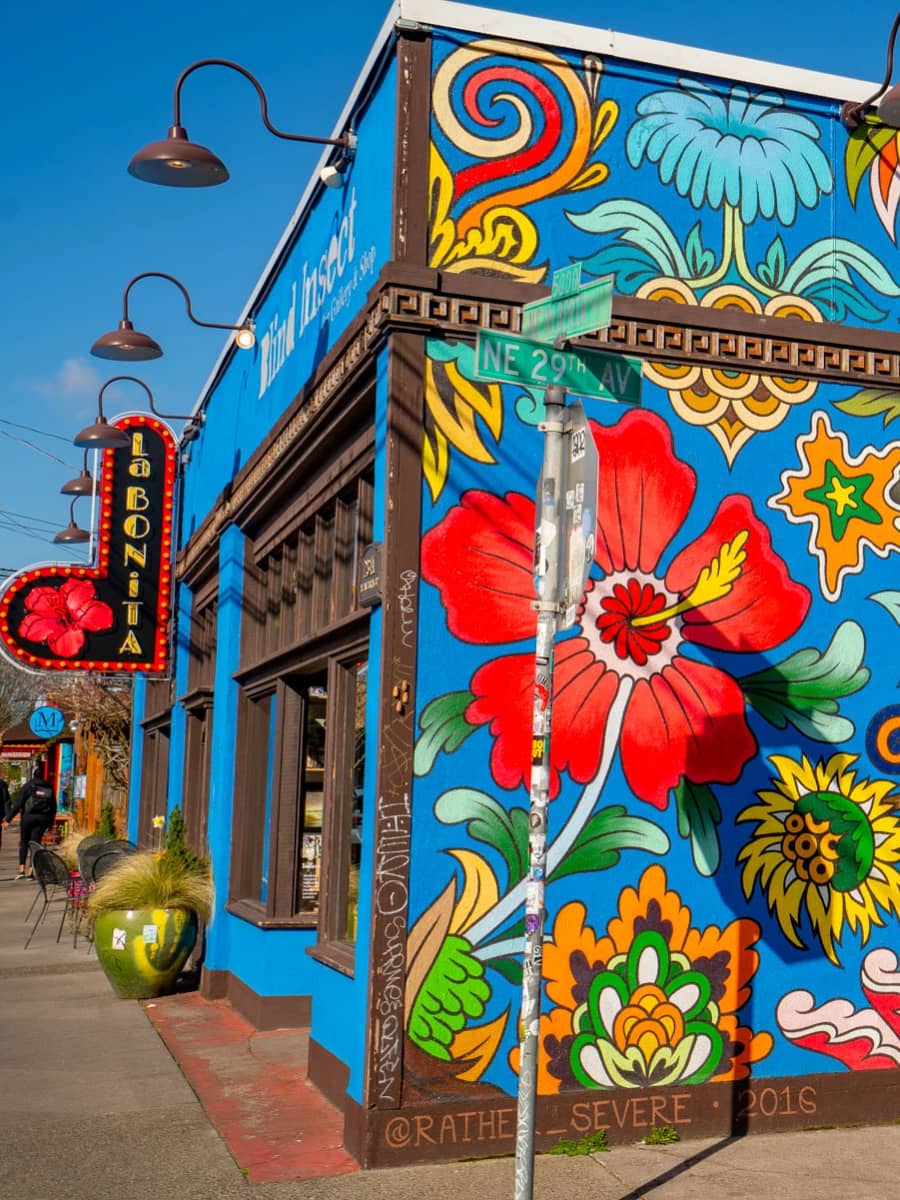
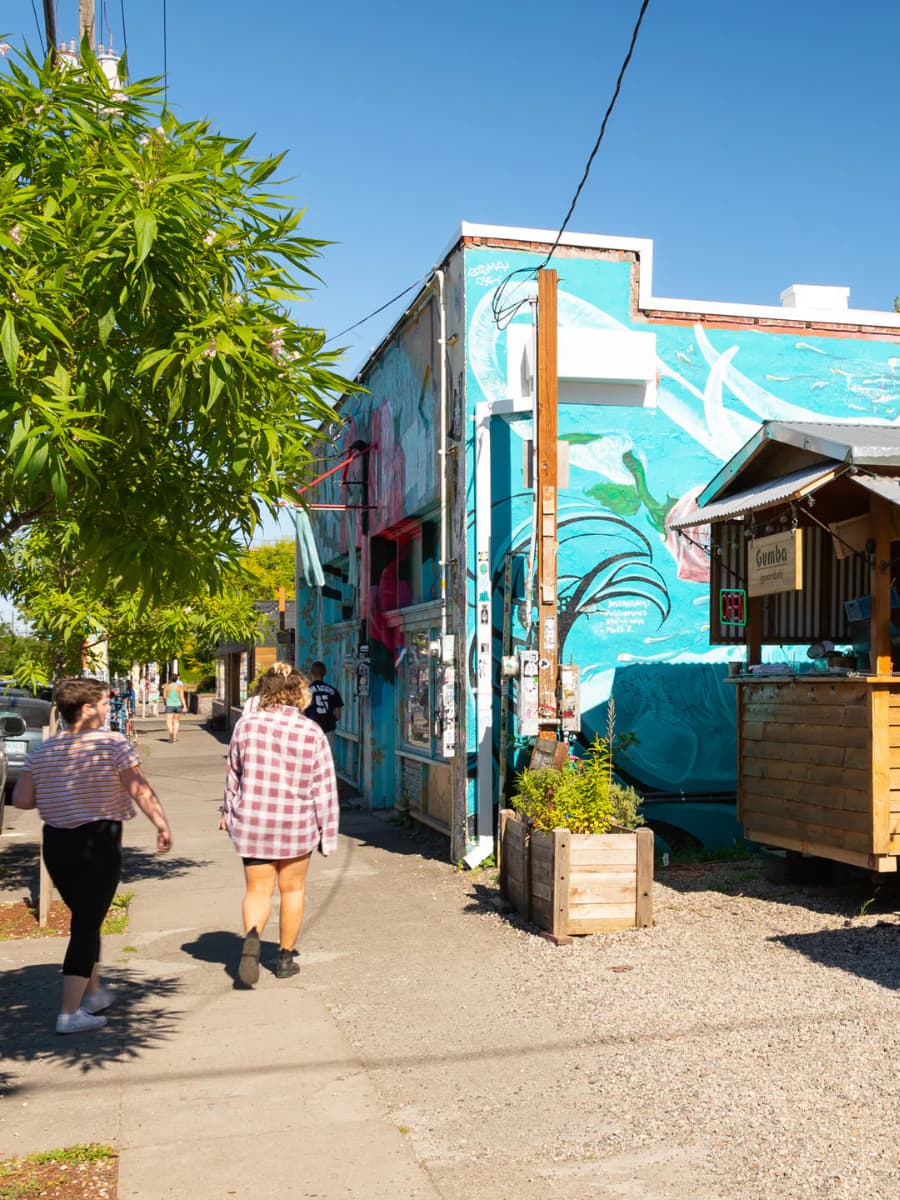
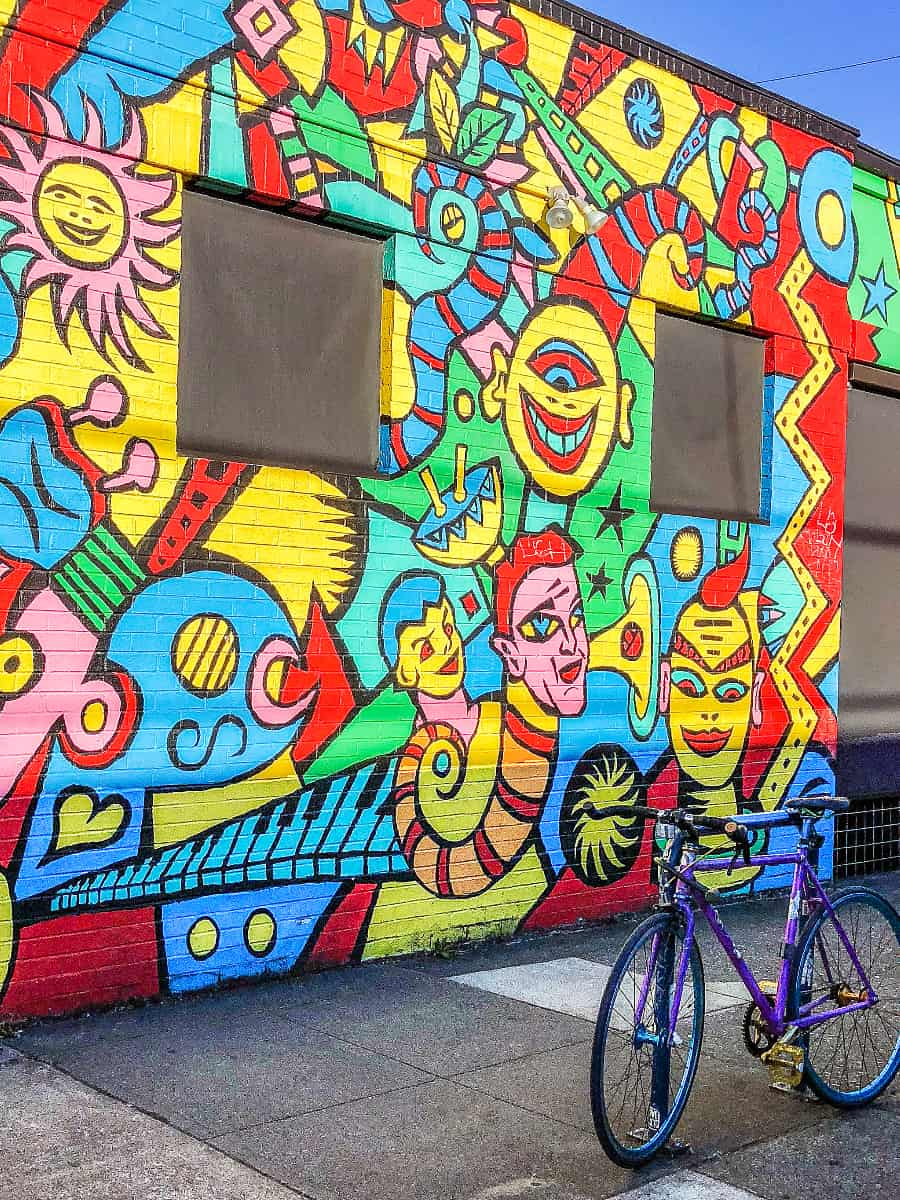
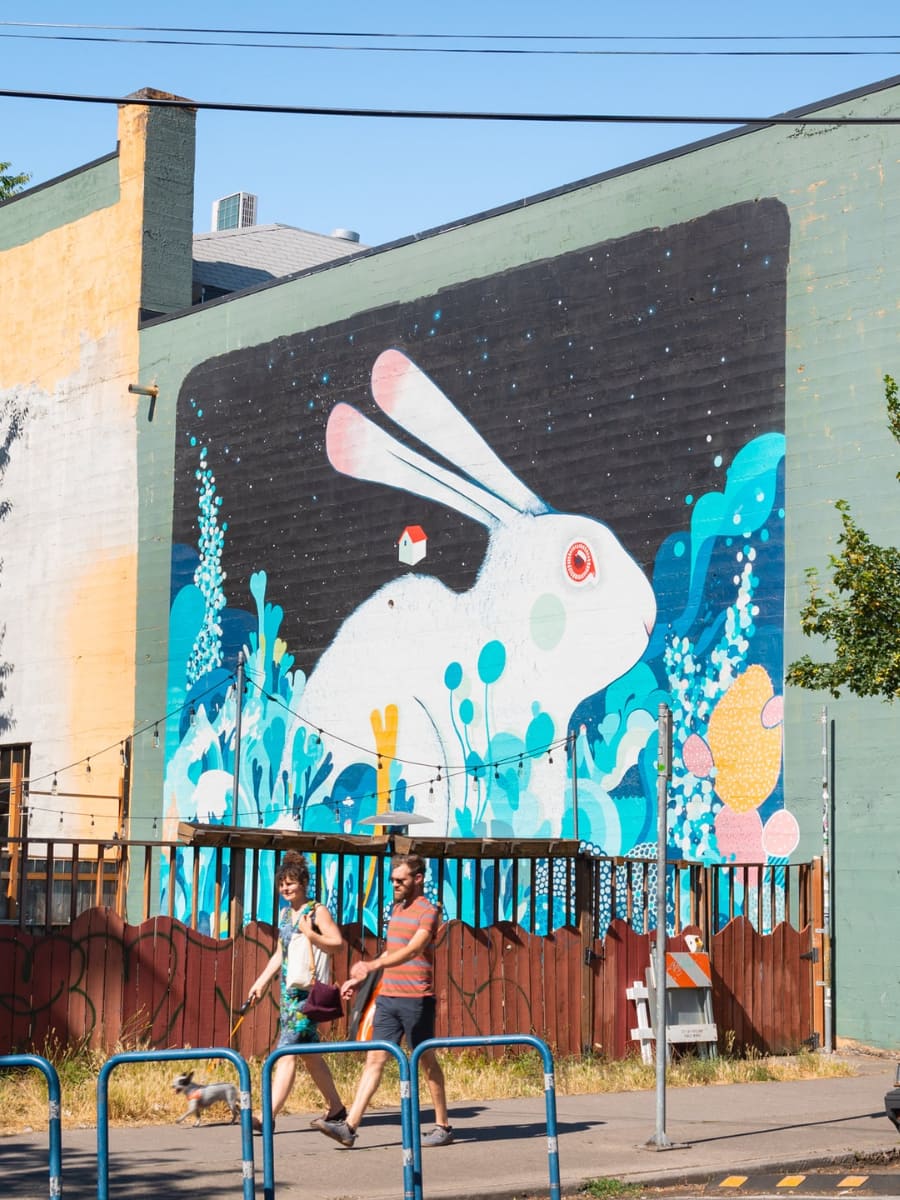
- Alberta Arts highlights:
- Community Cycling Center (nonprofit bike shop)
- Alberta Rose Theatre (restored 1927 movie house)
- Random Order Pie Bar (sweet and savory pies)
- Salt & Straw (famous for unusual ice cream flavors)
- Tin Shed Garden Cafe (dog-friendly patio)
Local shopping. I’ve found some of my favorite Portland souvenirs while browsing Alberta’s independent shops. Frock boutique offers vintage-inspired clothing, Ampersand Gallery combines art books with photography exhibits, and Close Knit has become my go-to for locally-dyed yarns and knitting supplies – all offering unique alternatives to standard tourist merchandise.
| Alberta Arts Experience | What to Expect | Best Time to Visit |
|---|---|---|
| Last Thursday Art Walk | Street festival with vendors, music, food | Monthly (last Thursday), 6-9:30 PM |
| Mural hunting | Dozens of street art pieces | Daytime for best photos |
| Boutique shopping | Independent retailers, local designers | Weekday afternoons to avoid crowds |
| Dining scene | Global cuisines, craft cocktails | Dinner reservations recommended on weekends |
| Coffee culture | Independent roasters, artisan cafes | Morning hours for best selection |
⭐ Best Activities
- Portland's Alberta Arts District Food Tour – Savor Portland’s renowned culinary scene on this 3-hour walking food tour through the vibrant Alberta Arts District, featuring multiple food stops, craft cocktails, and fascinating insights into the neighborhood’s artistic culture and history.
8. Lan Su Chinese Garden
Cultural oasis. I discovered Lan Su Chinese Garden tucked away in Portland’s Old Town/Chinatown district, where this walled garden creates a peaceful retreat from city life. Built by artisans from Portland’s sister city of Suzhou, this authentic Ming Dynasty-style garden combines architecture, design, and plantings in perfect harmony across its full city block.
Tranquil design. Walking through the garden’s winding pathways, I admired how every view was carefully composed – from the central Lake Zither with its lotus blooms to the poetic names of pavilions like “Knowing the Fish” and “Painted Boat in Misty Rain.” The garden represents one of Portland’s most authentic cultural experiences, with every rock, plant, and architectural element placed according to centuries-old principles.
- Garden highlights for visitors:
- Lake Zither (central water feature)
- Hall of Brocade Clouds (main pavilion)
- Scholar’s Study and Library
- Tea House serving traditional Chinese teas
- Moon Locking Pavilion (best views of the garden)
Cultural programming. Beyond the physical beauty, I discovered that Lan Su offers a rich calendar of events that celebrate Chinese culture. I’ve attended traditional music performances, tai chi demonstrations, and calligraphy workshops that provided deeper insight into Chinese traditions. During Chinese New Year, the garden hosts two weeks of special celebrations with lion dances, martial arts, and cultural performances.
| Visitor Information | Details |
|---|---|
| Admission | Adults: $12.95, Seniors: $11.95, Students: $9.95, Children (5 & under): Free |
| Hours | 10:00 AM – 6:00 PM (Apr-Oct), 10:00 AM – 5:00 PM (Nov-Mar) |
| Tea House | Additional cost, reservations recommended for formal tea service |
| Best Time to Visit | Weekday mornings to avoid crowds, February for Chinese New Year |
| Nearby Attractions | Portland Saturday Market, Voodoo Doughnut, Waterfront Park |
9. The Grotto
Sacred sanctuary. I found The Grotto (officially The National Sanctuary of Our Sorrowful Mother) to be one of Portland’s most peaceful spots, offering 62 acres of botanical gardens and religious shrines set against a 110-foot cliff face. Located in Northeast Portland, this Catholic sanctuary welcomes visitors of all faiths to enjoy its tranquil grounds, which have been a place of reflection since 1924.
Two-level experience. The sanctuary is divided into two main sections – the ground-level gardens surrounding the cave shrine carved into the base of the cliff, which are free to visit, and the upper-level botanical gardens accessible via elevator for a small fee. I spent time in both areas, appreciating how the lower gardens offer a more contemplative experience while the upper gardens provide stunning views across the Columbia River to Washington state.
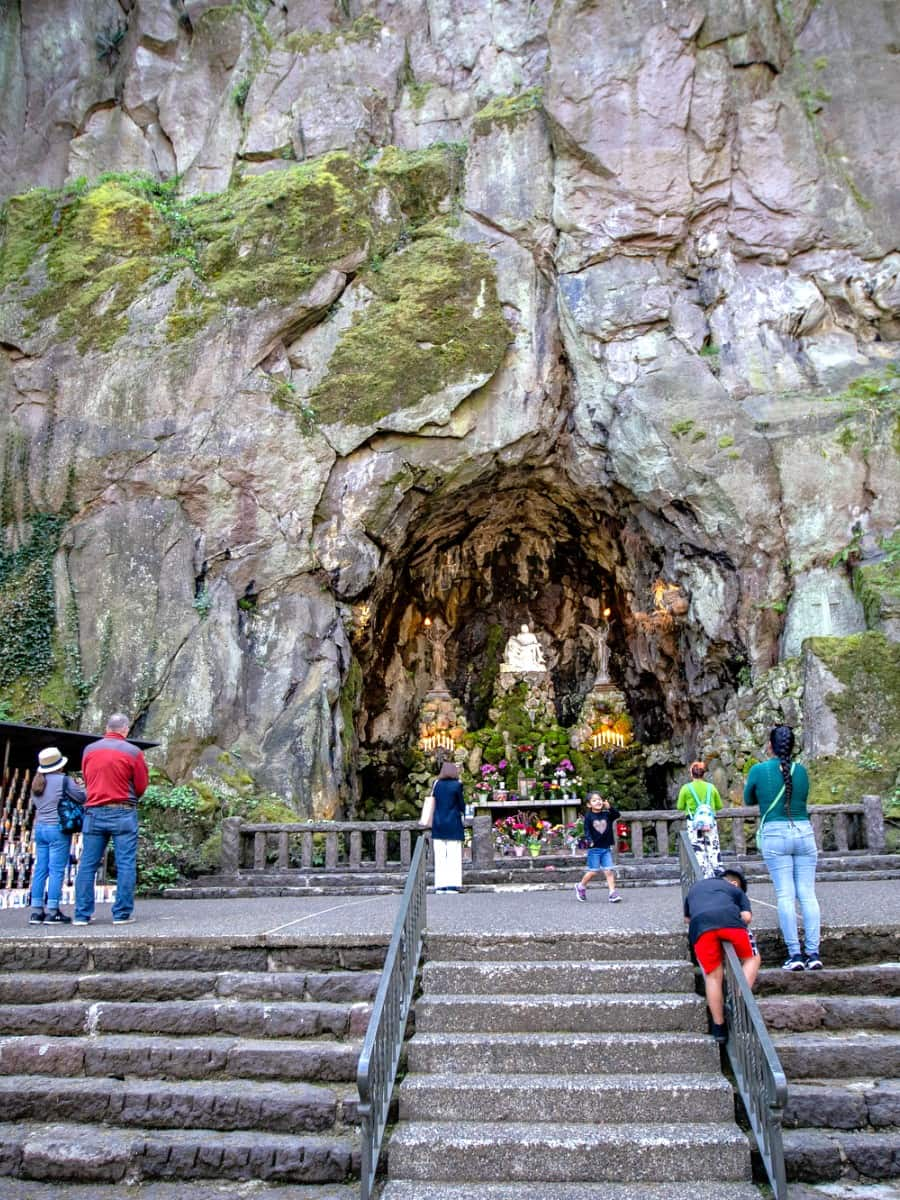
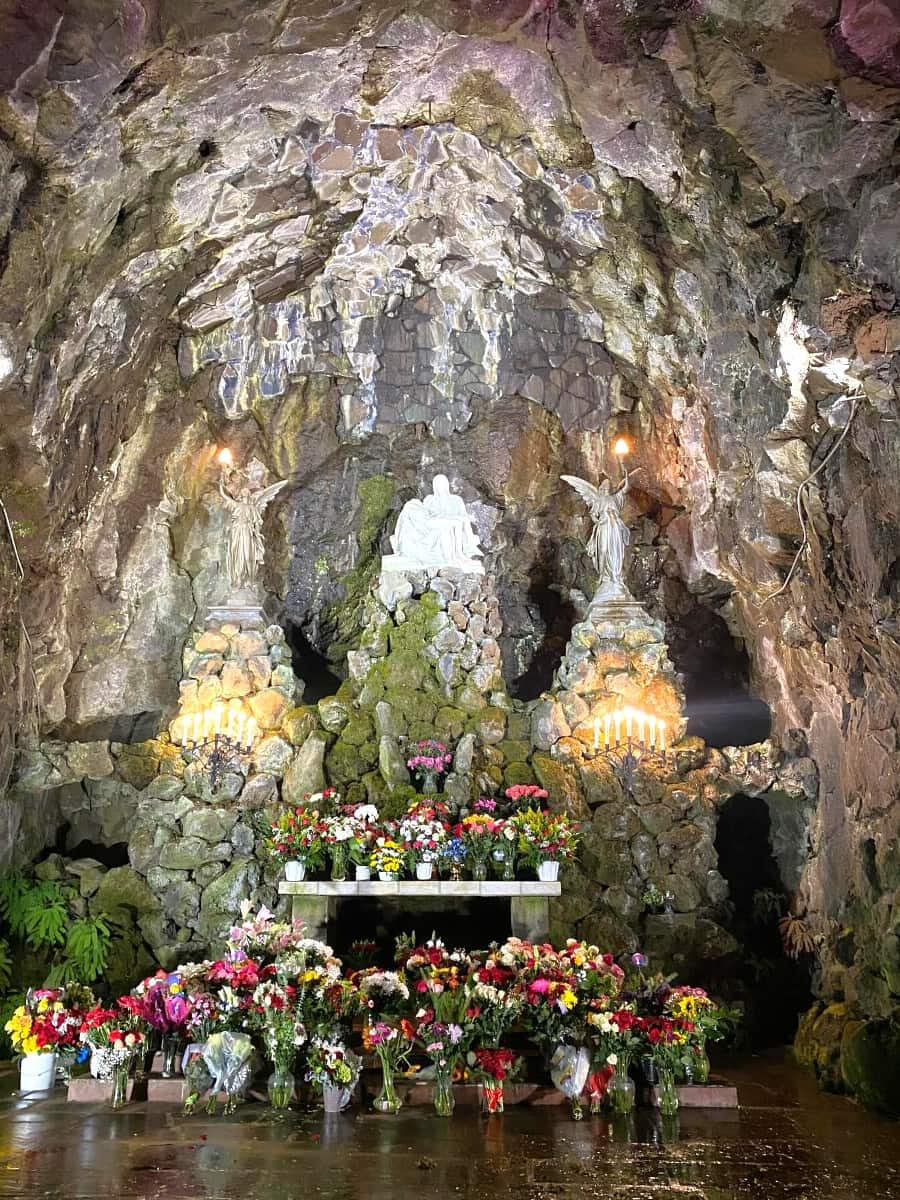
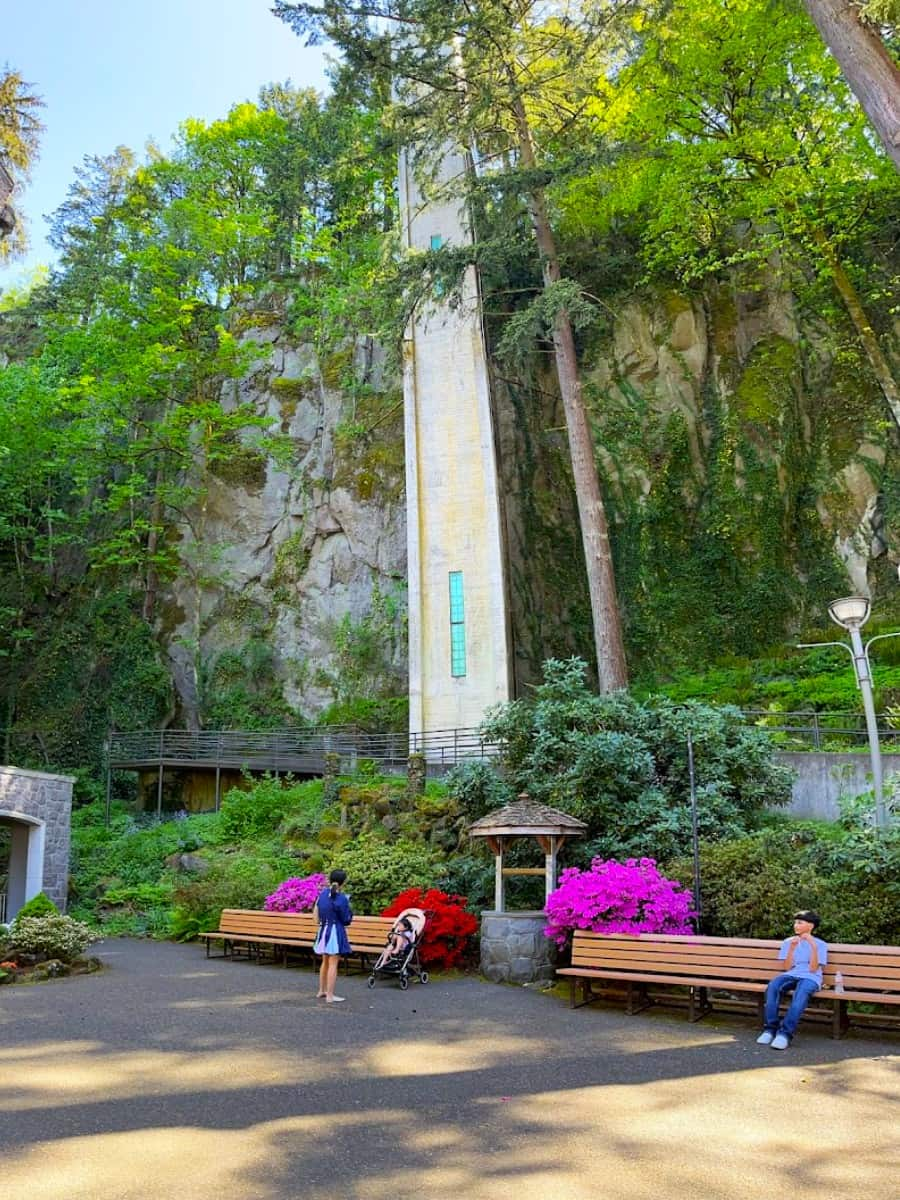
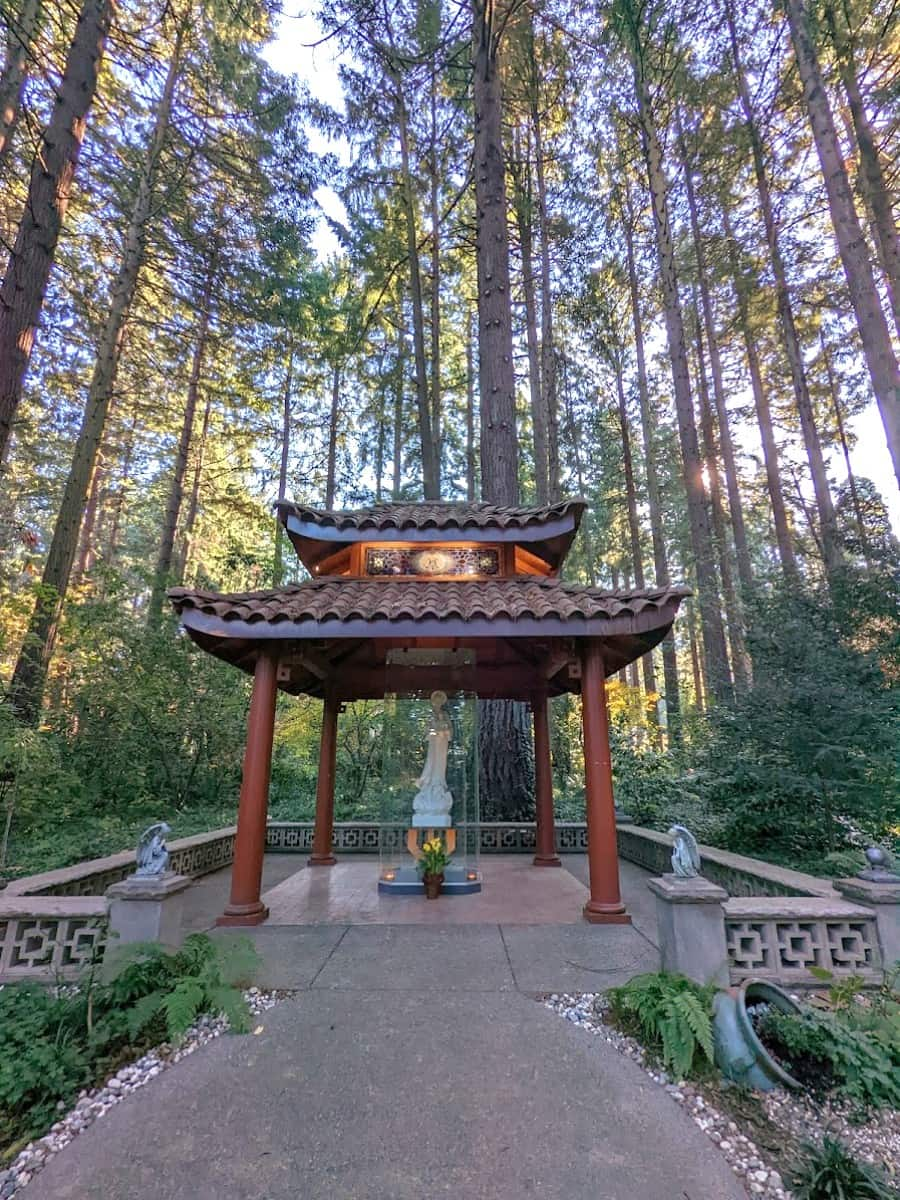
- Highlights of The Grotto:
- Our Sorrowful Mother Shrine (cave grotto)
- Peace Garden with reflection pond
- Meditation Chapel with panoramic views
- St. Anne’s Chapel with beautiful stained glass
- Stations of the Cross pathway through forest
Seasonal beauty. Each season brings different charms to The Grotto – spring rhododendrons and azaleas, summer roses, fall foliage, and the spectacular Christmas Festival of Lights that transforms the sanctuary with over half a million lights during December. This holiday tradition has become one of Portland’s most beloved winter events, featuring indoor concerts, carolers, and illuminated pathways through the gardens.
| Visitor Information | Details |
|---|---|
| Ground Level | Free admission |
| Upper Gardens | $8 adults, $7 seniors, $4 children (6-12) |
| Hours | 9:00 AM – 8:30 PM (May-Sept), 9:00 AM – 6:30 PM (Oct-Apr) |
| Christmas Festival | Dec 1-30, 5:00-9:30 PM, $14 adults, $7 children |
| Location | NE Sandy Blvd, accessible via TriMet bus #12 |
10. Washington Park
Urban wilderness. I wandered through Washington Park, a 410-acre green space in Northwest Portland that houses six major attractions within its boundaries. This expansive park serves as one of Portland’s outdoor living rooms, where locals and visitors alike enjoy cultural institutions, formal gardens, and miles of forested trails just minutes from downtown.
Cultural hub. What makes Washington Park special is the concentration of Portland’s premier attractions in one location – I visited the International Rose Test Garden, Portland Japanese Garden, Oregon Zoo, Portland Children’s Museum, World Forestry Center, and Hoyt Arboretum all without leaving the park boundaries. The free Washington Park shuttle connects these attractions, making it easy to experience several in a single day.
- Washington Park highlights:
- Iconic bronze statue of Lewis & Clark
- Children’s playground with water features
- Tennis courts and soccer fields
- Vietnam Veterans Memorial
- Oregon Holocaust Memorial
- Washington Park MAX station (deepest transit station in North America)
Practical enjoyment. I discovered that parking can be challenging during summer weekends, so I often take the MAX Blue or Red line directly to the Washington Park station. The park’s elevation provides some of the best views in Portland, particularly from the Rose Garden and the various vista points along the trails that connect to the broader Forest Park system.
| Washington Park Attraction | Cost | Best For |
|---|---|---|
| International Rose Test Garden | Free | Flower lovers, photographers |
| Portland Japanese Garden | $18.95 adults | Tranquility seekers, garden enthusiasts |
| Oregon Zoo | $17.95 adults | Families, wildlife enthusiasts |
| Portland Children’s Museum | $11 per person | Families with children under 10 |
| Hoyt Arboretum | Free | Hikers, tree enthusiasts |
| World Forestry Center | $8 adults | Educational experiences |
11. Pioneer Courthouse Square
Portland’s living room. I spent a sunny afternoon people-watching at Pioneer Courthouse Square, a 40,000-square-foot urban plaza that truly functions as Portland’s living room in the heart of downtown. This brick-paved gathering space hosts over 300 programmed events each year, from summer concerts to holiday celebrations, while serving as a casual meeting spot for locals and visitors alike.
Architectural details. Walking around the square, I noticed thoughtful design elements that make this space special – the amphitheater-style seating that accommodates crowds during events, the Weather Machine sculpture that predicts the next day’s weather at noon each day, and the “Allow Me” bronze statue (affectionately known as Umbrella Man) that has become one of Portland’s most photographed landmarks.

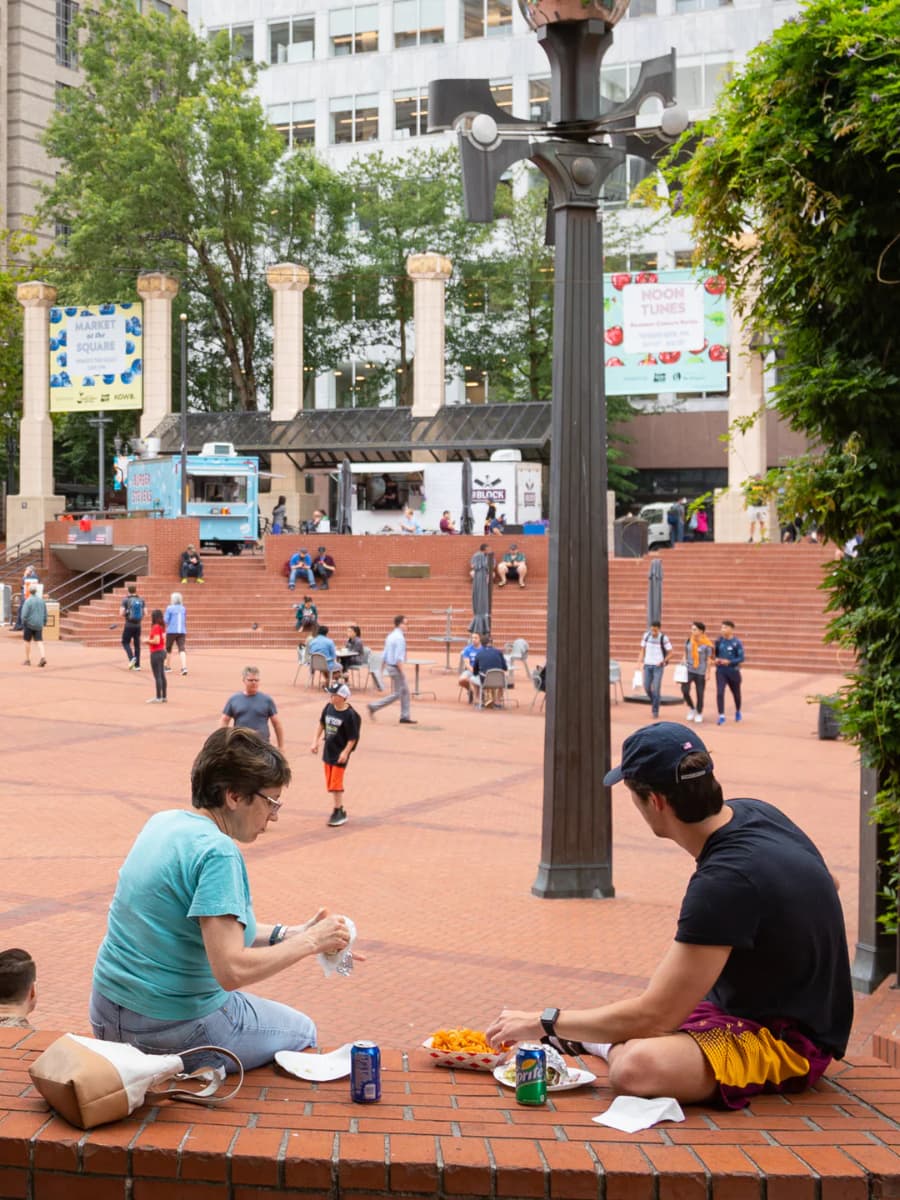

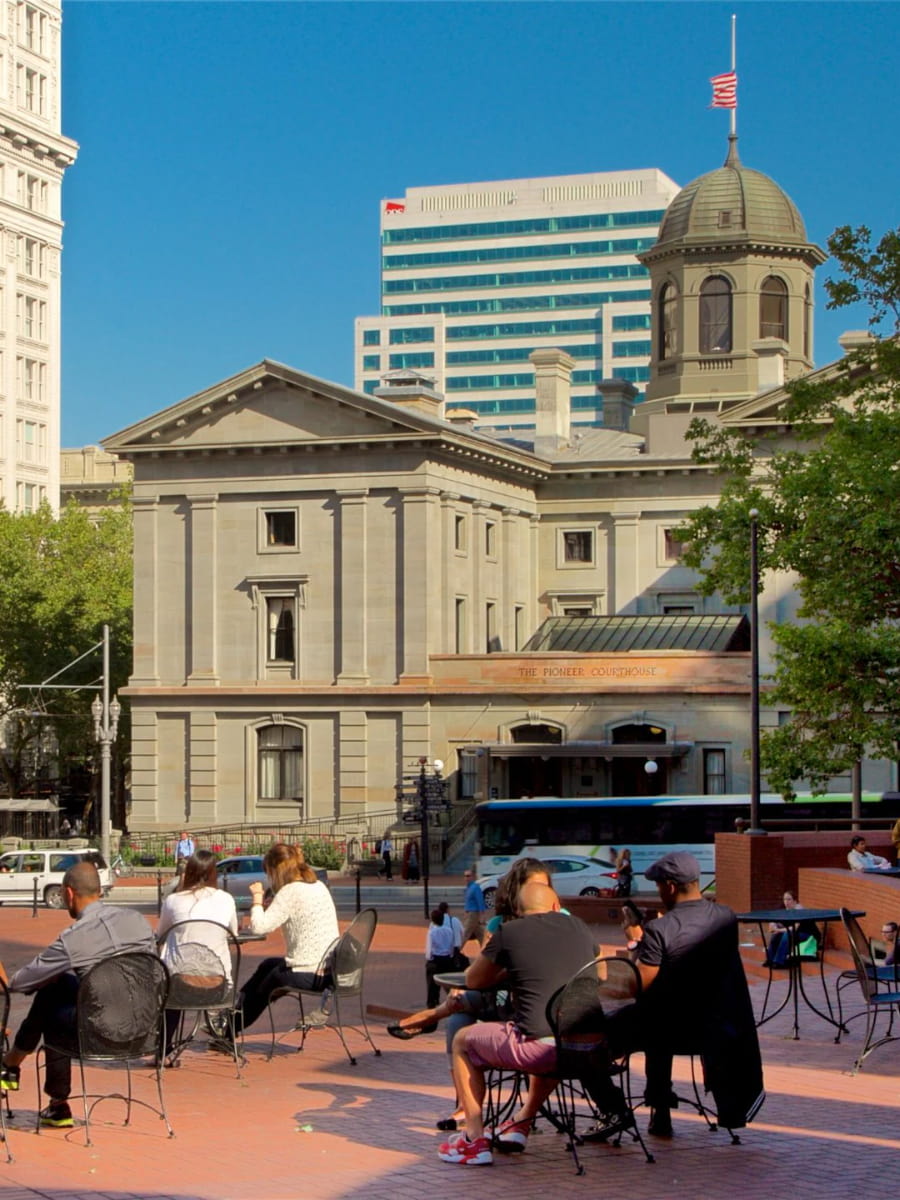
- Square highlights:
- Echo Chamber (speak into the small hole and hear your voice amplified)
- Weather Machine (daily forecast at noon)
- “Allow Me” statue by J. Seward Johnson
- Waterfall Fountain
- Bronze plaques with donors’ names
Event central. Throughout the year, I’ve attended diverse events that showcase Portland’s vibrant community spirit – the Holiday Tree Lighting ceremony that kicks off the season, the Festival of Flowers that transforms the square into a massive floral design each spring, and Summer Free for All concerts featuring local musicians. The square also houses the city’s visitor information center, where helpful staff provide maps and recommendations for exploring Portland.
| Pioneer Square Events | When | What to Expect |
|---|---|---|
| Festival of Flowers | Late May | Massive floral installation |
| Summer concerts | June-August | Free lunchtime and evening performances |
| Noon tunes | Weekdays in summer | Lunchtime music performances |
| Holiday Tree Lighting | Friday after Thanksgiving | Thousands gather for ceremony |
| Farmers Market | Mondays (summer) | Local produce and food vendors |
12. Laurelhurst Park
Historic haven. I discovered Laurelhurst Park, a 26-acre green space in Southeast Portland that feels like stepping into an English landscape painting. Designed in 1912 by the Olmsted Brothers (whose firm designed New York’s Central Park), this park was the first city park ever listed on the National Register of Historic Places and remains one of Portland’s most beloved neighborhood spaces.
Natural beauty. Strolling around Firwood Lake, I watched ducks and geese glide across the water while massive sequoias and Douglas firs created a sense of peaceful seclusion. The park’s rolling hills, picturesque stone bridges, and carefully placed benches make it perfect for picnics, reading, or simply watching Portland locals enjoy their outdoor living room – from slack-liners practicing between trees to families feeding ducks.
- Laurelhurst Park features:
- Firwood Lake with fountain
- Off-leash dog area
- Basketball and tennis courts
- Horseshoe pits
- Historic stone dance pavilion
- Playground and picnic areas
Community hub. I’ve experienced how this park serves as a gathering place for Southeast Portland residents – summer brings movie nights on the lawn, impromptu drum circles near the lake, and yoga classes under the trees. During Portland’s summer heatwaves, the park’s massive shade trees provide natural air conditioning, making it a popular refuge when temperatures rise above 90 degrees.
| Park Feature | Location | Best For |
|---|---|---|
| Firwood Lake | Center of park | Relaxation, duck watching |
| Off-leash area | Southeast corner | Dog socializing (dawn to 9 AM) |
| Historic pavilion | North side | Events, picnic shelter |
| Sports courts | East side | Basketball, tennis, volleyball |
| Great lawn | West side | Sunbathing, frisbee, picnics |
13. Oaks Amusement Park
Nostalgic fun. I stepped into Oaks Amusement Park and felt transported to a simpler time – this historic park has been operating since 1905, making it one of the oldest continuously running amusement parks in America. Located along the Willamette River in Southeast Portland, “The Oaks” combines vintage charm with modern attractions at prices that make it one of Portland’s most affordable family outings.
Classic rides. Walking through the midway, I enjoyed the perfect mix of nostalgic attractions and newer thrills – from the 1911 Herschell-Spillman hand-carved carousel (one of the oldest operating carousels in the country) to the screaming-inducing AtmosFEAR drop tower. The park’s compact size makes it manageable for families with young children, while still offering enough excitement for teenagers.
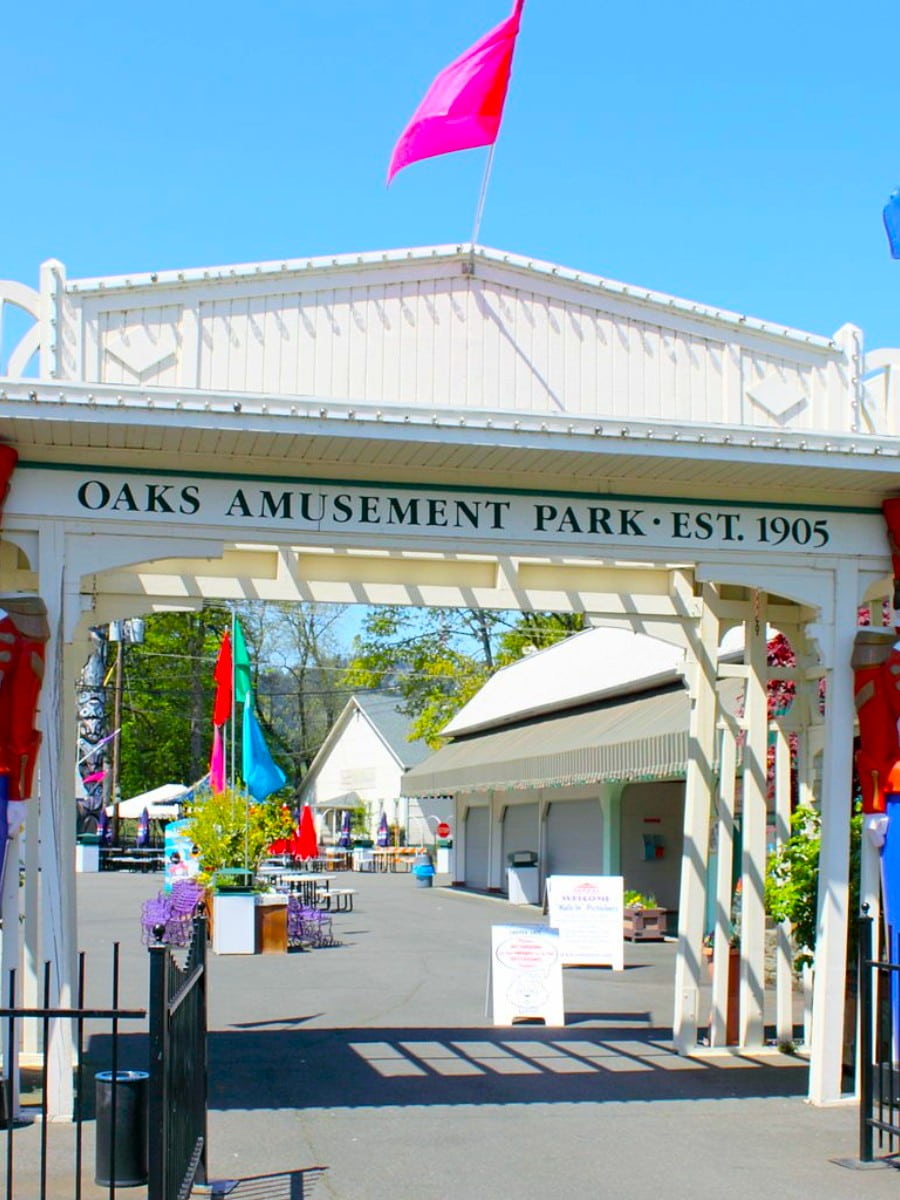
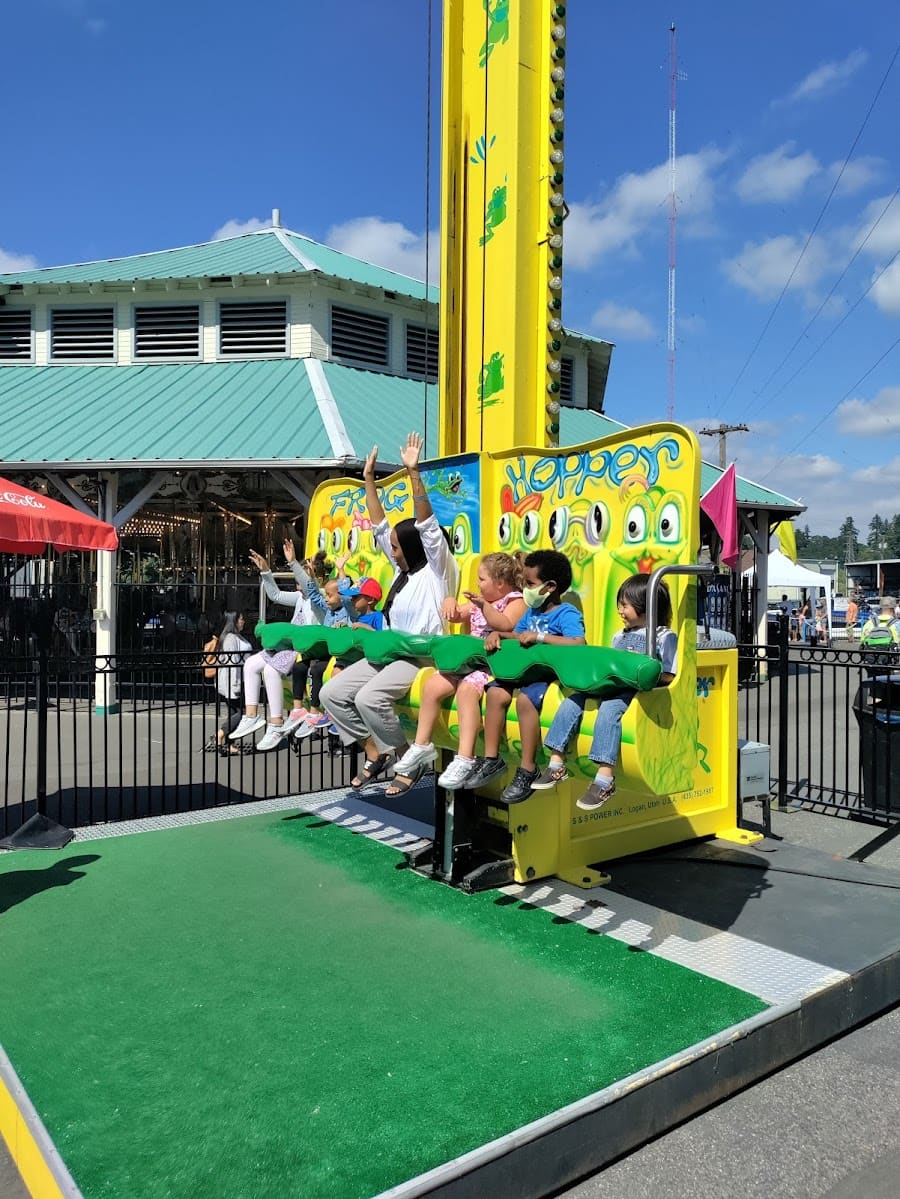
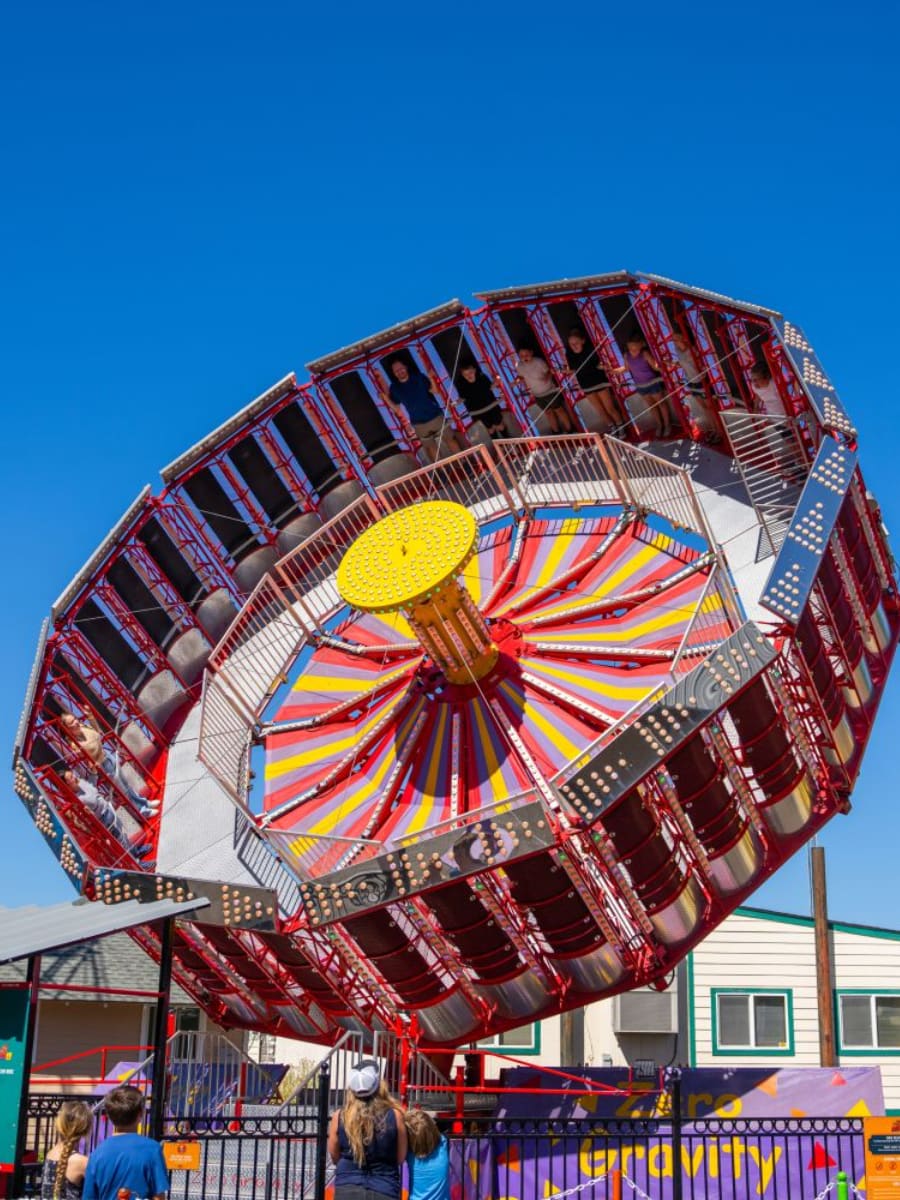

- Park highlights:
- Historic roller skating rink (one of the largest West Coast rinks)
- Vintage carousel with hand-carved horses
- Lewis & Clark Big Adventure miniature golf
- Chipper’s Woods children’s ride area
- Midway games with affordable prizes
Seasonal events. Beyond standard operations, I discovered that Oaks Park hosts special events throughout its April-September season. The Spring Carnival kicks things off, while Oktoberfest brings German-inspired celebrations in September. During Portland’s scorching summer days, the water features in the children’s area provide welcome relief, making this a perfect Portland staple for families seeking affordable entertainment.
| Attraction Type | Cost | Notes |
|---|---|---|
| Admission | Free | Pay-per-ride or wristband options |
| Ride Bracelets | $32.95-$39.95 | Unlimited rides (price varies by day) |
| Roller Skating | $8-$10.50 | Includes skate rental |
| Miniature Golf | $7 per person | 18 holes |
| Parking | $5 per vehicle | Free for skating-only visitors |
14. Portland Art Museum
Cultural cornerstone. I wandered through the Portland Art Museum, the oldest art museum in the Pacific Northwest and one of my favorite things about living in Portland. Founded in 1892, the museum spans two buildings connected by an underground gallery, housing a permanent collection of over 42,000 works that range from Native American artifacts to contemporary installations.
Diverse collections. Moving through the galleries, I discovered the museum’s impressive breadth – the Native American collection features one of the world’s finest arrays of Northwest Coast art, while the Center for Contemporary Native Art showcases modern indigenous artists. The European and American collections include works by Monet, Renoir, and Winslow Homer, while the modern and contemporary galleries feature thought-provoking installations that change regularly.
- Museum highlights:
- Northwest Art Collection
- Native American Gallery
- Jubitz Center for Modern and Contemporary Art
- Graphic Arts Collection
- Photography Collection
- European Art Collection
Community engagement. Beyond the permanent collections, I’ve attended numerous special exhibitions that bring international treasures to Portland. The museum’s quarterly “Museum After Hours” events transform the space with music, performances, and themed activities that attract a younger crowd, while the outdoor sculpture court provides a peaceful spot to reflect after viewing the collections.
| Visitor Information | Details |
|---|---|
| Admission | Adults: $20, Seniors/Students: $17, Children under 17: Free |
| Hours | 10 AM – 5 PM (Wed-Sun), 10 AM – 8 PM (Thursdays) |
| Free Days | First Thursday of each month (5-8 PM) |
| Location | Park Blocks, near Portland State University |
| Special Programs | Art talks, films, tours, workshops |
15. Hoyt Arboretum
Living museum. I explored Hoyt Arboretum, a 190-acre tree museum in the West Hills where over 2,300 species from around the world create a global botanical tour without leaving Portland city limits. Established in 1928, this living collection includes trees from six continents along 12 miles of hiking trails, making it one of the most accessible yet immersive natural experiences in the city.
Educational trails. Walking the network of trails, I appreciated how each path focuses on different tree families – the Redwood Trail showcases massive coast redwoods, while the Maple Trail bursts with color in autumn. The Visitor Center provided me with trail maps and seasonal highlights, while interpretive signs throughout the arboretum explained the scientific and cultural significance of various specimens.
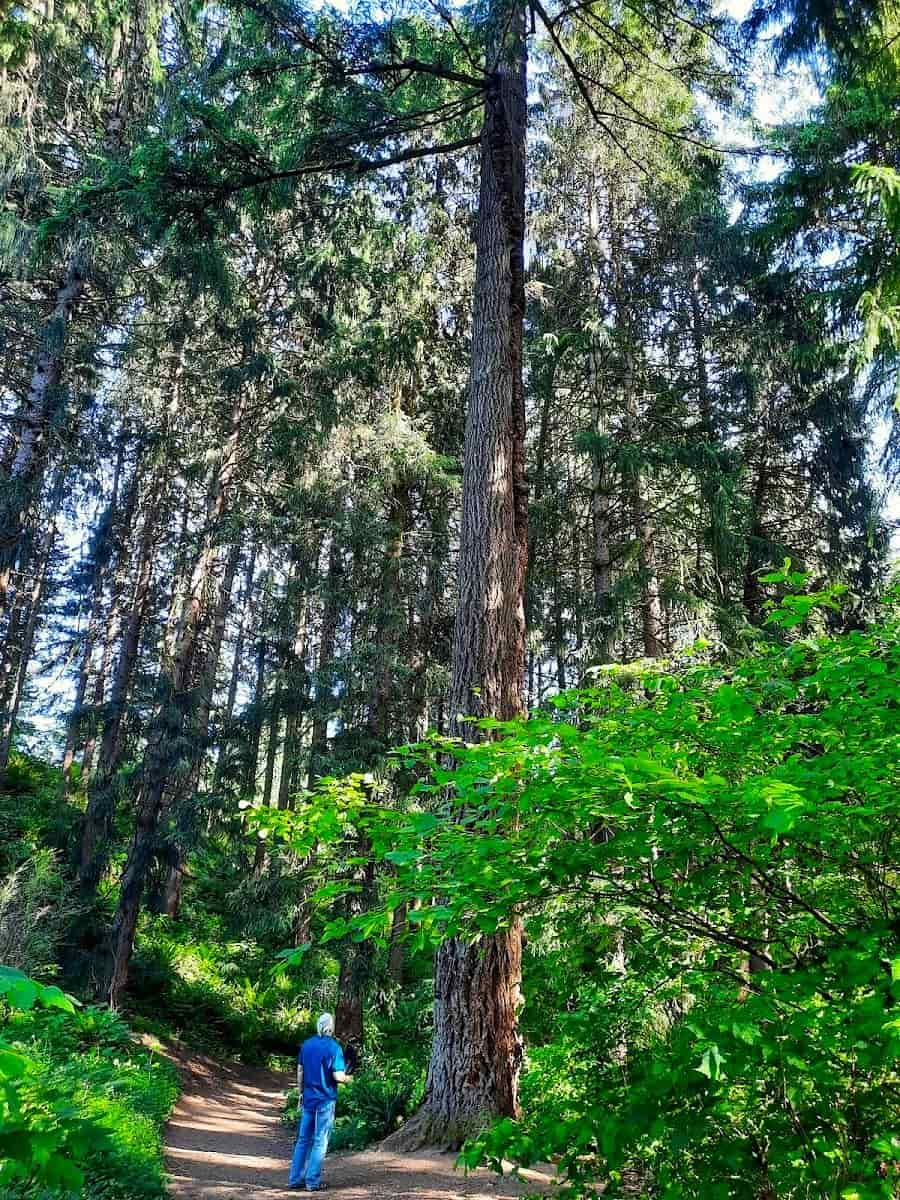
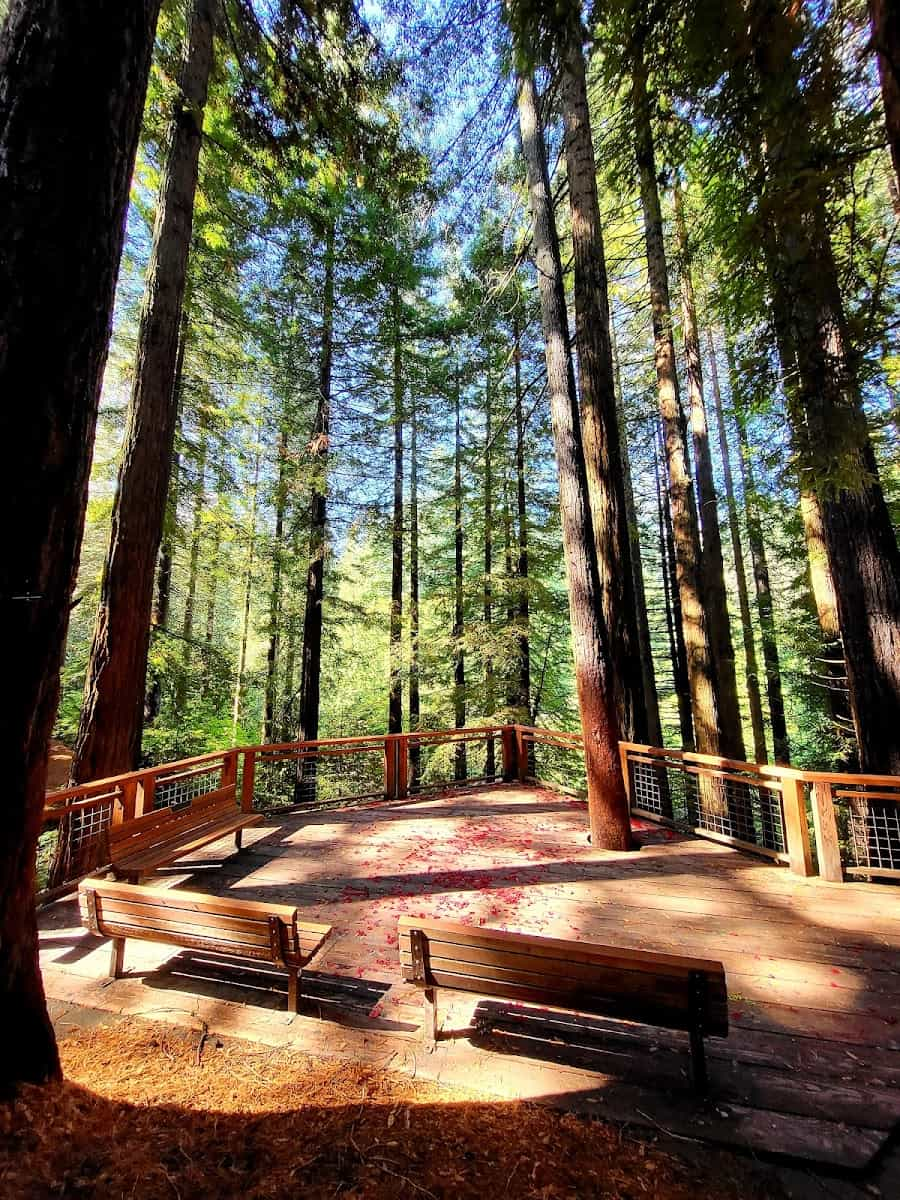
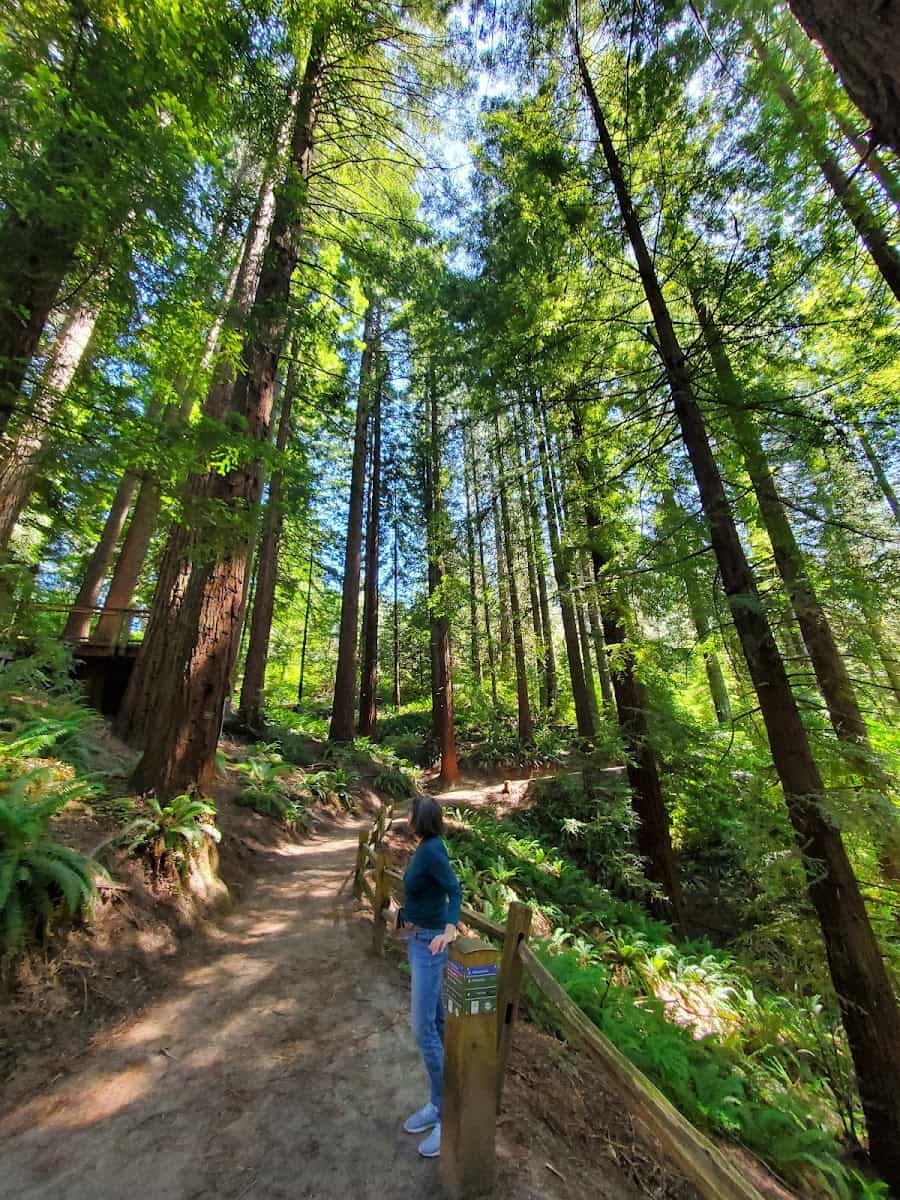
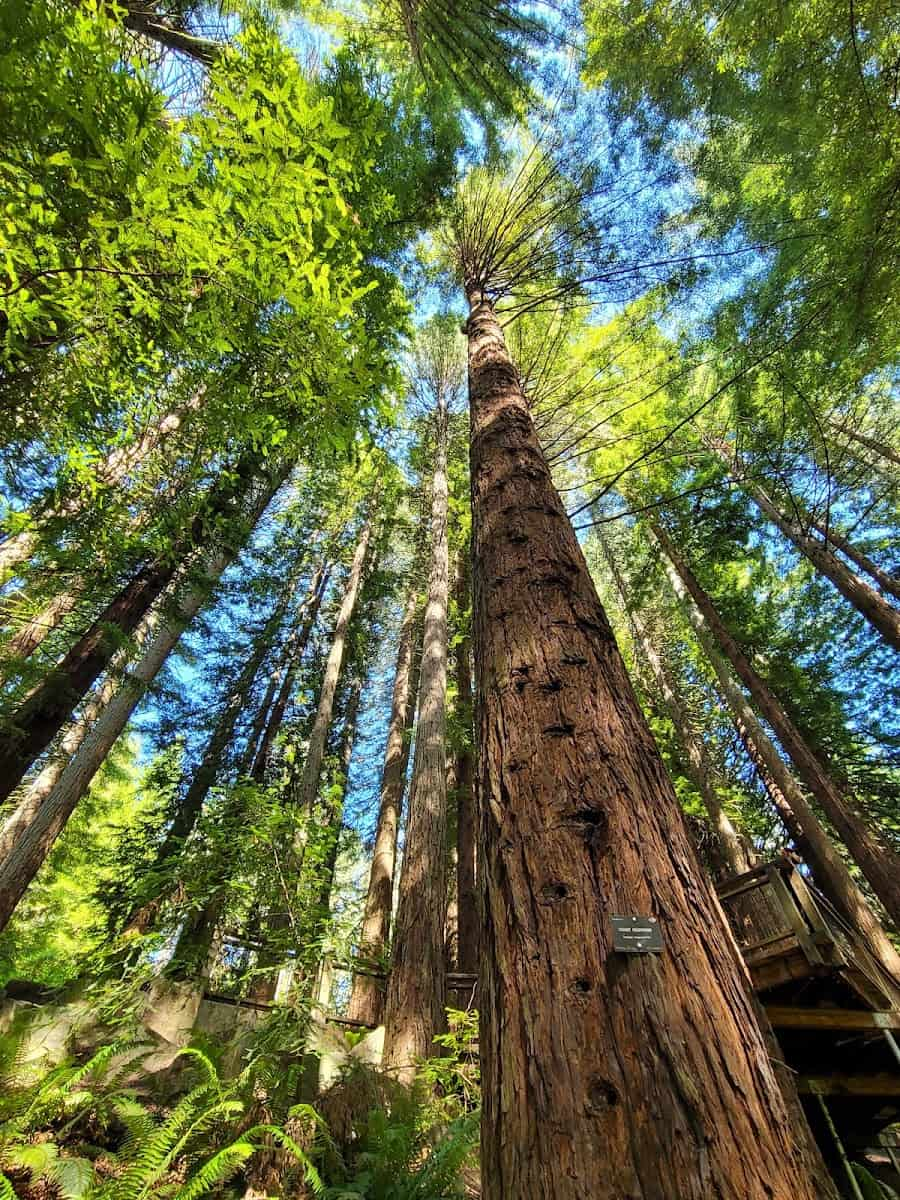
- Arboretum highlights:
- Redwood Deck observation platform
- Vietnam Veterans Memorial
- Winter Garden (plants with winter interest)
- Magnolia Collection (spectacular in March)
- Conifer Collection (one of the largest in the US)
Seasonal splendor. Each visit to Hoyt Arboretum offers something different – spring brings flowering cherries and dogwoods, summer showcases lush greenery and hidden picnic spots, fall transforms the maple collection into a riot of color, and winter reveals the sculptural beauty of bare branches and evergreens dusted with occasional snow. The 1.5-mile Wildwood Trail segment that runs through the arboretum connects to the larger 30+ mile trail system extending into Forest Park.
| Trail | Length | Difficulty | Highlights | Best Season |
|---|---|---|---|---|
| Wildwood | 1.5 miles (in arboretum) | Moderate | Forest immersion | All year |
| Maple | 1 mile loop | Easy | Diverse maple species | Fall |
| Redwood | 0.75 mile | Easy | Coast redwoods | Summer |
| Oak | 1.3 miles | Moderate | Oak collection | Spring/Fall |
| Overlook | 0.5 mile | Easy | City views | Clear days |
⭐ Best Activities
- Portland City Tour: Views and News – Get a comprehensive overview of Portland’s history, culture, and scenic viewpoints on this informative city tour that takes you through diverse neighborhoods while providing fascinating commentary on the city’s development and character.
Things to Do in Portland with Kids
1. Oregon Zoo
Wildlife wonders. I spent a delightful day exploring the Oregon Zoo, nestled in the forested hills of Washington Park just minutes from downtown Portland. Spanning 64 acres and home to more than 2,500 animals representing over 215 species, this conservation-focused zoo balances entertainment with education in a beautifully landscaped setting.
Elephant excellence. The zoo’s Elephant Lands habitat impressed me most – this 6-acre complex represents one of the most advanced elephant habitats in the world. I watched the Asian elephant family navigate their terrain complete with pools, mud wallows, and feeding stations designed to encourage natural behaviors. The elevated viewing platforms let me observe these magnificent creatures from multiple angles.
- Don’t miss at Oregon Zoo:
- Predators of the Serengeti (lions, cheetahs)
- Great Northwest exhibits (bears, eagles, sea otters)
- Africa Rainforest (monkeys, fruit bats)
- Penguinarium (Humboldt penguins)
- Insect Zoo (interactive displays)
Family-friendly features. Beyond animal viewing, I found plenty to keep kids engaged. The 1.5-mile narrow-gauge railway offers a scenic tour around the zoo grounds, while the Conservation Discovery Zone provides hands-on learning stations. During summer, the outdoor concert series brings major artists to
| Zoo Information | Details |
|---|---|
| Admission | Adults: $17.95, Children (3-11): $12.95, Under 2: Free |
| Hours | 9:30 AM – 5:30 PM (summer), 9:30 AM – 4:00 PM (winter) |
| Best Value | Annual membership starts at $79 for individuals |
| Transportation | MAX Red/Blue lines stop at Washington Park station |
| Food Options | Cascade Grill, various food carts, picnic areas |
⭐ Best Activities
- Portland: Hop-On Hop-Off Big Pink Trolley Tour - 2 Day Pass – Explore Portland at your own pace with this flexible 2-day hop-on hop-off trolley pass that allows you to visit the city’s major attractions, from the International Rose Test Garden to Powell’s City of Books, with informative commentary along the route.
2. Portland Children’s Museum
Creative playground. I discovered the Portland Children’s Museum tucked away in Washington Park, offering a perfect indoor escape on rainy days. Unlike traditional museums with “look but don’t touch” policies, this 50,000-square-foot space encourages children to interact with every exhibit through imaginative play, creative expression, and hands-on learning.
Interactive zones. Walking through the museum, I watched children transform into veterinarians at the Pet Hospital, construct elaborate structures in the Building Bridgetown exhibit, and create masterpieces in the Clay Studio. The Water Works area proved particularly popular, where kids donned waterproof smocks to experiment with currents, dams, and water wheels – combining fun with fundamental physics concepts.
- Favorite exhibits for different ages:
- Grasshopper Grocery (role-playing for preschoolers)
- Outdoor Adventure (nature play for all ages)
- Theater (costumes and performances for school-age)
- Baby’s Garden (sensory play for infants/toddlers)
- Maker Studio (STEAM activities for older children)
Practical planning. I learned that mornings tend to be busiest with school groups, so afternoon visits often mean shorter lines and more space to explore. The museum cafe offers simple kid-friendly fare, but I preferred packing a lunch to enjoy in the adjacent outdoor picnic area when weather permitted. The museum shop features unique educational toys that extend the learning experience at home.
| Museum Information | Details |
|---|---|
| Admission | $11 per person (adults and children), Under 1: Free |
| Hours | 9:00 AM – 5:00 PM (closed Mondays during school year) |
| Target Age | Best for children 0-10 years |
| Parking | Free parking lot (shared with Oregon Zoo) |
| Special Programs | Art studios, story times, maker workshops |
3. Forest Park Nature Walks
Urban wilderness. I stepped into Forest Park and immediately forgot I was just minutes from downtown Portland. This 5,200-acre urban forest – one of America’s largest – offers over 80 miles of trails winding through lush Pacific Northwest ecosystem. The dense canopy of Douglas fir, western red cedar, and big-leaf maple trees creates a magical setting for family exploration.
Kid-friendly trails. With young explorers in mind, I discovered several trails perfect for little legs. The 1.5-mile Balch Creek Canyon loop starts at the Audubon Society and follows a gentle path alongside a bubbling creek where children can spot small fish and salamanders. The Lower Macleay Trail to the Stone House (Witch’s Castle) captured kids’ imaginations with its moss-covered stone ruins in the middle of the forest.
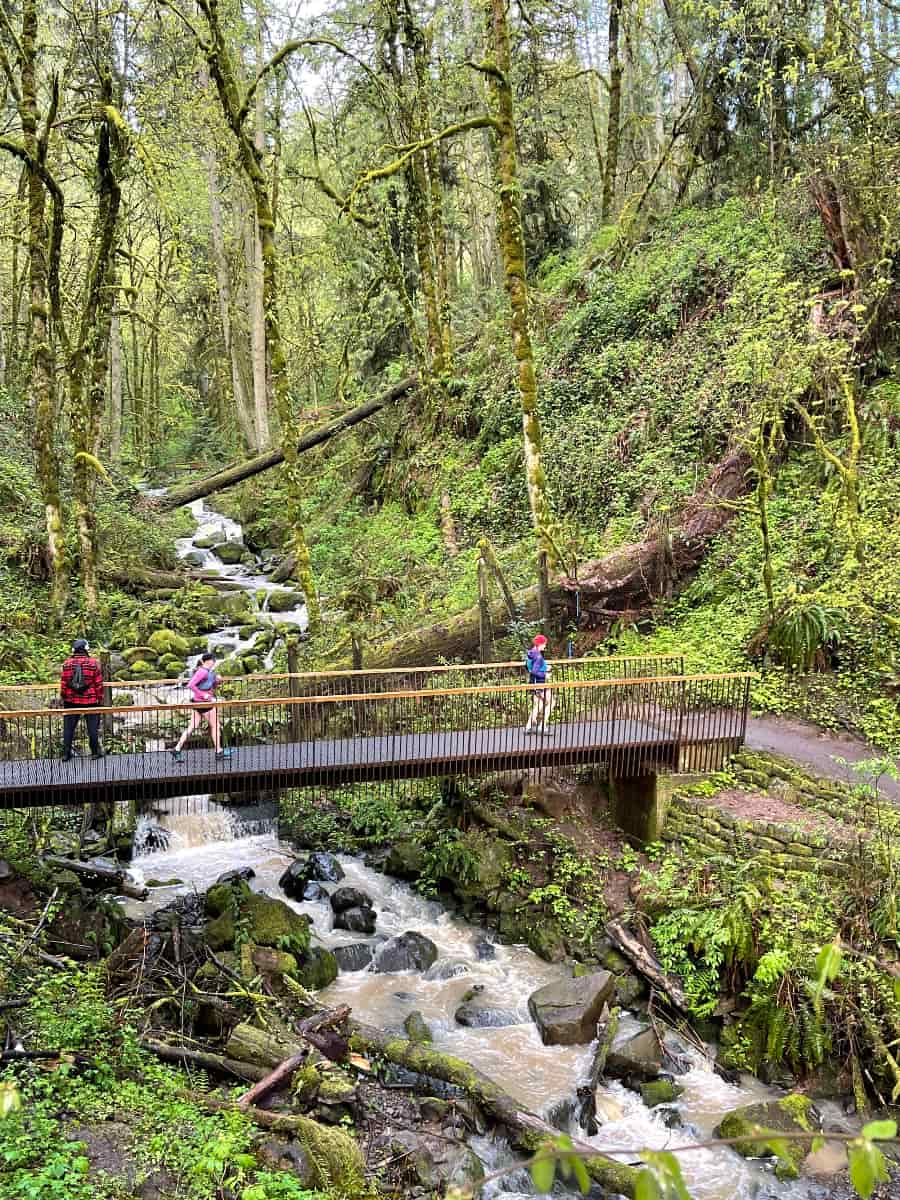
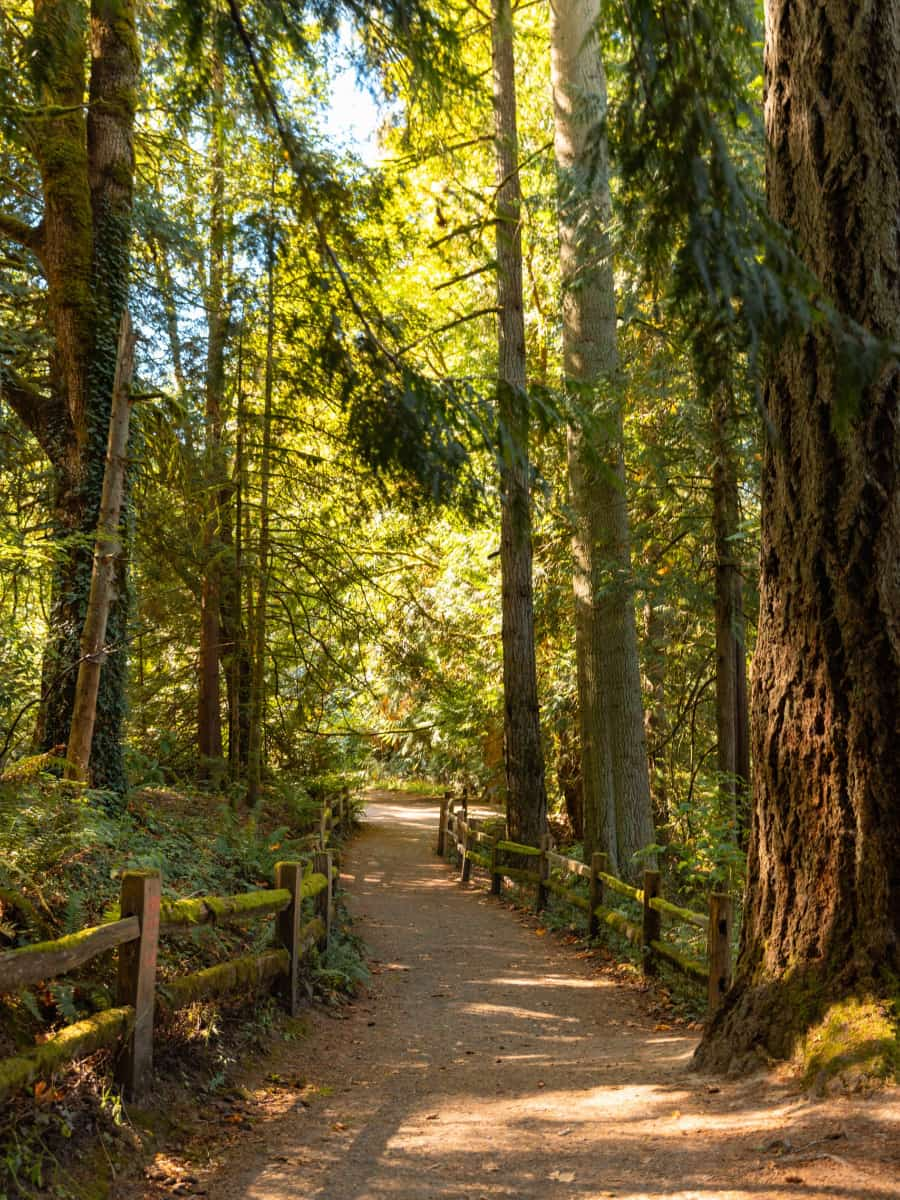
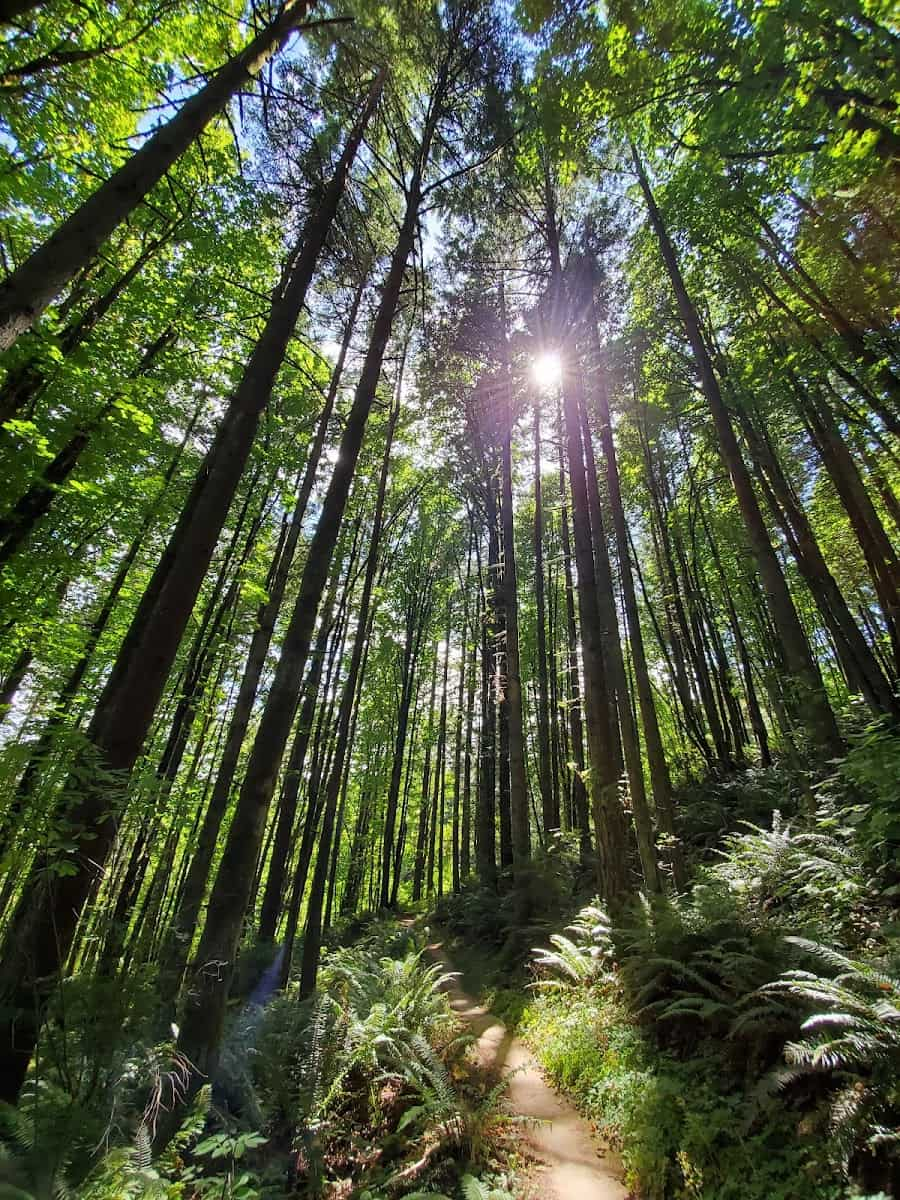
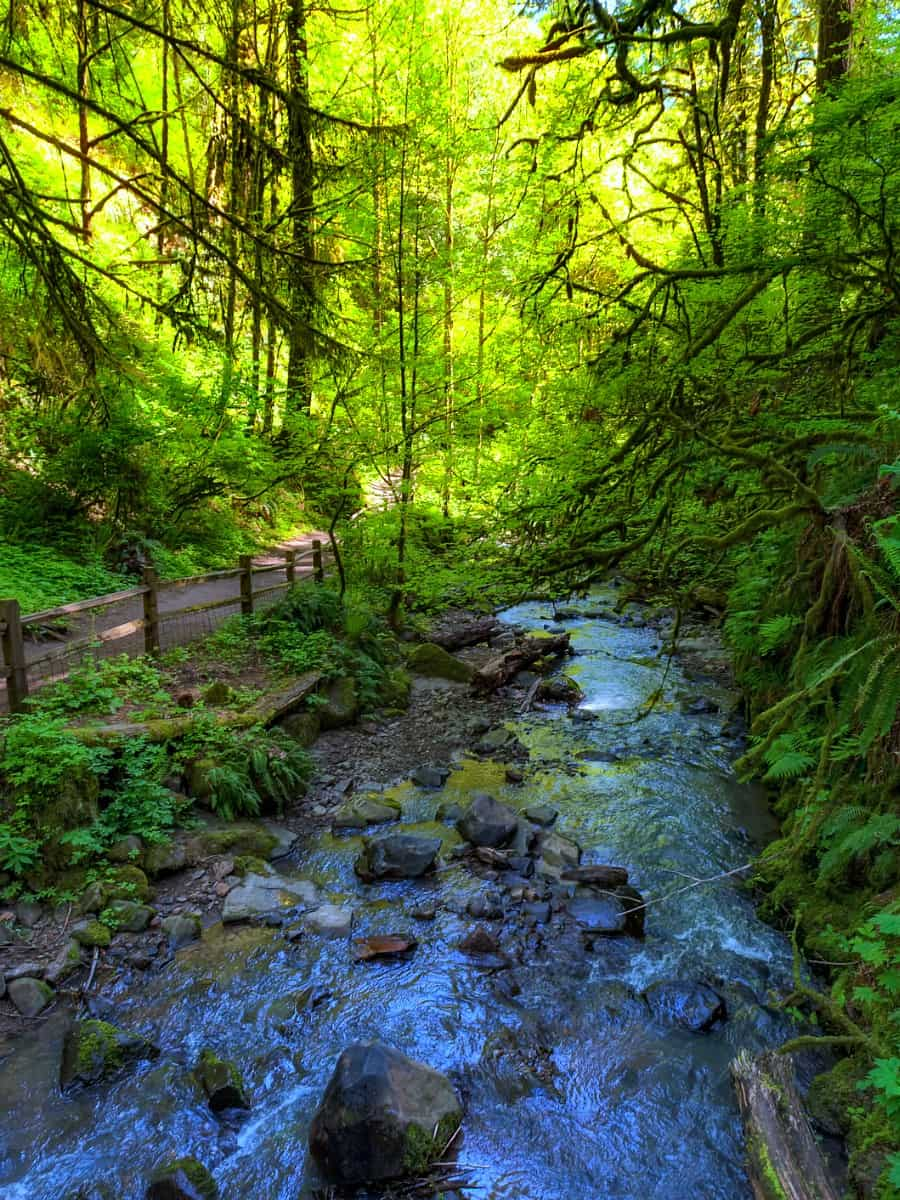
- Family-friendly Forest Park hikes:
- Balch Creek Canyon (1.5 miles, minimal elevation)
- Lower Macleay to Stone House (2 miles roundtrip)
- Firelane 1 to Wildwood Trail (flat, wide trail)
- Leif Erikson Drive (car-free gravel road, good for strollers)
- Hoyt Arboretum connector trails (educational signage)
Nature discovery. I turned ordinary walks into adventures by creating simple scavenger hunts – searching for different leaf shapes, animal tracks, or nurse logs with new plants growing from them. The Audubon Society at the east edge of the park offers educational programs where my kids held native birds of prey and learned about local wildlife conservation efforts.
| Trail | Length | Difficulty | Features | Trailhead Access |
|---|---|---|---|---|
| Lower Macleay | 2 miles RT | Easy | Creek, Stone House | NW Upshur Street |
| Wildwood-Pittock | 5 miles RT | Moderate | Mansion, city views | NW Cornell Road |
| Balch Creek | 1.5 mile loop | Easy | Creek, wildlife | Audubon Society |
| Leif Erikson | Variable | Easy | Wide path, stroller-friendly | NW Thurman Street |
| Maple Trail | 3.5 mile loop | Moderate | Old growth trees | Saltzman Road |
4. Crystal Springs Rhododendron Garden
Floral wonderland. I discovered Crystal Springs Rhododendron Garden tucked away in southeast Portland, where 2,500 rhododendrons, azaleas, and companion plants create a 9.5-acre paradise surrounding Crystal Springs Lake. This hidden gem particularly enchanted my children with its combination of colorful flowers, winding paths, and abundant wildlife.
Water features. Three connected lakes and multiple waterfalls form the garden’s backbone, creating a peaceful soundtrack as we explored. My kids were delighted by the resident waterfowl – we spotted mallards, wood ducks, Canada geese, and even occasional herons and kingfishers. The garden provides coin-operated food dispensers for duck feeding, though we learned that grains are healthier for the birds than bread.
- Kid-friendly garden activities:
- Duck feeding (with appropriate food)
- Waterfall spotting (seven throughout the garden)
- Bridge crossing (twelve picturesque bridges)
- Spring color scavenger hunt (find flowers in every color)
- Photography practice (perfect for budding photographers)
Seasonal splendor. While peak bloom occurs from April through early June when the rhododendrons and azaleas create a riot of color, I found the garden beautiful in all seasons. Fall brings vibrant foliage and reflections on the lakes, winter showcases the garden’s bones with dramatic branch structures, and early spring offers camellias and early-blooming rhododendrons when most gardens are still dormant.
| Garden Information | Details |
|---|---|
| Admission | $5 (March-September), Free on Mondays and October-February |
| Hours | 6:00 AM – 10:00 PM daily |
| Peak Season | April-June for rhododendrons and azaleas |
| Facilities | Restrooms, limited parking, picnic tables |
| Annual Events | Spring rhododendron show, Easter egg hunt |
5. Eastbank Esplanade Bike Rides
Riverside cycling. I discovered that Portland’s Eastbank Esplanade offers one of the most scenic and family-friendly bike routes in the city. This 1.5-mile paved path runs along the eastern shore of the Willamette River, connecting with the west side via the Steel and Hawthorne bridges to create the popular 3-mile loop known as the Vera Katz Eastbank Esplanade.
Floating pathway. The most exciting section for my kids was the 1,200-foot floating walkway that rises and falls with the river level. We pedaled along this unique segment, feeling the gentle movement beneath our wheels while watching kayakers and paddleboarders navigate the water below. The path widens in several areas, creating perfect spots to pause and admire the Portland skyline across the river.

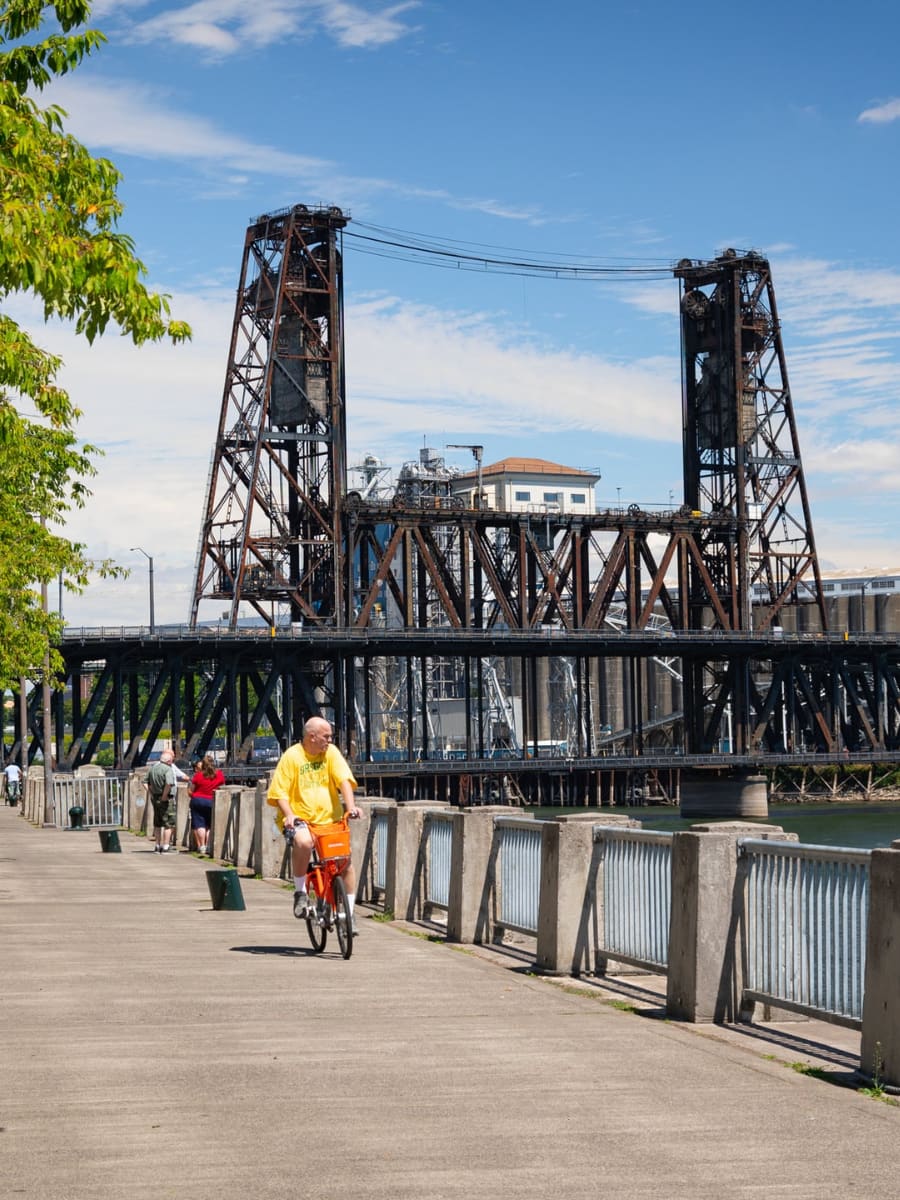
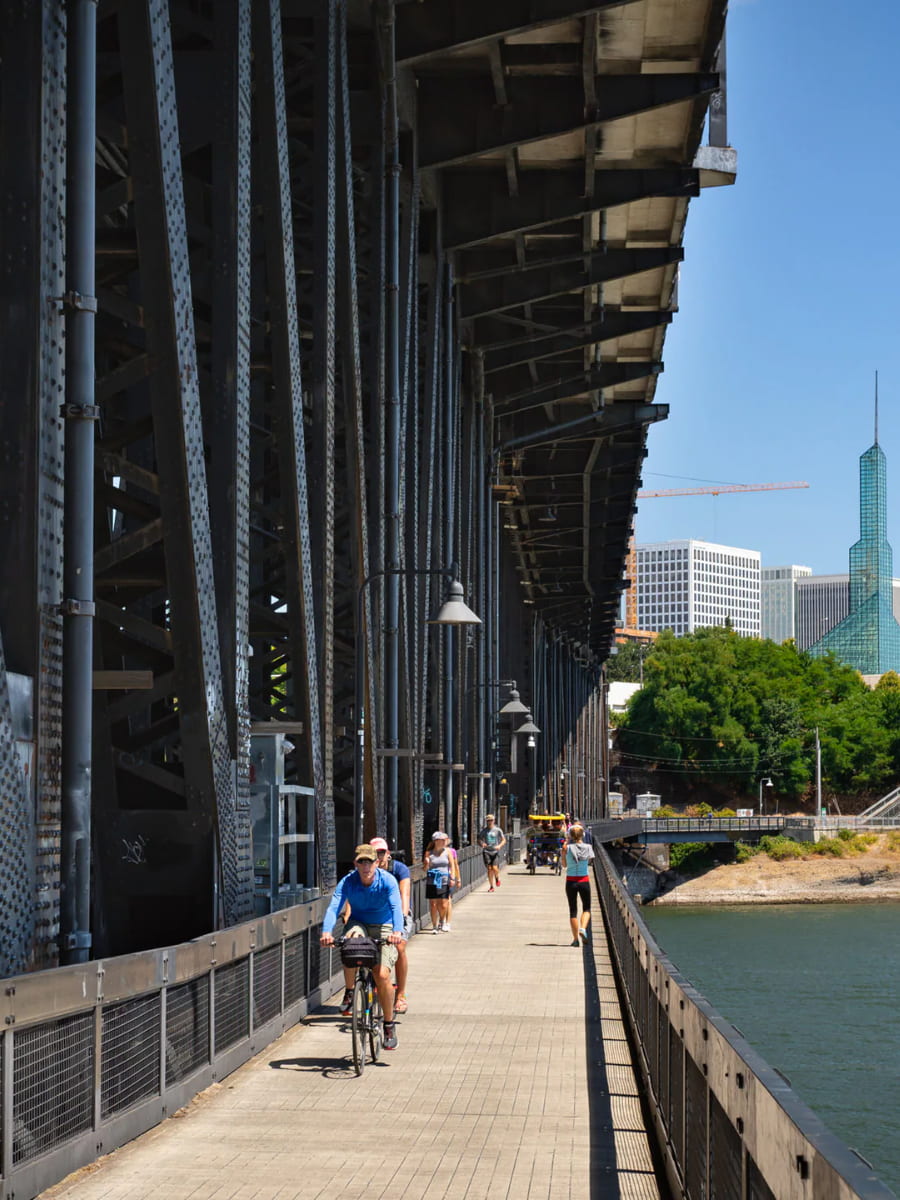

- Family-friendly features:
- Fully separated from car traffic
- Relatively flat terrain suitable for beginners
- Multiple access points for flexible ride lengths
- Several public art installations along the route
- Connection to other bike-friendly paths
Practical tips. I found that early mornings or weekday afternoons provided the most relaxed riding experience, as the path gets crowded on sunny weekends. Several bike rental shops near the Hawthorne Bridge offer family-friendly options including tag-alongs, child seats, and even cargo bikes for carrying smaller children. We always packed water and snacks to enjoy at the small plazas and viewpoints along the route.
| Esplanade Biking Information | Details |
|---|---|
| Route Length | 1.5 miles one-way (3 miles as loop with bridges) |
| Difficulty | Easy, mostly flat with gentle inclines at bridges |
| Bike Rentals | Cycle Portland, Kerr Bikes (seasonal) |
| Rental Cost | $30-40 for half-day adult bikes, $10-20 for kids’ equipment |
| Nearby Attractions | OMSI, Portland Fire & Rescue Museum, Saturday Market |
6. Eastbank Esplanade
Urban waterfront. I strolled along the Eastbank Esplanade, a 1.5-mile pedestrian and bicycle path that offers some of the best views of Portland’s skyline. This riverside promenade runs along the eastern shore of the Willamette River from the Hawthorne Bridge to the Steel Bridge, providing a perfect vantage point for watching boats, bridges, and urban life unfold.
Architectural highlights. The most unique feature I discovered was the 1,200-foot floating walkway – the longest of its kind in the United States. As I walked this section, I felt it gently rise and fall with the river’s movements while offering unobstructed views of downtown Portland. The four public art installations along the path, including the Echo Gate and Ghost Ship sculptures, add cultural interest to the natural beauty.


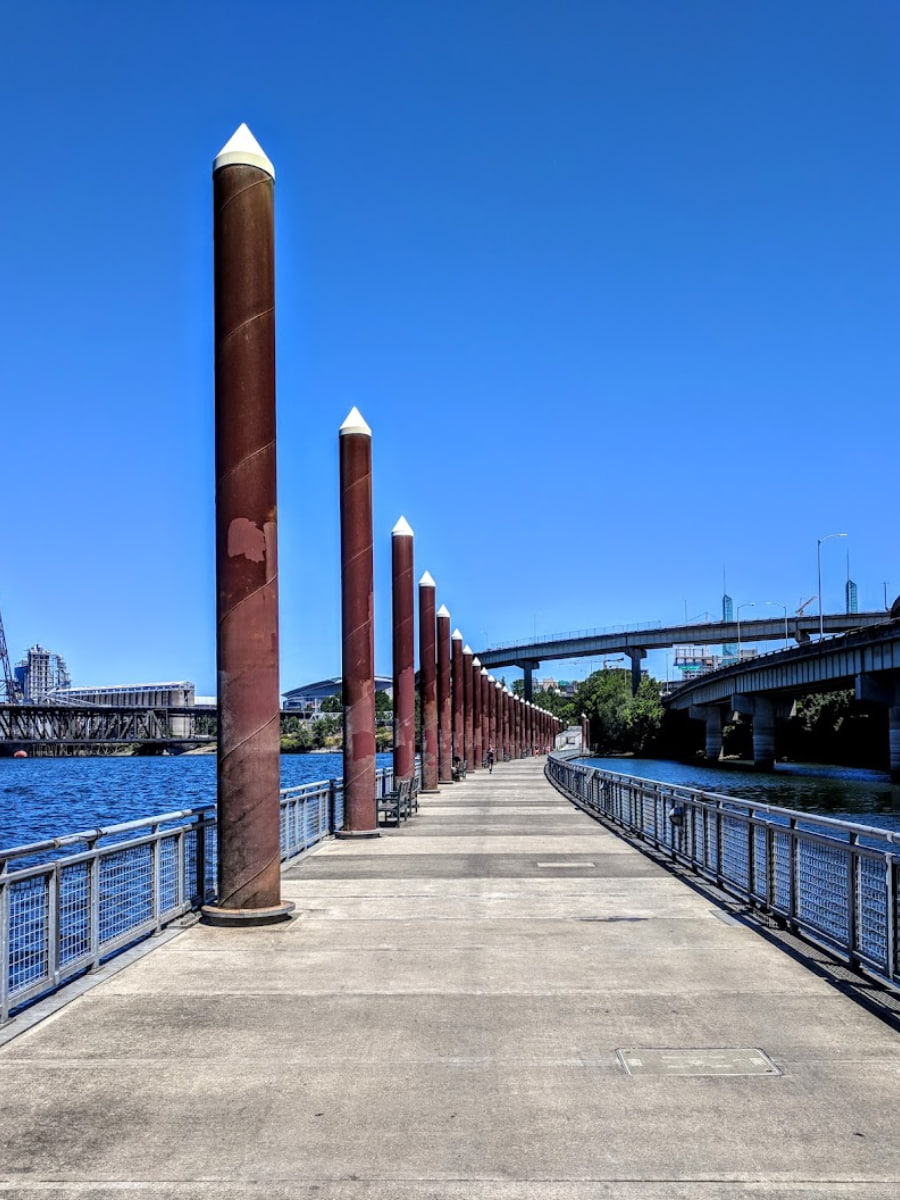
- Esplanade highlights:
- Floating walkway section
- Four major public art installations
- Burnside Skatepark beneath the bridge
- Panoramic city views
- Connection to Tilikum Crossing and Springwater Corridor
Practical enjoyment. I found the Esplanade perfect for different activities depending on the time of day. Mornings brought joggers and commuter cyclists, while afternoons saw families and tourists enjoying the views. At sunset, I joined photographers capturing the golden light on downtown buildings, and after dark, the path’s artistic lighting created a magical nighttime atmosphere.
| Access Points | Nearby Attractions | Facilities |
|---|---|---|
| Hawthorne Bridge | OMSI, Portland Opera | Restrooms at OMSI |
| Morrison Bridge | Fire Station Museum | Water fountains |
| Burnside Bridge | Saturday Market (weekends) | Bike repair station |
| Steel Bridge | Rose Quarter, Convention Center | Benches, viewpoints |
| Tilikum Crossing | South Waterfront | Bike/pedestrian only bridge |
Free Things to Do in Portland
1. Tom McCall Waterfront Park
Riverside relaxation. I love strolling along Tom McCall Waterfront Park, a 36-acre green space stretching along the Willamette River in downtown Portland. This former expressway was transformed into a public park in the 1970s, creating a peaceful urban oasis where locals jog, bike, and picnic with views of the city’s iconic bridges.
Seasonal celebrations. The park hosts many of Portland’s biggest events throughout the year. I’ve watched dragon boat races during the Rose Festival in June, sampled delicious dishes at the Portland Seafood & Wine Festival in February, and enjoyed free concerts during summer evenings – all with the sparkling river as backdrop.



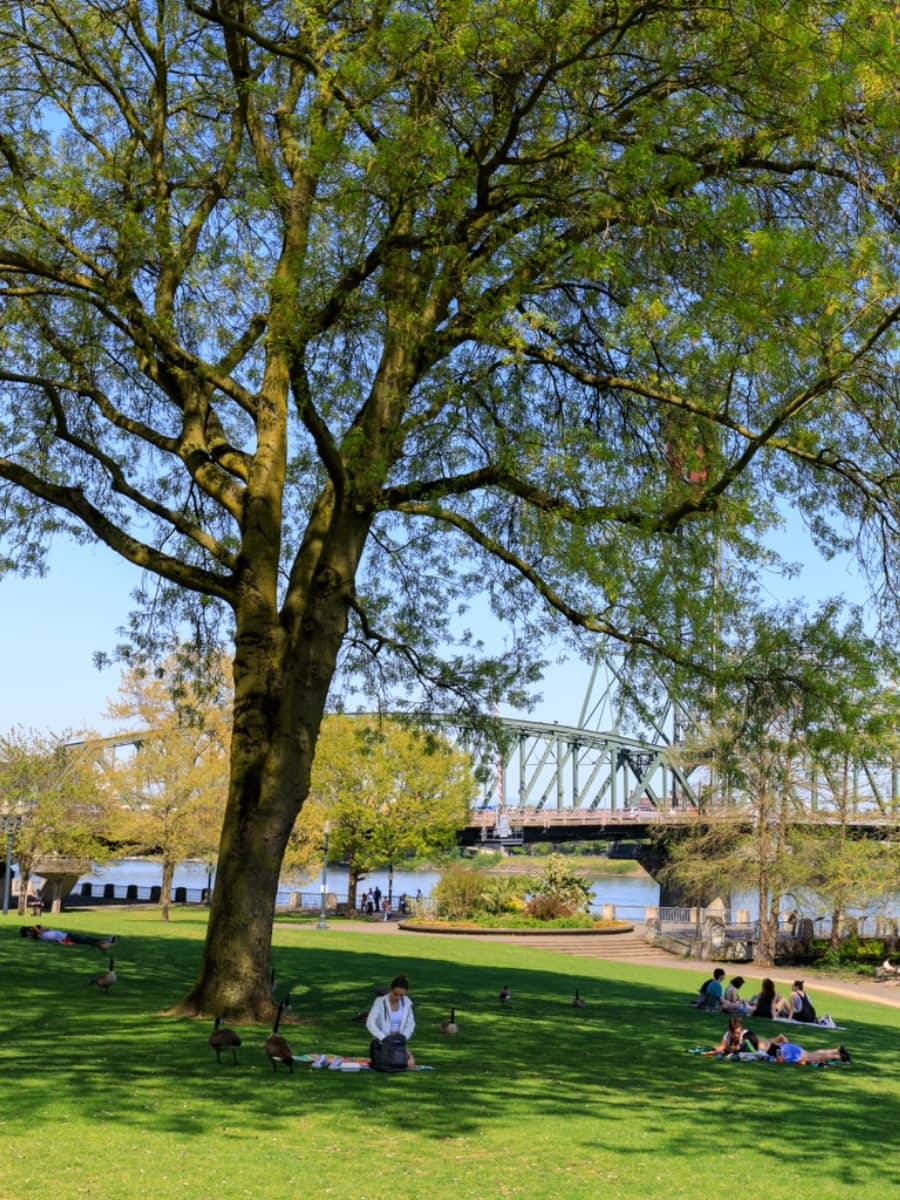
- Park highlights:
- Japanese American Historical Plaza (cherry trees and memorial)
- Salmon Street Springs fountain
- Bill Naito Legacy Fountain
- The Esplanade connection
- Saturday Market location (weekends)
Bridge views. Walking north to south through the park, I counted eight distinct bridges spanning the Willamette, each with its own architectural character. My favorite is the tilikum Crossing, illuminated at night with lights that change color based on the river’s speed, temperature, and height – a perfect example of Portland’s blend of nature and technology.
| Bridge | Style | Year Built | Notable Features |
|---|---|---|---|
| Fremont | Steel cantilever | 1973 | Longest bridge in Portland |
| Broadway | Bascule | 1913 | Art Deco towers, drawbridge |
| Steel | Vertical-lift | 1912 | Double-deck design |
| Burnside | Concrete | 1926 | Italian Renaissance towers |
| Morrison | Vertical-lift | 1958 | Red color, light rail crossing |
| Hawthorne | Vertical-lift | 1910 | Oldest highway bridge |
| Marquam | Steel truss | 1966 | Double-deck freeway |
| Tilikum Crossing | Cable-stayed | 2015 | No private vehicles allowed |
2. Eastbank Esplanade
Urban waterfront. I strolled along the Eastbank Esplanade, a 1.5-mile pedestrian and bicycle path that offers some of the best views of Portland’s skyline. This riverside promenade runs along the eastern shore of the Willamette River from the Hawthorne Bridge to the Steel Bridge, providing a perfect vantage point for watching boats, bridges, and urban life unfold.
Architectural highlights. The most unique feature I discovered was the 1,200-foot floating walkway – the longest of its kind in the United States. As I walked this section, I felt it gently rise and fall with the river’s movements while offering unobstructed views of downtown Portland. The four public art installations along the path, including the Echo Gate and Ghost Ship sculptures, add cultural interest to the natural beauty.
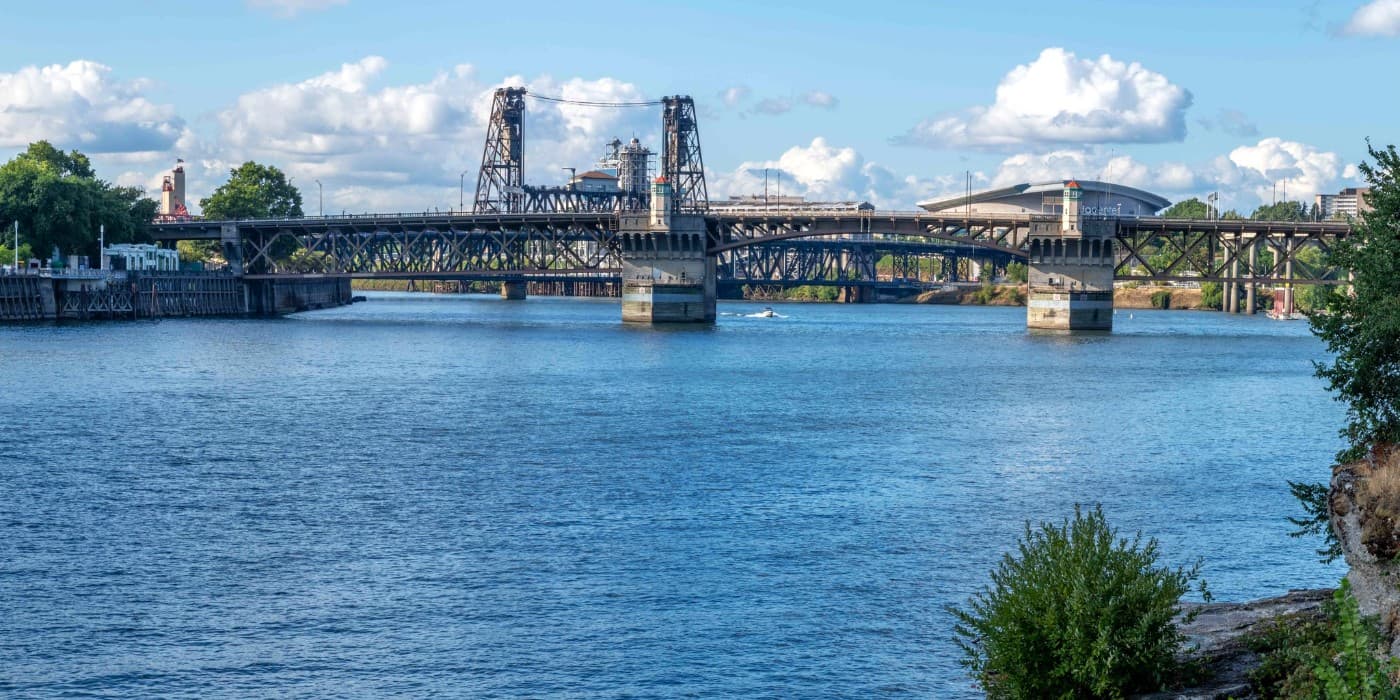
- Esplanade highlights:
- Floating walkway section
- Four major public art installations
- Burnside Skatepark beneath the bridge
- Panoramic city views
- Connection to Tilikum Crossing and Springwater Corridor
Practical enjoyment. I found the Esplanade perfect for different activities depending on the time of day. Mornings brought joggers and commuter cyclists, while afternoons saw families and tourists enjoying the views. At sunset, I joined photographers capturing the golden light on downtown buildings, and after dark, the path’s artistic lighting created a magical nighttime atmosphere.
| Access Points | Nearby Attractions | Facilities |
|---|---|---|
| Hawthorne Bridge | OMSI, Portland Opera | Restrooms at OMSI |
| Morrison Bridge | Fire Station Museum | Water fountains |
| Burnside Bridge | Saturday Market (weekends) | Bike repair station |
| Steel Bridge | Rose Quarter, Convention Center | Benches, viewpoints |
| Tilikum Crossing | South Waterfront | Bike/pedestrian only bridge |
3. Mt Tabor Park
Volcanic park. I climbed the winding paths of Mt Tabor Park, an extinct volcanic cinder cone rising 636 feet above east Portland. This 196-acre urban oasis offers something truly unique – it’s one of only four extinct volcanoes within city limits in the United States. From the summit, I enjoyed breathtaking 360-degree views spanning downtown Portland, the Willamette River, and on clear days, Mount Hood and Mount St. Helens.
Natural playground. The park’s varied landscape provided endless exploration opportunities. I hiked through dense Douglas fir forests, relaxed beside three scenic reservoirs (historic water features that once supplied Portland’s drinking water), and discovered hidden picnic areas perfect for afternoon gatherings. The park’s extensive trail network accommodates everyone from casual strollers to serious runners seeking hill training.
- Mt Tabor highlights:
- Summit viewpoint with orientation map
- Three historic reservoirs
- Old-growth Douglas fir groves
- Basketball courts and playground
- Off-leash dog area (fenced)
Community hub. I quickly realized Mt Tabor serves as a neighborhood gathering place. Wednesday evening bike races draw spectators during summer months, while the amphitheater hosts free concerts and movies under the stars. The annual Adult Soap Box Derby in August transforms the park’s main road into a racecourse for creative, human-powered vehicles – a quintessentially Portland blend of creativity and outdoor fun.
| Mt Tabor Features | Location | Best Time to Visit |
|---|---|---|
| Summit viewpoint | Park center, follow signs | Sunset for city lights |
| Reservoirs | Western side | Morning for calm water reflections |
| Amphitheater | Southeast section | Summer evenings for events |
| Playground | Near SE Harrison entrance | Weekday mornings to avoid crowds |
| Main picnic area | Northeast section | Weekends for people-watching |
Seasonal Activities
Christmas in Portland
Holiday magic. I bundled up to explore Portland’s festive transformation during the holiday season, when the city comes alive with twinkling lights and seasonal cheer. The massive Christmas tree at Pioneer Courthouse Square (lit annually on the Friday after Thanksgiving) serves as the centerpiece of downtown celebrations, surrounded by a holiday market selling handcrafted gifts and seasonal treats.
Light displays. Driving through the Peacock Lane neighborhood became an instant tradition for me – since 1932, residents of this small street have decorated their Tudor-style homes with elaborate displays. I joined the slow-moving line of cars to admire the spectacle, though on designated pedestrian-only nights, I enjoyed hot chocolate while walking the four-block stretch at a leisurely pace.

- Portland holiday traditions:
- Christmas Festival of Lights at The Grotto (Nov 25 – Dec 30)
- Christmas Ships Parade on the Willamette (Dec 4-21)
- Holiday Express train rides at Oaks Park (Dec weekends)
- Winter Wonderland at Portland International Raceway (Nov 24 – Dec 31)
- Singing Christmas Tree performances (early December)
Indoor festivities. When the winter rain became too much, I found indoor holiday cheer at Pittock Mansion’s annual Christmas display, where each room is decorated in different historical themes. The Portland Art Museum’s Family Day in December offered holiday-themed art activities, while the Oregon Historical Society’s holiday exhibit showcased vintage decorations from Portland’s past.
| Holiday Event | Dates | Cost | Location |
|---|---|---|---|
| Christmas at Pittock Mansion | Nov 21 – Dec 31 | $8-12 | West Hills |
| ZooLights | Nov 22 – Jan 5 | $12-19 | Oregon Zoo |
| Peacock Lane | Dec 15-31 | Free | SE Portland |
| Christmas Festival of Lights | Nov 25 – Dec 30 | $12-18 | The Grotto |
| Holiday Ale Festival | Dec 1-5 | $40 | Pioneer Courthouse Square |
Summer Festivals and Events
Rose Festival celebration. I joined thousands of Portlanders for the city’s signature Portland Rose Festival, a tradition since 1907 that spans several weeks from late May through early June. The Grand Floral Parade (second Saturday in June) was spectacular – elaborate floats covered entirely in flowers wound through downtown streets, accompanied by marching bands and equestrian units.
Waterfront music. The Waterfront Blues Festival (July 1-4) transformed Tom McCall Waterfront Park into a massive outdoor concert venue where I danced to both legendary performers and emerging artists across four days. With multiple stages and food vendors lining the riverfront, this festival showcases Portland’s love affair with live music while raising funds for hunger relief.
Neighborhood celebrations. I discovered that summer is when Portland’s distinct neighborhoods show their personalities through hyper-local festivals. The Alberta Street Fair (second Saturday in August) filled 20 blocks with art installations and performances, while the Montavilla Street Fair (last Sunday in July) introduced me to this emerging eastside neighborhood through local food, music, and crafts.
| Festival | Dates | Location | Highlights |
|---|---|---|---|
| Portland Rose Festival | Late May-June | CityWide | Parades, dragon boat races, carnival |
| Pride Portland! | Mid-June | Downtown | Parade, waterfront festival |
| Waterfront Blues Festival | July 1-4 | Waterfront Park | 100+ performances, fireworks |
| Oregon Brewers Festival | Last July weekend | Waterfront Park | 80+ craft breweries |
| Pickathon | Early August | Happy Valley | Indie music, sustainable festival |
| Jade Night Market | Two August weekends | SE 82nd Ave | Asian food, performances |
Spring Blooms in Portland Parks
Floral awakening. I watched Portland transform during spring as cherry blossoms, azaleas, and rhododendrons burst into color across the city’s parks and gardens. The Japanese American Historical Plaza along the waterfront became my favorite lunch spot in March, when 100 Akebono cherry trees created a stunning pink canopy along the riverside walkway.


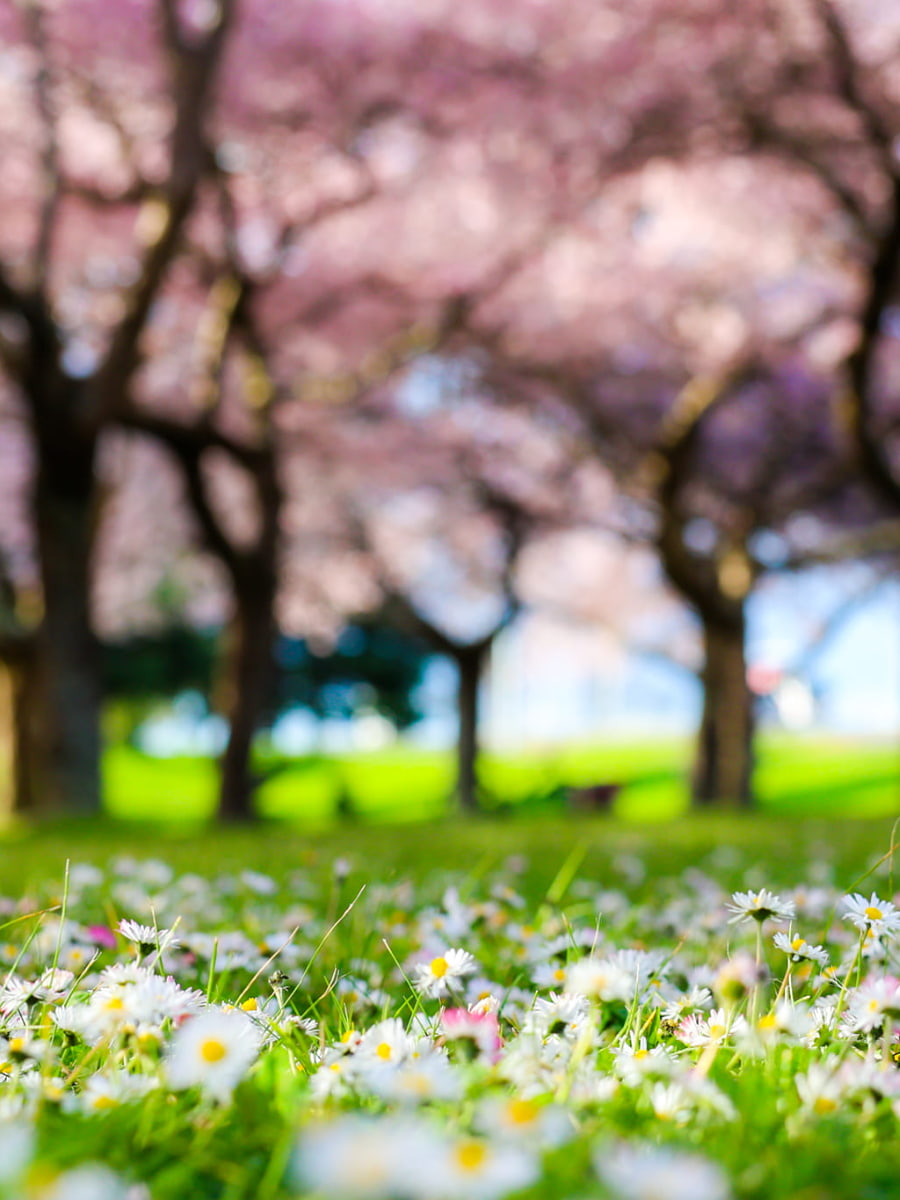
Garden tours. Crystal Springs Rhododendron Garden in southeast Portland surprised me with its collection of over 2,500 rhododendrons, azaleas, and companion plants. I spent a peaceful morning wandering its 9.5 acres of woodland trails and bridges spanning small lakes, where waterfowl nested among the blooming shrubs that peak in April and May.
- Spring garden highlights:
- Cherry blossoms at Waterfront Park (March)
- Magnolias at Hoyt Arboretum (March-April)
- Rhododendrons at Crystal Springs (April-May)
- Roses begin blooming at International Rose Test Garden (May)
- Ladd’s Addition historic rose gardens (May-June)
Woodland exploration. Hiking through Hoyt Arboretum’s 12 miles of trails, I discovered flowering trees from around the world beginning their annual show. The Winter Garden transitions to spring with early-blooming magnolias and cherries, while the 1.5-mile Wildflower Trail revealed native trilliums and fawn lilies emerging from the forest floor in April and May.
| Spring Garden | Peak Bloom Time | Admission | Notable Collections |
|---|---|---|---|
| Japanese American Plaza | Mid-March | Free | Akebono cherry trees |
| Hoyt Arboretum | March-May | Free | Magnolias, flowering dogwoods |
| Crystal Springs | April-May | $5 (free on Mondays) | Rhododendrons, azaleas |
| Lan Su Chinese Garden | March-April | $12.95 | Magnolias, camellias |
| International Rose Garden | Late May-June | Free | Early-blooming roses |
Autumn Foliage Walks
Fall colors. I discovered that Portland transforms into a canvas of red, orange, and gold during autumn, with peak foliage typically occurring from mid-October through early November. The Japanese Maple collection at the Portland Japanese Garden became my favorite fall destination, where these sculptural trees create a breathtaking display of crimson against the carefully arranged stones and moss.
Urban forest immersion. Hiking through Forest Park in autumn, I followed the Wildwood Trail as it wound beneath big-leaf maples and vine maples in their golden glory. This 5,200-acre urban forest – one of America’s largest – offers over 80 miles of trails where fallen leaves created a satisfying crunch beneath my boots and mushrooms emerged after the first autumn rains.
Best autumn viewing spots:
-
- Japanese Garden (Japanese maples)
- Hoyt Arboretum (diverse international collection)
- Forest Park (native deciduous trees)
- Mt. Tabor Park (city views with fall colors)
- South Park Blocks (historic elm canopy)
Neighborhood strolls. I found some of Portland’s most charming fall displays in residential neighborhoods. Ladd’s Addition, with its unusual diagonal street pattern and four diamond-shaped rose gardens, showcases mature American elms that turn brilliant yellow. Eastmoreland’s canopy of century-old trees creates a golden tunnel effect over the streets that’s particularly stunning in late October.
| Fall Foliage Location | Best Viewing Time | Tree Highlights | Photography Tips |
|---|---|---|---|
| Portland Japanese Garden | Late October-early November | Japanese maples | Overcast days for vibrant colors |
| Hoyt Arboretum | Mid-October-early November | Diverse international collection | Morning light on Maple Trail |
| Forest Park | Mid-October | Big-leaf maples, vine maples | After light rain for saturated colors |
| Mt. Tabor Park | Late October | Maples with city backdrop | Sunset for golden hour lighting |
| Laurelhurst Park | Mid-October | Historic oak and maple specimens | Early morning for misty atmosphere |
Day Trips from Portland
1. Columbia River Gorge
Natural wonder. I drove just 30 minutes east of Portland to reach the Columbia River Gorge, a breathtaking 80-mile canyon where the Columbia River cuts through the Cascade Mountains. This designated National Scenic Area combines dramatic cliffs, dozens of waterfalls, and panoramic viewpoints that showcase the power of the landscape that divides Oregon and Washington.
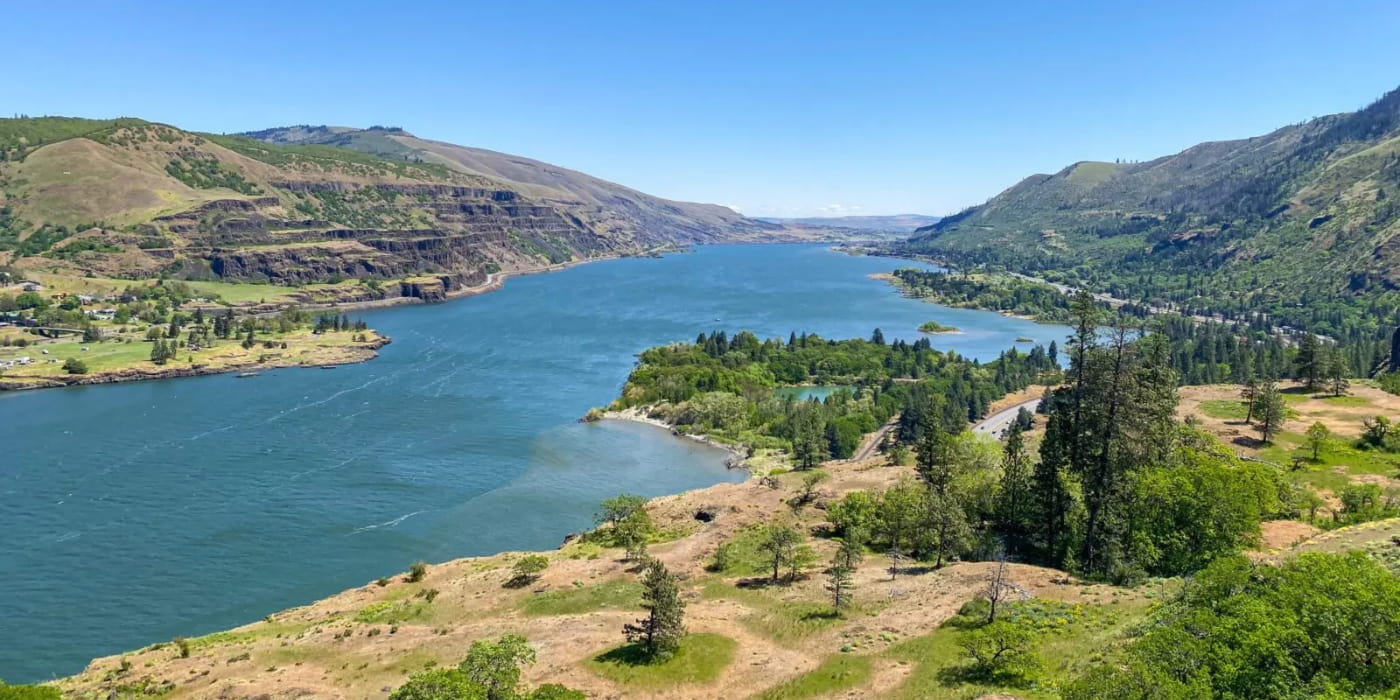
Waterfall corridor. The Historic Columbia River Highway took me past a series of spectacular waterfalls, each with its own character. While Multnomah Falls gets most of the attention (and crowds), I found equally impressive cascades with fewer visitors at Latourell Falls, where the single-drop waterfall plunges 224 feet past distinctive yellow-lichen covered basalt columns.
- Must-see Gorge destinations:
- Crown Point Vista House (panoramic views)
- Multnomah Falls (620-foot two-tier waterfall)
- Oneonta Gorge (slot canyon with emerald pools)
- Hood River (windsurfing capital)
- Rowena Crest (dramatic viewpoint with wildflowers)
Active adventures. Beyond sightseeing, the Gorge offers incredible outdoor recreation. I hiked the Eagle Creek Trail, where the path is carved into cliffs with cables for handholds in some sections, passing multiple waterfalls before reaching Punchbowl Falls. On another visit, I tried windsurfing in Hood River, where consistent winds create world-class conditions for both beginners and experts.
| Gorge Destination | Distance from Portland | Highlights | Facilities |
|---|---|---|---|
| Crown Point | 25 miles | Historic Vista House, panoramic views | Restrooms, gift shop |
| Multnomah Falls | 30 miles | Oregon’s tallest waterfall, historic lodge | Restaurant, restrooms, visitor center |
| Hood River | 60 miles | Windsurfing, breweries, fruit orchards | Full services, equipment rentals |
| Cascade Locks | 45 miles | Bridge of the Gods, river cruises | Restrooms, picnic areas |
| The Dalles | 80 miles | Columbia Gorge Discovery Center | Museum, restrooms, cafe |
⭐ Best Activities
- Multnomah Falls & Columbia River Gorge Waterfalls Tour – Experience the natural splendor of the Columbia River Gorge on this guided tour featuring multiple waterfall stops, including the magnificent 620-foot Multnomah Falls, with ample time for photography and short hikes.
2. Multnomah Falls
Iconic cascade. I stood mesmerized by Multnomah Falls, Oregon’s tallest waterfall at 620 feet, as it thundered down in two dramatic tiers. Located just 30 minutes from downtown Portland in the Columbia River Gorge, this natural wonder attracts over 2 million visitors annually, yet still manages to inspire awe with its sheer power and beauty.
Historic bridge. Climbing the paved trail to Benson Bridge, which spans the lower cascade at 70 feet above the lower pool, I felt the refreshing mist on my face while capturing the perfect photo of both tiers. This graceful stone bridge, built in 1914 by Italian stonemasons, provides the classic viewpoint seen in countless photographs and paintings of the falls.
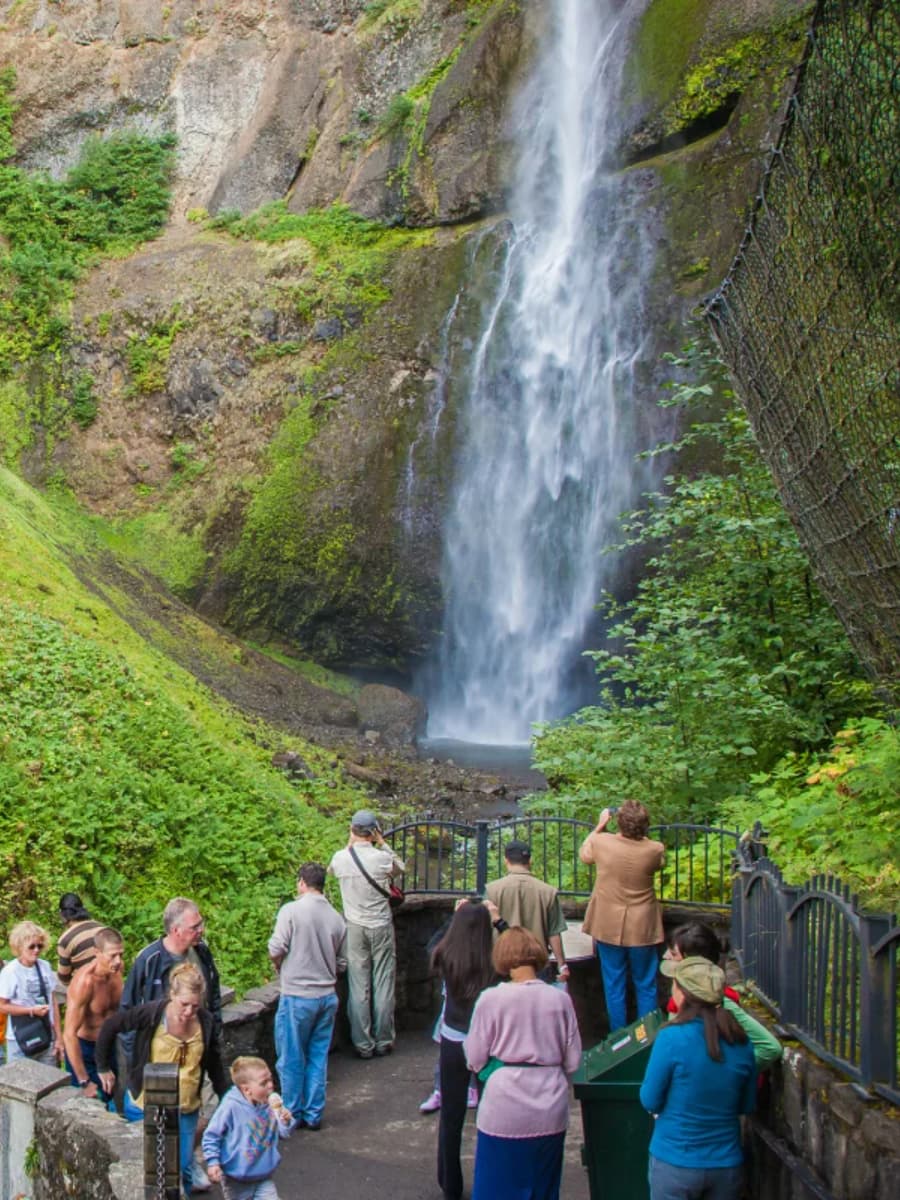
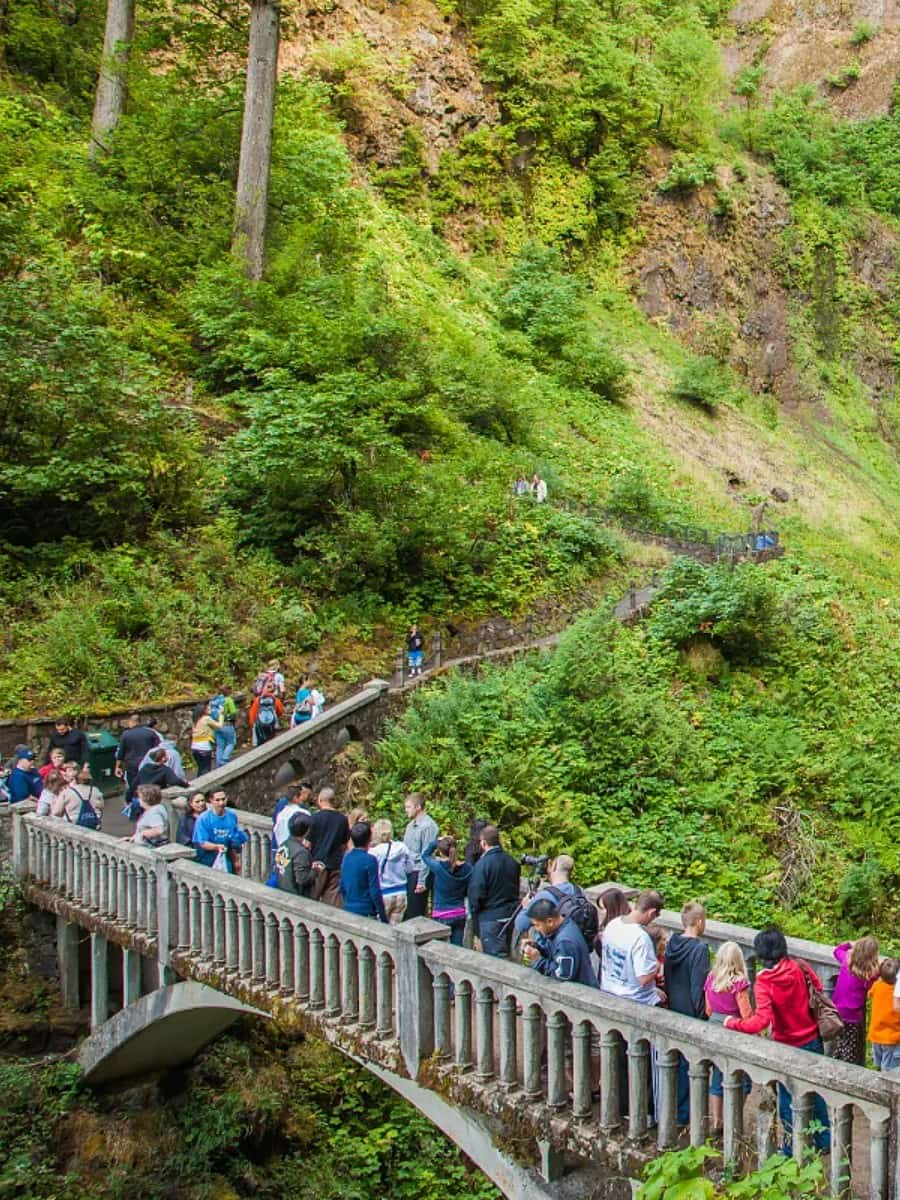

Beyond the viewpoint. While many visitors only see the falls from the base, I continued hiking the 1.2-mile trail (gaining 700 feet in elevation) to reach the top of the falls. The switchback path offered increasingly dramatic views of the Columbia River Gorge, and reaching the upper viewpoint platform allowed me to peer over the edge and watch the water begin its dramatic plunge.
| Multnomah Falls Information | Details |
|---|---|
| Height | 620 feet (189 meters) |
| Hiking Distance to Top | 2.4 miles round trip |
| Elevation Gain | 700 feet |
| Facilities | Lodge with restaurant, gift shop, restrooms |
| Parking Fee | $5 timed reservation (May-September) |
| Operating Hours | Viewpoint accessible 24/7, lodge 9 AM-6 PM |
⭐ Best Activities
- Columbia River Gorge Waterfalls Tour from Portland – Discover the breathtaking beauty of the Columbia River Gorge on this half-day excursion from Portland that visits multiple spectacular waterfalls, historic Vista House, and provides stunning panoramic views of the river valley.
3. Mount Hood
Alpine majesty. I drove 90 minutes southeast of Portland to reach Mount Hood, Oregon’s highest peak at 11,249 feet and a stunning backdrop visible from many Portland viewpoints. This dormant volcano, with its year-round snowfields and glaciers, transforms from a summer hiking paradise to a winter sports destination with the changing seasons.
Timberline Lodge. My first stop was always the historic Timberline Lodge, a WPA project completed in 1937 and featured in the opening scenes of “The Shining.” I wandered through the massive hexagonal main hall with its 92-foot chimney, admiring the hand-carved wooden details and wrought iron work created by Depression-era artisans. The outdoor patio offered unobstructed mountain views that made every visitor reach for their camera.
- Year-round Mount Hood activities:
- Skiing and snowboarding (winter/spring)
- Alpine hiking trails (summer/fall)
- Mountain biking (summer/fall)
- Climbing (technical routes require experience)
- Scenic drives on the Mount Hood Scenic Byway
Scenic byway. Circling the mountain on the Mount Hood Scenic Byway, I discovered charming villages and stunning viewpoints. The historic town of Government Camp offered casual dining and equipment rentals, while the lavender farms and fruit orchards of the Hood River Valley provided a colorful contrast to the snow-capped peak looming above.
| Mount Hood Area | Distance from Portland | Highlights | Best Season |
|---|---|---|---|
| Timberline Lodge | 60 miles | Historic lodge, year-round skiing | All seasons |
| Trillium Lake | 62 miles | Reflective mountain views, fishing | Summer/Fall |
| Mirror Lake | 55 miles | Moderate hike with mountain views | Summer/Fall |
| Mt. Hood Meadows | 67 miles | Expansive ski resort | Winter/Spring |
| Hood River Valley | 65-80 miles | Fruit Loop farm stands, wineries | Spring/Summer |
⭐ Best Activities
- Quicksand Triangle Adventure Tour – Embark on a unique outdoor adventure exploring Portland’s mysterious “Quicksand Triangle,” where you’ll discover hidden natural wonders and geological formations with expert guidance and fascinating local stories.
4. Oregon Coast
Coastal escape. I made the 90-minute drive west from Portland to reach Oregon’s spectacular coastline, where dramatic headlands meet sandy beaches and charming towns. Unlike privatized beaches in many states, Oregon’s entire 363-mile coastline is public land, allowing unrestricted access to windswept shores perfect for beachcombing, tidepooling, and storm watching.
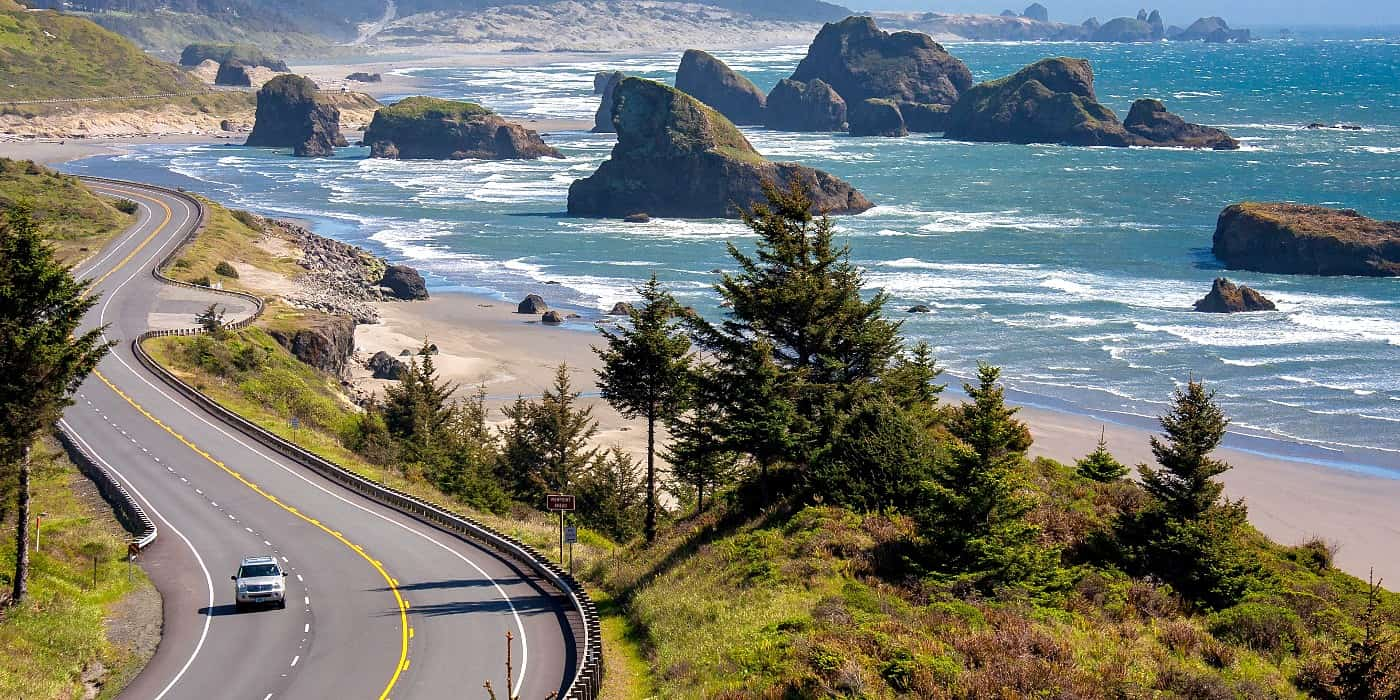
Cannon Beach. My favorite coastal destination is Cannon Beach, where the iconic 235-foot Haystack Rock rises from the shoreline like a natural monument. During low tide, I explored the colorful tidepools surrounding its base, discovering starfish, sea anemones, and hermit crabs in their natural habitat. The charming town offers art galleries, boutique shopping, and excellent seafood restaurants just steps from the beach.
Oregon Coast highlights:
-
- Ecola State Park (dramatic viewpoints)
- Oswald West State Park (surfing at Short Sands Beach)
- Tillamook Creamery (cheese factory tours)
- Three Capes Scenic Drive
- Seaside Promenade and historic carousel
Coastal towns. Each coastal community has its own distinct personality. I found Astoria rich in history with its Victorian architecture and maritime museums, while Pacific City offered a more laid-back vibe with its beachfront brewery and massive sand dune. Manzanita’s quiet charm and seven-mile beach provided a perfect escape from summer crowds found in larger towns.
| Coastal Destination | Distance from Portland | Highlights | Amenities |
|---|---|---|---|
| Cannon Beach | 80 miles | Haystack Rock, art galleries | Full services, upscale dining |
| Seaside | 80 miles | Promenade, family attractions | Arcades, aquarium, casual dining |
| Manzanita | 85 miles | Quiet beaches, Neahkahnie Mountain | Basic services, vacation rentals |
| Pacific City | 100 miles | Cape Kiwanda, dory boats | Brewery, moderate services |
| Astoria | 95 miles | Columbia River, Victorian architecture | Museums, breweries, full services |
⭐ Best Activities
- Oregon Coast Day Tour from Portland – Experience the spectacular Oregon coastline on this full-day excursion from Portland that showcases dramatic ocean vistas, charming coastal towns, and natural wonders like Haystack Rock, with plenty of stops for exploration and photography.
5. Sauvie Island
Rural retreat. I discovered Sauvie Island, a pastoral 26,000-acre gem just 10 miles northwest of downtown Portland, where the Willamette River meets the Columbia. This rural escape offers a perfect day trip with its mix of working farms, wildlife refuges, and public beaches – all connected by flat roads ideal for cycling.
Seasonal harvests. Each season brings different agricultural experiences to the island. I picked strawberries in June, blueberries in July, and filled my basket with peaches and blackberries in August. By fall, the island transforms with pumpkin patches, corn mazes, and harvest festivals that draw families from across Portland – Kruger’s Farm and Bella Organic are particularly popular for their festive atmospheres.
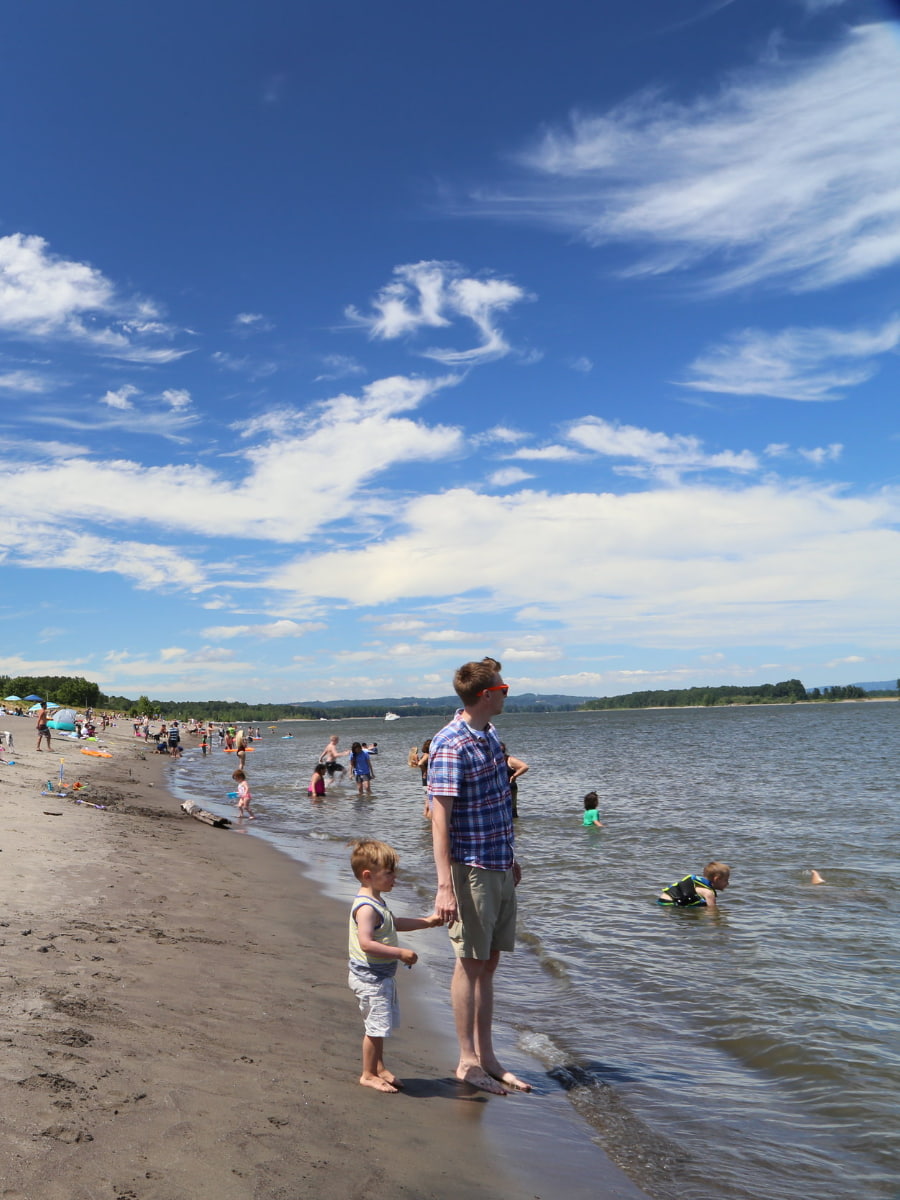


- Sauvie Island year-round activities:
- U-pick farms (seasonal fruits and vegetables)
- Birdwatching (over 250 species)
- Swimming at Collins Beach and Walton Beach
- Cycling the 12-mile island loop
- Kayaking the channels and sloughs
Wildlife viewing. Nearly half the island is protected as the Sauvie Island Wildlife Area, where I spotted great blue herons stalking the marshes and bald eagles soaring overhead. During winter migration season, thousands of snow geese, tundra swans, and sandhill cranes transform the wetlands into a birder’s paradise – I always bring binoculars and a camera with a zoom lens.
| Sauvie Island Attraction | Best Season | Activities | Notes |
|---|---|---|---|
| U-pick farms | Summer/Fall | Berry picking, pumpkin patches | Cash only at some farms |
| Collins Beach | Summer | Swimming, sunbathing | Clothing optional at north end |
| Wildlife Area | Year-round | Birdwatching, hiking | Parking permit required ($10) |
| Wapato Access Greenway | Year-round | Hiking, wildlife viewing | 2-mile loop trail |
| Island loop cycling | Spring/Summer/Fall | Biking on flat terrain | Limited shoulder in some areas |
FAQ
What are the best views of the city in Portland?
The Portland Aerial Tram is one of the best spots in Portland for panoramic views of the city, Mount Hood, and the Willamette River. Pittock Mansion and Washington Park also offer spectacular views within Portland city limits.
What fun things can I do every weekend in Portland?
Every weekend, you’re in Portland, you can explore Portland Saturday Market, catch Portland Timbers or Thorns soccer matches, and enjoy live music or art events around the city. There are always new activities in Portland’s neighborhoods and plenty of local events for visitors to Portland.
Where can I find the best coffee in Portland?
Portland is home to a vibrant coffee scene, with beloved Portland staples like Coava, Stumptown, and Heart Coffee Roasters offering some of the best in Portland. These places in Portland are favorite spots for locals and visitors to get a taste of Portland’s coffee culture.
What are the best day trips from Portland?
Some of the best day trips from Portland include the Columbia River Gorge, Mount Hood, and Willamette Valley wine country, all just a short drive from Portland. These destinations around Portland offer hiking, waterfalls, and scenic views outside of Portland city limits.
What are the top activities for kids in Portland?
Activities for kids in Portland include visiting the Oregon Museum of Science and Industry, exploring the Oregon Zoo, and playing at Laurelhurst Park. The Portland Puppet Museum is another fun and mysterious spot in Portland for families.
What are some must-see Portland landmarks?
Landmarks like the Portland Art Museum, Oregon Historical Society, and Pioneer Courthouse Square are at the heart of downtown Portland. The Portland Aerial Tram and the iconic St. Johns Bridge in north Portland are also favorite things for visitors.
What makes Portland events special during the summer?
Portland during the summer is known for the Portland Rose Festival, outdoor concerts, and food festivals that bring the city of Portland alive. Many events take place in the heart of Portland and showcase the best Portland has to offer.
